Ohio Civil War, WWI & II Show MEGA Historical Event
MANSFIELD, Ohio—
Bursting with Civil War, WWI, and WWII enthusiasts for a weekend packed with so much to see, two days were needed to enjoy all the special features.
The show was a true testament that our history is not forgotten, as thousands of guests filled the grounds looking for some Civil War to WWII historical education. Guests enjoyed hearing fun facts about the wars and were given an opportunity to see unique and rare memorabilia. They experienced living history encampments, cannon firing demonstrations, and even enjoyed singing along to period music. The show is a family event that should not be missed.
This was the 44th year for the grand event. The testimonials about the Show tell the real story;
National Register Battlefield Threatened by North Carolina Highway Interchange


Richland County Fairgrounds in Mansfield, Ohio, over the first weekend in May every year. Seven buildings full of military material from 1775 through 1945 form the venue.
Hats off to the Williams family that continues to manage and coordinate the Show. It takes a year, planning to contact all the dealers, and orchestrate all the added special features that have become crowd pleasers for young and old. The Williams family has a passion for history, and they come by it honestly. Don Williams originated the Show in 1977 with just a small aisle of tables and a dream to keep our history alive. The Show quickly grew to 750+ tables with all the added outdoor features, making it an event not to be missed.
The show’s favorite features
“Wonderful Show, Year in, Year Out – GO! – Joe
“Exceptional Event!” – Francie
“First time I attended, very enjoyable!” – Charlene
“The BEST Show in the Country” – Phil
It was all that and more, another successful year for both dealers and guests.
The Annual Ohio Civil War, WWI, and II Show is held at the

are the Civil War and WWII encampments that sprawl over the entire grounds. There were rows of cannon along the tent lines and fire pits set up for evening campsite story telling. You could hear soldiers marching in uniform step as drums beat out a traditional air. The still
KINSTON,
N.C.—The
Wyse Fork Battlefield, Kinston, N.C., some 4,000 acres of historically significant landscape is now threatened by a proposed construction project (TIP Project R-2553 (34460) for a new interstate (I-42) that will run from Raleigh to Morehead City. The planned North Carolina Department of Transportation (NCDOT) I-42 bypass includes an intersection that will destroy the core battlefield area as defined in the National Register.
The Wyse Fork Battlefield National Register District (NRD) application was submitted to the NC State Historic Preservation Office and filed as a NRD in 2015, federally designated as a NRD in 2017, and specifically honors North Carolina’s third largest Civil War land engagement; it has several other historical and legally protected entities as well. In specifics, it would eliminate or relocate the historic Cobb House, the Union headquarters and field hospital, as well as the entire left flank of Maj. Gen. Jacob D. Cox’s defensive line, the original intersection over which the armies fought, a 1781 Revolutionary War component, and portions of two other 1864 engagements within the NRD. There are also historically significant buildings and family graveyards. The existence of mass burials associated with the 1865 battle can be projected, based on the number of casualties, Union officer accounts, and current practices of interring those killed in action.
The Wyse Fork road junction is located on higher ground bordered several watercourses. The high ground is virtually surrounded by wetlands that dictated where the historical pathways that became roads traversed the landscape. The cross roads is part of a road network that minimized lower, swampy ground and provided
a solid surface for foot, horse, and wagon traffic in the past, just as it does for today’s motorized vehicles. Right-ofway acquisition is slated for 2023 so the final decision on impacting Wyse Fork has not yet been made.
On April 30, 2022, some 50 people, chiefly from eastern North Carolina, but others from as far away as Oregon, toured Wyse Fork NRD with specific attention paid to those areas most likely to be impacted by the project. Among the tour
group were several descendants of soldiers who fought at Wyse Fork, including Karen Nethercutt, a descendant of Colonel John Nethercutt, 66th North Carolina Infantry, who also served on General Hoke’s staff and rode through intense artillery and musketry almost into the Union entrenchments on March 10, 1865.

From current landowners and other local residents, it was apparent that oral traditions about the battle are still common and relate to places, people, and specific events that are incompletely recorded. At the road junction the tour group was treated to a living history presentation by Wilbur King, who portrayed his great great grandfather Sgt. John Parker Miller, Company H, 66th NC Infantry, who fought in the field just south of Dover Road/I-70 at Wyse Fork. He survived but was killed shortly after the war.
Chris Humphrey, NC State Representative for Lenoir and Greene Counties, came along on the tour, representing Lenoir and

Vol. 48, No. 6 48 Pages, June 2022 $3.50 America’s Monthly Newspaper For Civil War Enthusiasts 14– American Battlefield Trust 40 – Book Reviews 34 – Central Virginia Battlefield Trust 22 – Critic’s Corner 24 – Emerging Civil War 45 – Events 32 – The Graphic War 20 – The Source 16 – Through the Lens 18 – This And That 15 – Trivia 10 – The Unfinished Fight H Show . . . . . . . . . . . . see page 2 H Interchange . . . . . . . . . . . see page 6
Proposed route laid over Wyse Fork Battlefield National Register Core Area.
NC House of Representative
Chris Humphrey and Karen Nethercutt, descendant of Colonel John Nethercutt.
Reilly’s Battery during one of the firing demonstrations. (Tom Scott)
Civil War News
Published by Historical Publications LLC
520 Folly Road, Suite 25-379, Charleston, SC 29412 800-777-1862 • Facebook.com/CivilWarNews mail@civilwarnews.com • civilwarnews.com
Advertising: 800-777-1862 • ads@civilwarnews.com
Jack W. Melton Jr. C. Peter & Kathryn Jorgensen
Publisher Founding Publishers
Editor: Lawrence E. Babits, Ph.D.
Advertising, Marketing & Assistant Editor: Peggy Melton
Columnists: Craig Barry, Salvatore Cilella, Stephanie Hagiwara, Gould Hagler, Tim Prince, John Sexton, and Michael K. Shaffer
Editorial & Photography Staff: Greg Biggs, Michael Kent, Bob Ruegsegger, Gregory L. Wade, Shannon Pritchard, Carl Sell Jr., Joan Wenner, J.D.
Technical Consultant: Heath Jones
Civil War News (ISSN: 1053-1181) Copyright © 2022 by Historical Publications LLC is published 12 times per year by Historical Publications LLC, 520 Folly Road, Suite 25 PMB 379, Charleston, SC 29412. Monthly. Business and Editorial Offices: 520 Folly Road, Suite 25 PMB 379, Charleston, SC 29412, Accounting and Circulation
Offices: Historical Publications LLC, 520 Folly Road, Suite 25 PMB 379, Charleston, SC 29412. Call 800-777-1862 to subscribe.
Periodicals postage paid at U.S.P.S. 131 W. High St., Jefferson City, MO 65101.
POSTMASTER: Send address changes to: Historical Publications LLC 520 Folly Road Suite 25 PMB 379 Charleston, SC 29412
Display advertising rates and media kit on request. The Civil War News is for your reading enjoyment. The views and opinions expressed herein are those of its authors, readers and advertisers and they do not necessarily reflect the official policy or position of Historical Publications, LLC, its owners and/or employees.
P UBLISHERS :
Please send your book(s) for review to: Civil War News
520 Folly Road, Suite 25 PMB 379 Charleston, SC 29412
Email cover image to bookreviews@civilwarnews.com. Civil War News cannot assure that unsolicited books will be assigned for review. Email bookreviews@civilwarnews.com for eligibility before mailing.
ADVERTISING INFO:
Email us at ads@civilwarnews.com Call 800-777-1862


MOVING?
Contact us to change your address so you don’t miss a single issue. mail@civilwarnews.com • 800-777-1862
SUBSCRIPTION RATES
U.S. Subscription
H Show. . . . . . . . . .
from page 1
of the night came alive each morning with a grand opening ceremony from the infantry units, Civil War, and Revolutionary War reenactors who combined to produce a spectacular early morning sight for show visitors. Civil War and World War II Living History Encampments showed visitors how soldiers survived and endured life during such difficult times.
Other added outdoor attractions also educate and entertain visitors. Guests enjoyed period music by the Camp Chase Fife & Drum Corps that got their toes tapping.
Abraham Lincoln presented the Gettysburg Address, the Brigade of the American Revolution, along with Confederate and Union Civil War Infantry, fired weapons and marched perfectly on line as cannon roared. An extra treat this year was an educational presentation by the WWII U.S. 801st Medical Air Evacuation Squadron. Hearing how the squadron took care of casualties and how they evacuated the
wounded in such challenging conditions, is quite a history lesson.
Reenactors took to the field in period dress to give an educational and entertaining demonstration on the artillery firing line. The artillery is a unique portion of the Ohio Show, the only show of its kind in the United States, that showcases artillery field pieces from the Revolutionary War through World War II. Visitors enjoy seeing full-scale cannon, limbers, caissons, and shells
along with an eight gun, cannon firing line. The cannon fire could be heard for miles and the guns sent flames and smoke bellowing across the grounds.
In addition to the initial show celebrating Civil War, World War I and World War II exhibitors were added due to guests’ expanding interests in our military history. A rare encampment set up in the large barn showed complete living quarters, uniforms, weapons, and ammunition of more recent wars. U.S. and German soldiers walked

2 CivilWarNews.com June 2022 2 June 2022 CivilWarNews.com
rates are $41/year, $71/2 years, digital only $29.95/year, add digital to paper subscription for only $10/year more. Subscribe securely at CivilWarNews.com
Brian McNamara with the 41st Ohio Volunteer Infantry. (Tom Scott)
Gerald Payn as Abraham Lincoln. (Tom Scott)
Brian McNamara and Robert Stope fireside chat.

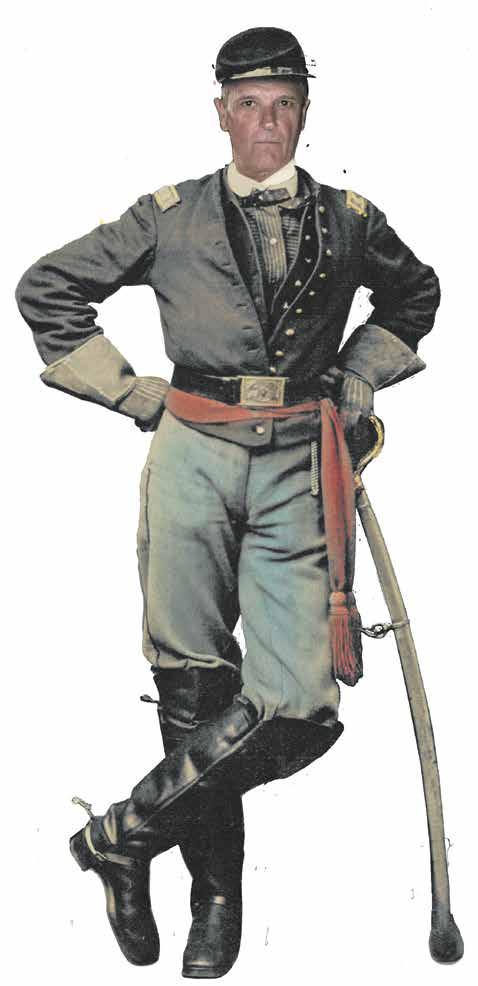








Mike Kent & Associates, LLC • PO Box 685 • Monroe, GA 30655 770-630-7296 • Mike@MKShows.com • www.MKShows.com Military Collectible & Gun & Knife Shows Presents The Finest Williamson County Ag Expo Park 4215 Long Lane Franklin, TN 37064 Dec. 3 & 4, 2022 Middle TN (Franklin) Civil War Show South Carolina State Fairgrounds 1200 Rosewood Drive Columbia, SC 29202
11 & 12, 2022 Columbia Gun & Knife Show Promoters of Quality Shows for Shooters, Collectors, Civil War and Militaria Enthusiasts WNC Ag Center 1301 Fanning Bridge Road Fletcher, NC
8 & 9, 2022 Asheville Gun & Knife Show Exchange Park Fairgrounds 9850 Highway 78 Ladson, SC 29456
10 & 11, 2022 Charleston Gun & Knife Show Exchange Park Fairgrounds 9850 Highway 78 Ladson, SC 29456
4 & 5, 2022 Charleston Gun & Knife Show
June
July
Sept.
June
H Show
from page 2
among the crowd and answered questions from visitors who wanted to learn more. U.S. WWII GI’s and German soldiers blank fired various military weapons in demonstration.
Even the food truck folks have a ball meeting people from across the U.S. “This is the most exciting and largest event we have, and we meet many people from several states” “We even met a dealer who traveled here from Hawaii. That’s amazing!”
The local community is excited about this annual event; hotels are filled, restaurants are packed, and visitors enjoy area attractions. The Show is happy to support the Mansfield community.
The educational displays never disappoint. Exhibitors were invited to participate in a display competition, in which 21
dealers showcased their unique items with their historical facts in outstanding visual display. Award winners this year included Elizabeth Topping for Best Educational with her display

“Heroines of the Hearth;” Chuck Baylis received the Best Arms or Equipment award for his display

“M1 Carbines;” Ray Zielin received Best Photographic for his display of the 52nd Illinois Infantry images; and Cathy Spencer received Best World Wars award for a great display entitled “American Observation Balloon Service in WWI.” Three different Judges Choice Awards were presented. One went to Richard Wolfe for his display of the “1st West Virginia Infantry;” a second Judges Award was presented to Bill Combs for his display entitled “Cuba Libre;” while Bret Schweinfurth shared a great display entitled “The Invalid Corps.” The Best Artillery
award went to Matt Switlik for his outstanding “Iron Age Field Guns.”
The Best of Show Award for 2022 went to Phil McCoy for his display of rare photographs and memorabilia of John Hunt Morgan and his raiders, entitled “John Hunt Morgan.” This display was a hit for all collectors and guests who were pleased to see such a grand presentation with a special link to Ohio where Morgan’s “Rebel Raiders” were finally captured in 1863.
Thanks to all the dealers who display their collections, memorabilia, and educational materials.
The Ohio Show is happy to have such a variety of quality displays for all to enjoy.
Make the Ohio Civil War Show your travel destination each year. Take time to step back in time!

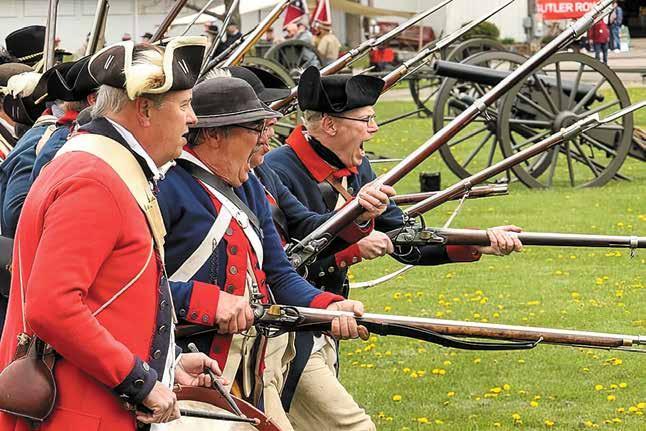
4 CivilWarNews.com June 2022 4 June 2022 CivilWarNews.com
Award winners in order L to R: Matt Switlik, Richard Wolfe, Elizabeth Topping, Ray Zielin, Phil McCoy, Bret Schweinfurth, Cathy and Mark Spencer, Chuck Baylis, and Bill Combs. (Kayley Boettner)
Revolutionary War reenactors under Commander Bob Cairns.
Camp Chase Fife & Drum. (Tom Scott)
Best of Show Award – Phil McCoy (center) with Williams family Show Directors’ Teresa Drushel, Wayne Williams, and Greg Williams. (Kayley Boettner)
Mark your calendars for May 6–7, 2023. The show will be held in the same location, the Richland County Fairgrounds, located in Mansfield, Ohio.
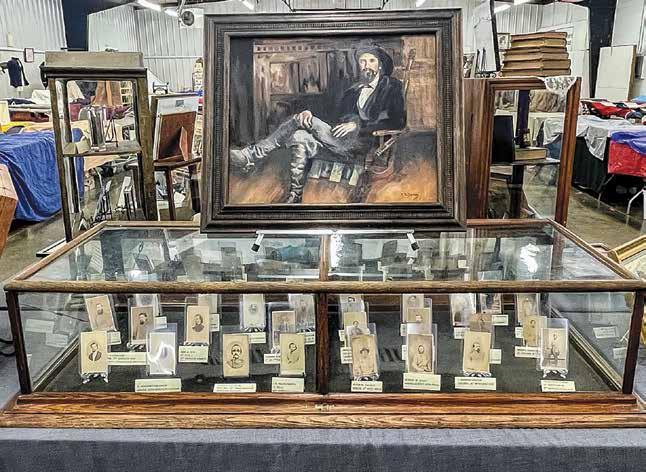
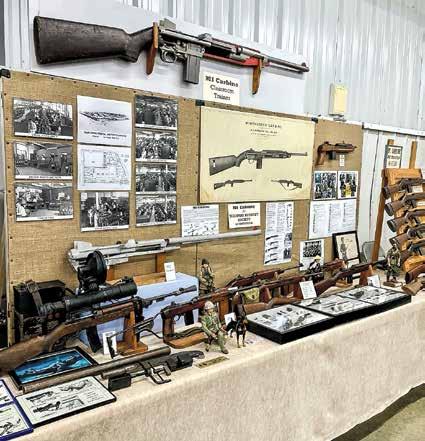
Visit us on Facebook – Ohio Civil War Show and find out more information and stay up to date at: OhioCivilWarShow.com.



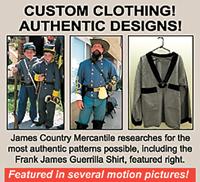
5 June 2022 5 June 2022 CivilWarNews.com CivilWarNews.com Visit our new website at CivilWarNews.com 19th CENTURY LIVING HISTORY! James Country MERCANTILE 111 N. Main Liberty, MO 64068 816-781-9473 • FAX 816-781-1470 www.jamescountry.com Ladies – Gentlemen Civilian – Military • Books • Buttons • Fabrics • Music • Patterns • Weapons Mens, Ladies and Children’s • Civilian Clothing • Military Clothing • Military Accessories • Accoutrements Everything needed by the Living Historian! Our Clothing is 100% American Made! The home of HOMESPUN PATTERNS©
Right: Chuck Baylis received the Best Arms or Equipment award for his display “M1 Carbines.” (Kayley Boettner)
Cathy Spencer’s display entitled “American Observation Balloon Service in WWI. (Kayley Boettner)
Phil McCoy’s Best of Show Award, a display of rare photographs and memorabilia of John Hunt Morgan and his raiders, entitled “John Hunt Morgan.” (Kayley Boettner)
Artillery at first light. (Kayley Boettner)
Greene Counties. He was very interested in the battle and the story of preserving the hallowed ground. “I think we’re getting their attention,” he said, referring to local efforts to ensure the battlefield survives as heritage tourism is a major revenue source for Kinston and Lenoir County. Mr. Humphrey recommended continuing to send letters to the North Carolina DOT about preserving the battlefield by altering the right-of-way.
1781
In the earlier fighting at Wyse Fork, British soldiers battered local militiamen, Major James Craig, 82nd Regiment of Foot, was commandant of the British forces occupying Wilmington, N.C. During the late summer 1781 Craig announced forfeiture of all property belonging to anyone who did not swear allegiance to King George III. He included prison and/or execution as penalties to encourage Patriots to reclaim their British citizenship. At the end of July, Craig left Wilmington heading for New Bern with his 82nd Foot, a detachment of artillery,
and Captain John Gordon’s NC Independent Dragoons. Several skirmishes ensued; largely hit and run raids conducted by local militiamen who could not engage in a long fight because they were short of ammunition. Two skirmishes, on August 16, 1781, and August 21, occurred within the boundaries of the Wyse Fork NRD when approximately 150 Carolina militiamen tried to stop Craig but were scattered by Craig’s Provincial dragoons. The number of casualties is unknown but probably low; Craig turned east, fought his way into New Bern and occupied the town for two days. Then the British returned to Wilmington, fighting another skirmish at Wyse’s Fork. At least one, if not both, engagements fall well within the core National Register District where heavy 1865 fighting also occurred close to the road junction. The general linear orientation of two 18th century bullet distributions is perpendicular to, and along, the British Road approaching Wyse Fork from the south. The name of the road traditionally derives from British Army use during the Revolution.
During the 1970’s, and again
in the summer of 2021, whilst collecting artifacts relating to the 1865 battle, local metal detectorists identified two linear distributions of round lead balls and other 1781-era artifacts within the National Register District. The linear distribution of the artifacts indicated a military event. The two round ball sizes (ca. .72 and .634-645 inch) reflected standard bullets larger than Civil War sizes for the caliber .75 British Brown Bess (at least 10) as well as the .69-inch French muskets (117 bullets) arming Patriot militia and Continental troops after 1779. The total number of bullets, plus buckshot used in buck and ball rounds by both sides, and associated artifacts including coins, made it possible to attribute their presence to the fight against Craid’s Punitive Expedition. A caveat should be noted here. The weaponry of both Union and Confederate regiments is known; most Civil War infantry used elongated rifle bullets of the Minié types in calibers .58, .577, and .54. Probable Civil War round projectiles from Wyse Fork also include some round balls but these are much less pitted than the probable Revolutionary War examples found at Wyse Fork. More, less pitted round balls also came from other areas of the Wyse Fork NRD and may indicate Confederate use.
1865 – The Battle of Wyse Fork
There were at least two Civil War engagements at Wyse Fork prior to the better known 1865 battle. Both 1864 fights occurred in the NRD Core Area, as the combat ranged from the road junction west to Southwest Creek. Most of this skirmish was centered on the Dover


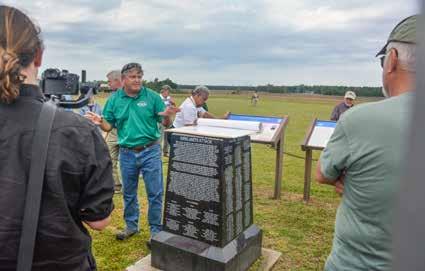


Road (modern Route 70) but it expanded around Kelly’s (in 1864, Jackson’s) Mill Pond where a bridge crossed Southwest Creek. The battlefield’s core area was specifically defined to include the mill and strong Confederate entrenchments that guarded the stream crossing and extended to the nearby Neuse River.
Briefly, the last and largest Wyse Fork engagement took place from March 8-10, 1865. It was an attempt by the Confederates to stop a Union force coming from New Bern to reinforce Sherman’s two armies marching into North Carolina. While often seen as a prelude to the even larger March 19-21 Battle of Bentonville, the fighting at Wyse Fork stands on its own as one of the last Confederate offensive efforts.
On March 8, 1865, General Robert F. Hoke’s Confederate Division conducted a flank attack that destroyed a Union brigade and captured over 800 Yankees
just west of Wyse Fork. March 9 was spent probing for weak spots in the Union defensive line anchored at Wyse Fork; the Southern attacks were foiled by Federal infantrymen moving on shorter, internal routes behind their main battleline. On March 10, Hoke attacked again, this time against Union forces aligned along the Dover Road at Wyse Fork. The Federals numbered two well dug in divisions supported by a dozen cannon. As the Confederates closed in on their defenses, unengaged Union troops advanced against Hoke’s right flank and opened a devastating fire into the 42nd North Carolina that helped cause the attack’s failure. Simultaneous attacks against other parts of the Union position were thwarted by rapidly shifting temporarily unengaged troops to threatened areas where they held off the assaults. The Confederate forces
6 CivilWarNews.com June 2022 6 June 2022 CivilWarNews.com
were withdrawn across the Neuse
Dennis Harper orienting tour with map showing documented military positions and recovered artifacts.
Map detail showing linear distribution of probable Revolutionary War bullets just above Kirkland attack arrow.
Wade Sokolosky discussing Confederate attack. Monument partially paid for by an Ohioan, lists known Confederate casualties.
Wilbur King gestures while discussing Confederate assault that came from the left background.
H Interchange. . . . . . . . . . from page 1
Wade Sokolosky orienting tour at First Day's fighting. The Cobb House is in the right background.
George


The
Children

Ticket


The









7 June 2022 7 June 2022 CivilWarNews.com CivilWarNews.com Gettysburg National Military Park Museum & Visitor Center THE OFFICIAL START TO YOUR GETTYSBURG VISIT Proceeds from tickets and other purchases in the Museum & Visitor Center benet Gettysburg National Military Park and Eisenhower National Historic Site. See the Film. Experience the Cyclorama Explore the Museum Tour the Battleeld with a Licensed Battleeld Guide. Connect with National Park Service programs Visit the Gettysburg National Cemetery. Journey to our historic sites For tickets and current hours, call 877-874-2478 or visit GettysburgFoundation.org THE GETTYSBURG FOUNDATION PRESENTS: Historic Sites and Experiences GET TYSBURGexplore Eisenhower National Historic Site reopens home tours May 27, 2022. Tour the rst and only home that President Dwight D. and First Lady Mamie Eisenhower owned. Get an intimate perspective of their home life. Appreciate the home’s original furnishings and décor. See the putting green, gardens, teahouse, cattle barns and skeet range. Open Thursdays – Mondays, 10 a.m. – 4 p.m. Access via shuttles departing the Gettysburg National Military Park Museum & Visitor Center each hour 9:30 a.m. – 3:30 p.m. (Shuttles begin at 10:30 a.m. on May 27.) Home tours closed Tuesdays and Wednesdays (no shuttles). For tickets and current hours, call 877-874-2478 or visit GettysburgFoundation.org
Spangler
Farm & Field Hospital
best surviving example of a corps-level eld hospital from the Battle of Gettysburg Living historians make history come alive at this family farm suddenly transformed into a Civil War eld hospital in July 1863. Open summer weekends and for special events.
Summer Season Opens June 10 – 12, 2022
of Gettysburg 1863
family-friendly NEW interactive children’s
museum
Gettysburg’s most
history
Explore the stories of Gettysburg through experiences of children who lived here during the battle. Engaging rst-hand accounts and interactive exhibits bring stories to life.
to the Past –Unforgettable Journeys
NEW
experience
Gettysburg Lincoln Railroad StationTM
1863.
Buying and Selling The Finest in Americana 11311 S. Indian River Dr. • Fort Pierce, Florida 34982 770-329-4985 • gwjuno@aol.com George Weller Juno
virtual reality
at the
Travel back to
Meet some unlikely station occupants. Hear stories of their experiences during the aftermath of the battle. Now Open
River overnight.
In the March 10 attack against the well dug in Yankees, the 42nd North Carolina lost a musician who became very famous during the late 1950’s. His name was Thomas Dula. In the Kingston Trio’s best-selling ballad about the soldier, they called him Tom Dooley. There are many similar, but too numerous to include here, stories about less famous participants in the fight.
1865 Burial Sites (Mass Graves)
Casualty totals for the two sides are difficult to reconcile. Information suggests there were
about 4,000 casualties of all sorts including prisoners of war.

Captain J. Madison Drake, 9th New Jersey Infantry, reported that his regiment buried over 800 Confederates and 71 Federals. Regimental histories do not mention where these bodies were interred, but they noted the Confederates made seven attacks on March 9, and eleven on March 10. On March 11, the dead were buried in trenches dug in close proximity to the various clusters of the fallen; most were between the Lower Trent and Central roads, from the railroad south to beyond Wyse Fork. A mass grave is postulated immediately southwest of the present Wyse
Fork intersection. Both areas saw heavy fighting during the battle and other unreported graves must be presumed to exist in front of the Union positions.
The Native American Military Presence
An ironic aspect to the Wyse Fork NRD’s historical component is that Tuscarora Indians, a tribal group ancestral to North Carolina fought within the NRD on at least three occasions. Following their defeat in the 1711 Tuscarora War, the tribe migrated north and became the sixth nation in the Iroquois Confederacy. Company D, 132nd New York Infantry, was recruited during the spring and early summer of 1862. Lt. Cornelius C. Cusick successfully recruited over two dozen Native Americans for the company; including Isaac Newton Parker, a Seneca, whose brother Ely ended the war as a brigadier general on Ulysses Grant’s staff. Often called the “Tuscarora Company,” the unit had naturalized and native born Americans of European ancestry as well.
In late December 1862, the 132nd NY Infantry was ordered to New Bern, N.C., the same area their ancestors had occupied until 1711. The regiment performed a variety of duties, including manning outposts around New Bern and participating in patrols. Their first mission into the interior saw them as part of an 1864 exploratory raid on Kinston. Company D’s part took them to Jackson’s Mills, less than two miles west of Wyse Forks and within the NRD core area.
On June 21, 1864, the
Tuscarora Company attacked and took the Confederate outpost at Jackson’s Mills, manned the entrenchments, then started intercepting messengers traveling to and from Kinston. Among their prisoners was Colonel Nathaniel Folks, 65th NC Infantry. In the meantime, another Union element attacked Wyse Fork and drove that outpost toward Kinston and the Tuscarora Company blocking their way. They started capturing the fleeing Yankees, one of whom paraphrased a line later used in Clint Eastwood’s movie, The Outlaw Josie Wales, by saying “No one but a Yankee could play me such a clever trick as that.”
Eventually three 132nd New York companies captured five officers, 51 enlisted men, and a wagon train, plus killed or wounded another 20. When Kinston was seen as too strong a position, the expedition returned to the New Bern area June 23. The Tuscarora Company returned in December 1864 and skirmished along the Dover Road from Wyse Fork to Jackson Mills.
The 132nd returned in March 1865 and were engaged in skirmishing on March 6; on March 7, they got into a hot skirmish at Jackson’s Mill Pond where they had fought the summer before. As Union units were shifted around, the Tuscarora Company was positioned in various places in the Federal defensive line, where they held off desperate Confederate attacks. The Iroquois infantrymen in 132nd New York were fighting on their ancestral land against the descendants of those who had forced them to leave over 150 years earlier. Wyse Fork was their last battle and they held firm, having fought, this time successfully, on ancestral tribal land.
The I-42 interchange
Of multiple known proposals for the highway, most were situated well away from the Wyse Fork battlefield; however the currently planned route and its interchange entrances and exits affect the core battlefield area as well adjacent wetlands requiring permitting action from federal agencies other than the National Register. Lack of federal funding would tend to negate any federal requirements for considering cultural resources, which seems to be precisely why NCDOT is not using Federal money. In turn that means that North Carolina citizens will pay for the destruction of their common heritage with little more than lip service being paid to avoid damage. A March 23, 2022, statement by a NCDOT spokesperson states that the entire

project is state funded (Heather Lane, Contact US NCDOT). That statement is not accurate as the entire project is federally funded EXCEPT the Wyse Fork interchange.
While federal funding requires mitigation of adverse impacts under numerous cultural resource preservation laws, the project also requires federal approval from agencies overseeing environmental considerations prior to construction. Before those agencies can issue their approval, mitigation of adverse impact to cultural resources must be undertaken under the provisions of Executive Order 11593, Archaeological Resources Protection Act (ARPA) and National Environmental Policy Act (NEPA). Thus, if the I-42 interchange affects the Wyse Fork NRD, and requires approval from federal agencies, including the U.S. Army Corps of Engineers, even if not federally funded, Section 106 requirements about cultural resources (the battle’s artifactia legacy) must be met. This requirement is true for any stretch of I-42 requiring permitting actions whether it is federally or state funded. North Carolina was applying these same laws as early as 1975 under the aegis of the A-95 Review Process run through the Department of Cultural Resources.
As a caveat to how serious the NC DOT danger to Wyse Fork National Register District is, one example should suffice. NC DOT constructed a bypass (I840) around northern Greensboro within the last four years. In complying with Federal cultural legislation, the DOT contracted with a competent, experienced professional archaeologist to conduct a cultural resources survey but apparently stipulated that the survey be conducted using test pits at certain intervals. The survey found no 18th century artifacts despite being immediately north of the central axis of the 1781 Battle of Guilford Courthouse NRD and immediately south of a grave site that contained bodies of three Continental soldiers killed on March 15, 1781. The rightof-way zone between the NPS border and the grave obviously should have been considered as a battlefield and surveyed using appropriate methods, including metal detecting along transects spaced less than eight feet apart across the entire area.
Between the Guilford Courthouse National Register property and the grave site, over 1,000 battle related artifacts were recovered by metal detectorists who made their collections
8 CivilWarNews.com June 2022 8 June 2022 CivilWarNews.com
Detail showing names of Company K, 42nd North Carolina, casualties.
Wyse Fork Battlefield core and study areas map.
The eastern portion of the
available to archaeologists in 2018. Between the artifacts and sworn pension applications filed by battle participants, it was possible to partially reconstruct how Delaware and Virginia soldiers held off a British attempt to outflank, and then cut off the Continental Army’s retreat. While NC DOT observed the specifics of the law, they utilized outdated methodology and found nothing, then proceeded to grade the North Flank fighting area, followed by paving, before opening the roadway for traffic ca 2021. As stated in several reports, “Shovel testing at maximum 50 foot intervals proved useless … the systematic metal detecting revealed the military occupation”
(Geier et l 2016:18). While Geier’s work was at a camp; a much shorter term, larger, and linear battlefield is even less likely to be found using test pits. The example is only one of many, ranging from the unintended consequence of removing a marl bed in front of Fort Fisher, permitting the fort’s

route through the
sea face destruction by the next hurricane, to the I-85 Yadkin River crossing where known sites were simply ignored. It would be a disaster for ever understanding details of what happened in 1865 and 1781 if any such ground alteration were to occur at Wyse Fork without a detailed archaeological study using now accepted methods to recover information. While wetlands and forests can be restored, an archaeological site can never be regenerated; once it is gone, it is lost forever. This is not a red line, or a line in the sand, that line was established with the National Register nomination.
An addendum to the NC DOT published plans should include the borrow pits required for building the ramps and overpasses. Obtaining fill dirt would add as much as another 40-60 percent of the total area disturbed by the interchange. One stated position

about the borrow pits is that folks are “not allowed to speculate on this.” If that quote is an accurate portrayal of NC DOT’s transparency and callousness, the National Register Battlefield is truly in great danger.
References Cited
Anonymous
n.d. Battle of Wise’s Fork March 8-10, 1865.
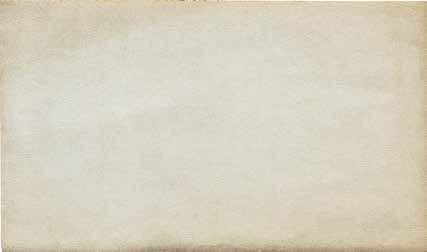
Bradley, Mark L.
1996 The Battle of Bentonville. Savas Woodbury Publishers, Campbell, California.
Collins, Donald
2021 The Return of the Tuscarora: Company D, 132nd New York Infantry and the Civil War in Eastern North Carolina. Civil War News 47:8:30-34 (August 2021).
Edwards, Tom J., and William
H. Rowland
2006 Through the Eyes of Soldiers: The Battle of Wyse Fork,
Kinston, North Carolina, March 7-10, 1865. Lenoir County Historical Association, Kinston, NC.

O’Kelley, Patrick
2005 “Nothing but Blood and Slaughter” The Revolutionary War in the Carolinas. Volume III. Blue House Tavern Press, Barbeque Township, NC.
Geier, Clarence, Joseph W. A. Whitehorne, and Alyson L. Wood
2016 Wesley Merritt at Cedar Creek: The Archaeological Delineation of a 1st Division Cavalry Camp, Army of the Shenandoah, October 1864. IN Preserving Fields of Conflict: Papers from the 2014 Fields of Conflict Conference and preservation Workshop, Columbia, SC. South Carolina Institute of Archaeology and Anthropology, Columbia, pp. 179-85.
9 June 2022 9 June 2022 CivilWarNews.com CivilWarNews.com Subscribe online at CivilWarNews.com
Proposed alternative highway route This upper map’s right side connects to the lower map’s left side.
proposed
Wyse Fork Battlefield National Register District.
CIVIL WAR AUTOGRAPHS LETTERS • DIARIES • STAMPS • CURRENCY Price List Online • Top Price Paid for Quality Material B. M. GREEN P.O. Box 1816N Kernersville, NC 27285-1816 (336)993-5100 • (336)993-1801 www.shop.bmgcivilwar.net bmgcivilwar@triad.rr.com
Deadlines for Advertising or Editorial Submissions is the 20th of each month.
Trotter Knapsack
Another common Confederate type knapsack was an imported version from Britain called the English pattern of 1854, or “Trotter pack,” an example of which is on display at Shiloh NPS Battlefield. The British knapsack was named after John Trotter, who designed his first version in 1805. There were two patterns of the Trotter; the first was made of lacquered canvas supported by a wooden frame so that even when empty the packs would “look
The second pattern was the British pattern of 1854, the socalled “Box Knapsack.” The Trotter pack was designed to be used with the wood frame inside as the corners were shaped to the contours of the frame. S. Isaac, Campbell & Company of London exported this version by the thousands to the Confederacy. According to surviving documents dating to November 1861:
“(General) Johnston’s forces may have received upwards of 3,500 sets of British
accoutrements and 1,000 or more knapsacks and mess tins. The single surviving invoice from the second of three known shipments of British equipments to Nashville during this time frame lists: 816 knapsacks & straps, and 816 mess tins & covers, 2,206 pouches [816 of which were described as “buff”], 1,266 buff pouch belts, 1,116 buff waist belts, 1,326 buff frogs, 1,916 buff rifle-musket slings [the buckle type], 1,434 ball bags [816 of which contained zinc oil bottles], 190 loose oil bottles, 500 box straps, 587 brushes, and 3,019 bayonet scabbards. Additional knapsacks and other equipment may have reached New Orleans around this same time period via the recaptured blockade runner Joseph H. Toone. Sailing from Cuba to the Gulf Coast, the vessel was loaded with a cargo of Enfield rifles and “knapsacks with and other stores when she was overhauled on October 4, 1861…Having [not] yet been sent north to the prize courts, the Toone was “recaptured by the enemy on the Mississippi River” on October 12, with apparently most of her cargo intact. In the months preceding its fall [in 1862], hundreds of [British] “knapsacks with straps” were issued at New Orleans, perhaps representing a portion of the Toone rescued cargo. Shipments of equipments to the west continued after the fall of Nashville and the convergence of the armies near the TennesseeMississippi border… Between May 2nd and June 15, [1862] McCown’s Division received some 1,800 knapsacks and sets of [British] accoutrements in addition to
hundreds of British muskets. At Corinth on May 25, 1862, Lt. John T. Buck, Ordnance officer for the 1st Division, 1st Corps, Army of the Mississippi, received 450 knapsacks and 30 enameled haversacks from McMain…and recorded the [total] issuance at Corinth of 13,432 knapsacks during the second quarter of 1862, the bulk of which were apparently received in the months of May and June. Domestic manufacture naturally predominated…A considerable amount of British knapsack hardware has been found in Northeast Mississippi…a series of additional relic finds and contemporaneous documents indicate the significant presence of English knapsacks either on Beauregard’s early summer departure from Corinth [approximately May 29, 1862] but the majority was seemingly associated with Sterling Price’s Army of the West, Van Dorn’s forces, and the Iuka-Corinth campaigns of Fall 1862.”
Sam Pittman of Co. K, 34th Arkansas carried one of the imported Isaac, Campbell & Co. Trotter wood frame knapsacks that he was issued in November 1862. He remembered distinctly how he lost it, “...And now came
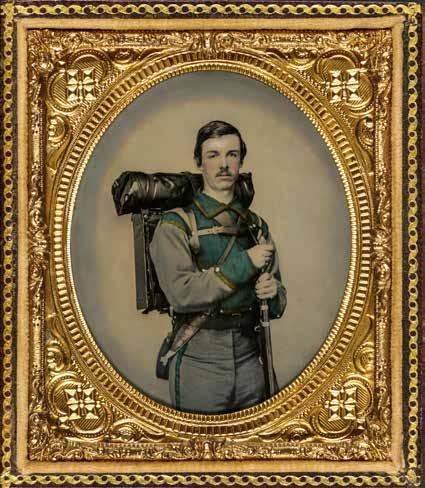

the parting with my old knapsack and all its equipage. The first shot that was fired after we rose up, cut the strap that bound the knapsack to my right shoulder, and it swung around and slipped to the ground. I had no time to think of it, but when I remember the torture it had been and the loss of all my worldly goods, camp treasure, etc. I bitterly lamented the fate that caused me to lug it all over that weary trip and then turn it over to the enemy.”
Probably not all his “worldly goods” were lost, but a substantial amount of gear could be packed in a knapsack. The contents often included an issue wool blanket, oilcloth, or gum blanket, and a spare pair of socks. In addition, a “housewife” or needle case… some soldiers claimed “this was the most important single article carried,” as the “ragged Confederate” is an enduring image but still a myth. The fact is that Southern men kept their clothes mended and replaced lost buttons whenever possible to maintain a presentable appearance. All military men were civilians before they were soldiers, and most Southern men of the Civil War-era were not shabbily dressed tatterdemalions.
An early war Confederate infantryman, who is thought to be a member of Company E of the “Lynchburg Rifles,” 11th Virginia Volunteers, based on other identified images. He poses with a US Model 1841 “Mississippi” rifle with sling, a Sheffield Bowie knife, canteen, Trotter box knapsack, blanket roll, and a holstered revolver. The hand tinted photograph is a very fine example by photographer Charles R. Rees of Richmond, Va., who was known for his high-quality photographic skills. The soldier is wearing a ring on the right pinkie finger. Liljenquist Family Collection of Civil War Photographs (Library of Congress).

10 CivilWarNews.com June 2022 10 June 2022 CivilWarNews.com
In addition, a muslin “huck” towel, toothbrush and a couple of small poke bags holding personal items like soap, a clay pipe, and a twist of Virginia tobacco. These were not all necessaries, but certainly were useful to have on hand.
The two long straps in the back go over the flap and secure at the bottom rear of the pack. It has been found that crossing these across the back of the flap helps to keep things from shifting while on the march. The two shoulder straps attach to the bottom front of each respective side. There is a small strap that goes across the chest to help distribute the load a little more evenly across the shoulders. Soldiers found out that with any new pack, the leather straps had to be broken in to avoid misery the first time out.
Confederate Arsenal knapsacks were apparently supplemented with the imported British Trotter packs. The Army of Tennessee carried an unknown, but apparently significant, amount of British equipment during General Braxton Bragg’s invasion of Kentucky in the late summer of 1862. What the figures suggest is that while some AoT soldiers lost or got rid of their knapsacks on the march, just as some lost or got rid of canteens, very few if you notice, blankets, greatcoats, and revolvers. However, a significant majority kept them for the entire campaign season.
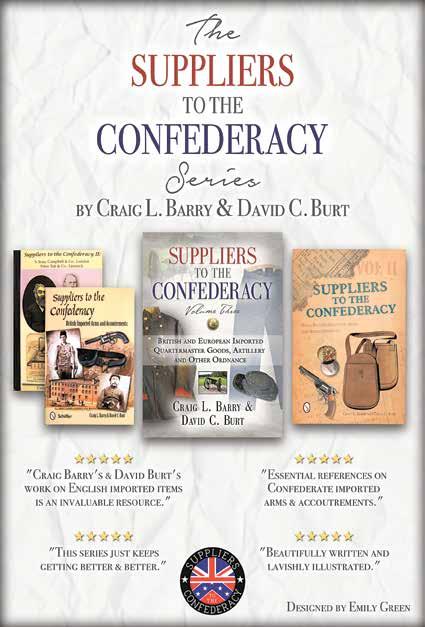
In the overwhelming majority of first-hand accounts researched for this article, surviving information in letters and diaries suggests that many Confederate soldiers on campaign preferred a knapsack to the alternative blanket roll and were disappointed when they were lost. The key to the utility of this piece of equipment was not to overload it to the point of discomfort. The “fresh fish” exhausted by their first long march received ribbing from the seasoned veterans, who had learned to make the difficult decisions of what had to stay and what could be discarded.


A Virginia soldier on campaign recalled, “The marching we had now done made all of us discard everything but necessaries, and we began to think that Ritchie Green did a very smart thing, when we left Richmond, to carry nothing in his knapsack but one paper collar and a plug of tobacco!”

The veteran Confederate soldier found it critical to learn how little he could get along with and still be somewhat content while on campaign. One Stonewall Brigade soldier recalled just after the retreat from Kernstown when they rested in the Luray Valley during mid-April 1862, “The day we reached here Gen. Jackson ordered all the wagons containing tents and extra baggage to the rear, and so far that we have never saw them again! This was a hard blow to
us, since we had gotten in the habit of smuggling many articles into our tents to avoid carrying them and when our tents left, they had dress coats, underclothing, etc., in them. “Old Jack” flanked us that time ”
The problem was, of course, that with the tents gone, so was most of the camping gear. It was not yet springtime in that part of Virginia, and it snowed during the week spent in the Luray bivouac. After recuperating about a week, the Second Corps departed for Port Republic, and just as before, they were under “light marching orders.” It would be about a month or six weeks before they were reunited with their baggage, a short while after the Valley Campaign concluded. In the absence of a knapsack, on campaign under Jackson’s version of light marching orders, the blanket was used instead. The blanket roll was fashioned very simply.
“The socks and drawers were placed in the blanket, the blanket
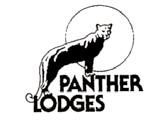
•
was rolled up with the rubber cloth on the outside, the ends drawn together and fastened with a short strap. To carry this we put it over the head and let it hang from the shoulder.”
Craig L. Barry was born in Charlottesville, Va. He holds his BA and Masters degrees from UNC (Charlotte). Craig served The Watchdog Civil War Quarterly as Associate Editor and Editor from 2003–2017. The Watchdog published books and columns on 19th-century material and donated all funds from publications to battlefield preservation. He is the author of several books including The Civil War Musket: A Handbook for Historical Accuracy (2006, 2011), The Unfinished Fight: Essays on Confederate Material Culture Vol. I and II (2012, 2013). He has also published four books in the Suppliers to the Confederacy series on English Arms & Accoutrements, Quartermaster stores and other European imports.
11 June 2022 11 June 2022 CivilWarNews.com CivilWarNews.com
Southeastern Civil War & Antique Gun Show 44th Annual Cobb County Civic Center 548 S. Marietta Parkway, S.E., Marietta, Georgia 30060 Free Parking Admission: $8 for Adults Veterans & Children under 10 Free Aug. 13 & 14, 2022 Saturday 9–5 Sunday 9–3
190 8 Foot Tables of:
Dug Relics
Guns and Swords
Books
Frameable Prints
Over
•
•
•
•
Metal Detectors
Artillery Items
Currency Inquires: NGRHA Attn: Show Chairman P.O. Box 503, Marietta, GA 30061 terryraymac@hotmail.com
•
•
REINFORCEMENTS MAKE ALL THE DIFFERENCE!!! Nobody even comes close to building a Civil War tent with as much attention to reinforcing the stress areas as Panther. Our extra heavy duty reinforcing is just one of the added features that makes Panther tentage the best you can buy! PANTHER Catalog - $2 Web: www.pantherprimitives.com 160 pages of the best selection of historical reenactment items from Medieval era to Civil War era. Includes over 60 pages on our famous tents and a 4-color section. Your $2 cost is refundable with your first order. SEND for copy TODAY The Best Tents in History P.O. Box 32N Normantown WV 25267 (304) 462-7718 Subscribe online at CivilWarNews.com
New Antietam Institute Holds Spring Symposium




 by Leon Reed, Special to Civil War News
by Leon Reed, Special to Civil War News
A new Antietam Institute, formed by a group of local historians and guides less than a year ago, held its first spring symposium on April 23 at Shepherd’s Spring Retreat Center on the C&O Canal just outside Sharpsburg, Md. The symposium featured presentations summarizing the latest studies of the 1862 Maryland campaign and its wider impacts, as well as a report on the history of the park.
Steve Stotelmyer, preservationist and author of several books on the Maryland Campaign, spoke first, on “Challenging the Historical Context of George McClellan.”
Dr. Emilie Amt, professor emerita of history at Hood College and author of the forthcoming Black Antietam: African American Experiences of the Civil War in Sharpsburg spoke on “Evolving Perspectives on Slavery, Emancipation, and Antietam.”
Keith Snyder, chief of resource
education and visitor services at Antietam National Battlefield, discussed “The History of the Antietam Battlefield” and gave a preview of the ongoing visitor center renovation project. D. Scott Hartwig, longtime Gettysburg park ranger and author of the forthcoming history of the battle, I Dread the Thought of the Place: The Battle of Antietam, spoke on “things I found interesting” in the eight years he worked on the book.
ready. Some regiments had lost half their strength and all were fatigued. “The Army of Northern Virginia is not going to suffer this level of disorganization until the Appomattox campaign.’” Hartwig observed that most commanders would have retreated up the Valley but Lee elected to stay around Leesburg. “Lee couldn’t read McClellan’s mind, but he took his measure.”
of Antietam, we need to work harder to bring their story to the fore.”
Cultural Resources director Keith Snyder reviewed the early development of the park, starting with the movement to create the national cemetery. This resulted in the first presidential visit, when Andrew Johnson attended the cemetery dedication in 1867.
new exhibits will be organized around five themes, conflict, terror, survival, freedom, and memory.
Hartwig addressed McClellan’s generalship, and Lee’s. He gave McClellan full credit for reorganizing the army in short order, moving it into the field, and winning two victories, South Mountain and Antietam. Hartwig pointed out that when Lincoln visited the army, he visited with every corps commander, asking if he dismissed McClellan, whether their loyalty would be with McClellan or the country. “He found they really liked and respected McClellan but their first loyalty was to the country.”
Hartwig concluded that both armies were in terrible shape after the battle, especially the Army of Northern Virginia. Of Lee’s whole army, A.P. Hill’s Division was the only one that was combat
Hartwig also pointed out that history isn’t confined to the experiences of generals and presidents. “McClellan didn’t experience the same battle as a soldier in Bloody Lane or Rufus Dawes in the Cornfield. … The heart and soul of the battle is the soldier’s lived experience, and those of people on the homefront.” He commented that historians are very fortunate to have access to such a rich record. “Probably everyone who had someone to write to wrote a letter right after the battle.”
Snyder noted that Antietam is a constructed landscape, the result of several factors. Two primary factors that affected the early development of the park were the return of veterans for reunion and remembrance activities and the increasing use of historic battlefields by the army for training.
Institute president Chris Vincent was very pleased with the Symposium. He noted that, “Over a third of our members attended the symposium; based on their feedback everyone thought it was an outstanding event. The presentations were excellent and the participants loved their interaction with the speakers.”
Professor Amt addressed several impacts of the Maryland campaign had on black residents. One was the interaction of 13th Massachusetts soldiers with enslaved and free blacks. “Many of these New England soldiers had no experience with slavery. What they saw in Maryland shaped their opinion. In many cases it turned them against slavery.” She noted that attitudes changed over time. “At first, the soldiers saw them as a curiosity. At first, many were uncomfortable.”
At this stage of the war, there were many blacks in non-combatant positions with both armies. They worked as blacksmiths, servants, cooks, musicians, teamsters, and in many other jobs.

Soldiers were also interested in escaped slaves. The Emancipation Proclamation bypassed the institution of slavery in Maryland and runaway slaves increased. Maryland slaves weren’t emancipated until the state took action in 1864. She concluded, “Given the centrality of slavery to the Civil War and the importance
The first monuments at Antietam were erected in the early 1880s, not too long after the first monuments at Gettysburg. But Antietam never developed the proliferation of monuments found at Gettysburg and other national military parks. One reason was that Antietam’s enabling legislation set a 600 acre maximum on land ownership, which made it difficult to find land suitable for a monument. Since new legislation eased that restriction in the 1980s, the park has worked with the Save Historic Antietam Foundation (SHAF) and other preservation groups to expand the size of protected land.
Snyder also told the audience that the park is finalizing a landscape management plan, that emphasizes preservation of the cemetery, preservation of the 1862 and the commemorative landscapes, and maintaining the solemnity of the site. The draft management plan will be available for comment in May or June. `
Before he finished, Snyder gave a brief overview of “our biggest project ever,” the ongoing renovation of the “Mission 66”era Antietam Battlefield visitor center. He said the goal is to “create an experience from the parking lot to and through the building” that will engage both the casual tourist and experts. The
The Institute has developed an impressive resume of activities in a short time, including an annual fall conference and spring symposium and an active publication schedule. Vincent said the Board members “are the most dedicated working group of volunteers that I have ever had the fortune to work with. From the beginning, we’ve organized committees to manage each of the Institute’s critical areas. Board members not only chair the committees but serve on others, so we’re able to synchronize efforts across multiple committees and activities.” Besides Vincent, the original organizing group included Brad Gottfried, Kevin Pawlak, James Rosebrock, Laura Marfut, James Buchanan, Matthew Borders, Gary Rohrer, and Mac Bryan.
Kevin Pawlak, publications chair, noted that educating the public about the 1862 Maryland campaign is the Institute’s key mission and said “one of the best ways to do that is through our publications.” The Institute has already published two issues of its biennial “Antietam Journal,” consisting of peer-reviewed articles on the campaign and its wider impact, and plans to issue a book a year. The first was Brigades of Antietam, which was “contributed to by many,” and edited by board member Bradley Gottfried.
More information is available at https://antietaminstitute.org.
12 CivilWarNews.com June 2022 12 June 2022 CivilWarNews.com Visit our new website at: HistoricalPublicationsLLC.com
D. Scott Hartwig.
Steve Stotelmyer.
Keith Snyder.
Dr. Emilie Amt.
Chris Vincent. All photos by Leon Reed.

















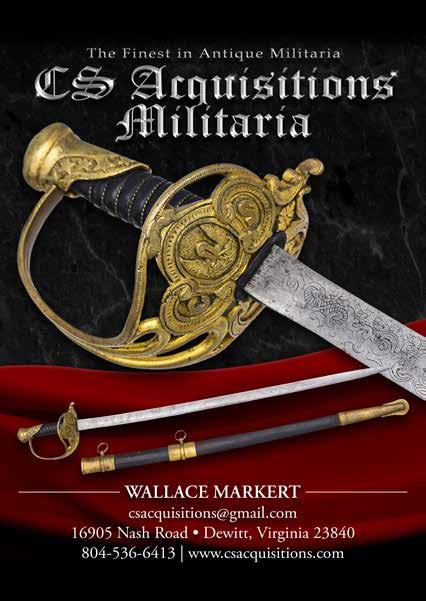
13 June 2022 13 June 2022 CivilWarNews.com CivilWarNews.com Greg Ton • P.O. Box 9 • Franklin, TN 37065 901-487-5944 • GTon1@aol.com Greg Ton Buying and Selling the Finest Confederate, Obsolete and Southern States Currency Since 1978 GregTonCurrency.com www.CollegeHillArsenal.com Tim Prince College Hill Arsenal PO Box 178204 Nashville, TN 37217 615-972-2418 www.CollegeHillArsenal.com Visit our new website at: HistoricalPublicationsLLC.com
June 26 Gettysburg Gathering Will Remember Historian
 Ed Bearss
Ed Bearss
gmail.com so that we may ensure adequate seating and refreshments. For those unable to attend in person, video of the event will be posted online by the Trust subsequently.
Student Leaders Inspire Their Peers to Study the Past Through Americana U
a lecture titled “Let Him Get an Eagle Button.” During the Civil War, African American soldiers, many who were formerly enslaved, accounted for 10 percent of the Union Army. Phan’s discussion awakened a great deal of curiosity in the perspective of the black soldiers who helped lead the Union to victory.
Grant at the Battle of Belmont on the Missouri/Kentucky border, John Hunt Morgan at the Battle of Buffington Island in Ohio, William T. Sherman at the Battle of Chickasaw Bayou in Mississippi, and J.E.B. Stuart at the Battle of Upperville in Virginia. This campaign marks the Trust’s first-ever preservation effort in the state of Ohio, as well as inaugural campaigns at Belmont and Chickasaw Bayou.
Most of the rural area remains as it was in 1862, when Maj. Gen. J.E.B. Stuart fought a bloody clash against Union Maj. Gen. Alfred Pleasonton’s cavalry. Help the Trust save these four storied battlefield sites at www. battlefields.org/save311.
The Bearss family invites the public to attend a celebration of the life of Edwin C. Bearss, to be held in Gettysburg, Pa., on June 26, 2022, which would have been his 99th birthday. The event will begin at 1:00 pm EDT and last about one hour. American Battlefield Trust President David N. Duncan will emcee the event, welcoming speakers who reflect on aspects of Ed’s amazing life and career: U.S. Marine Corps Lieutenant General (Ret.) Richard P. Mills; Jerome A. Greene, retired historian for the National Park Service; and O. James Lighthizer, president emeritus of the Trust.
The event will be held on land preserved by the Trust adjacent to the Seminary Ridge Museum, 111 Seminary Ridge, Gettysburg, Pa., 17325. The area will be tented, with seating available, plus water and light refreshments provided. Portable toilets and indoor restrooms will be nearby.
The Museum parking lots will be available with an area reserved for handicapped guests. Guests will be able to walk on paved surfaces except for a short section on grass leading to the tent where the service will be held. Please do not park at Lee’s Headquarters.
Please indicate your intention to attend by emailing billvodra1@
Americana U, the American Battlefield Trust’s new advocacy and networking program for college students, continues to grow through the efforts of its four dynamic campus leaders. Devoted to raising interest in America’s first 100 years and creating opportunities for historic site visitation, these students have been busy organizing events that inspire.
As Americana U cements itself on campuses across the nation, Lanier has his eyes set on an expanded awareness of the American Battlefield Trust and history’s vital role at Gettysburg College. “Our history teaches us problem-solving, moral character, responsibility, a respect for hard work, what can be done with limitless ingenuity, and the dangers of limitless ambition,” writes the campus leader. He hopes to gain even more student interest over the course of 2022 by hosting a diverse range of historically charged events.
The Trust Presses on to Save 311 Acres of Hallowed Ground Tied to Four Famous Generals
The Trust is continuing to charge forward with the preservation of 311 acres at four different Civil War battlefields. Better yet, each battlefield is tied to the career of a famous general: Ulysses S.
Thanks to key partnerships and anticipated federal and state matching grants, over 90% of the original purchase price of $2.7 million has been funded. Now, the Trust’s fundraising need sits at $206,237.
Opening the door to Trust efforts in the Buckeye State, Buffington Island was the scene of one of only two Civil War battles fought in Ohio. The targeted 117-acre tract marks the location where Brig. Gen. John Hunt Morgan and his 1,700 raiders advanced during the 1863 battle.
The campaign also aims to protect four Western Theater acres at Belmont, Ky., and Chickasaw Bayou, Miss. At Belmont, Brig. Gen. Ulysses S. Grant faced an early test as a battlefield commander. At Chickasaw Bayou, Maj. Gen. William T. Sherman failed in his bid to compromise Vicksburg’s Confederate defenses.
In the Eastern Theater, a 191acre tract at Upperville had long been a target for preservation.

American Battlefield Trust Color Bearers Distinguish Themselves Through Extraordinary Commitment

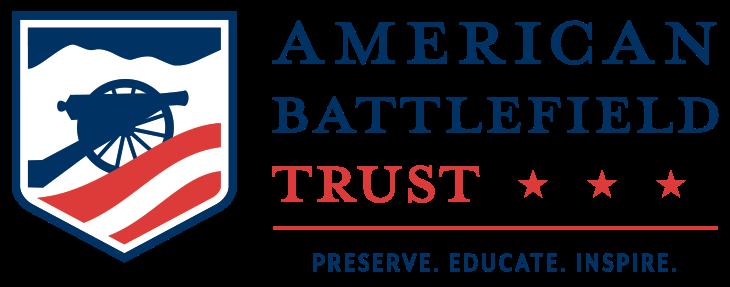
As their 19th-century counterparts were uniquely and appropriately acclaimed for their courage, American Battlefield Trust Color Bearers are honored for the extraordinary commitment they bring to the mission of saving our nation’s most hallowed ground.
Earlier this year, Gettysburg College’s Owen Lanier held his first event for Americana U; a battlefield walk done in partnership with the Civil War Institute at the college that attracted a group of 15 students. While traversing the battlefield landscape, they discussed the first day’s actions during the 1863 Battle of Gettysburg.

In April, Lanier organized an event featuring Camp Nelson National Monument Chief of Interpretation Steve Phan, who discussed the birth and growth of the U.S. Colored Troops in
Color Bearers are members who distinguish themselves by making an annual unrestricted contribution of $1,000+ or a recurring gift of $84 a month. Year after year, the Trust’s Color Bearers, who make up only about 3 percent of the organization’s total membership, donate nearly 50 percent of all the gifts it receives. If you make a membership gift of $1,000 or more, you can become a Regimental Color Bearer, and your name will be prominently listed in the Trust’s 2022 “Roll Call of Honor.” Color Bearers also receive an invitation to exclusive events at the Annual Conference each summer, plus the Color Bearer-only Donor Thank You Weekend each spring. Additional benefits include a special Color Bearer hat and a 15% discount at the Trust’s online store. Learn more at www.battlefields.org/ give/color-bearers.
The Nation’s 250th Anniversary in Sight, the Trust Announces Its Revolutionary Preservation Goal
After crossing the Old North Bridge during Concord’s Patriots’ Day Parade on April 18, the Trust announced its intent to preserve
14 CivilWarNews.com June 2022 14 June 2022 CivilWarNews.com
Americana U event brings students to the Gettysburg Battlefield. (Owen Lanier)
Color Bearers attend 2022 Donor Thank You Weekend in Columbia, S.C. (Buddy Secor)
General Sherman’s defeat at Chickasaw Bayou subverted the Union’s first attempt at capturing Vicksburg. (Mike Talplacido)
Portrait of Ed Bearss, 2017. (Buddy Secor)
2,500 acres of Revolutionary War battlefield land for America’s 250th anniversary. There for the announcement were representatives from the National Park Service, Daughters of the American Revolution, and Sons of the American Revolution.
As momentum builds toward the nation’s semiquincentennial commemoration in 2026, so will renewed interest in the stories of the earliest days of the nation’s founding. This effort will serve both to protect the Revolution’s battlefields from development and to highlight the stories of diverse patriots who fought for independence and democracy.
The Trust has identified tracts of land on dozens of battlefields that could be pursued towards this preservation goal, ultimately working with willing sellers over the next decade. While the endeavor is estimated at $39 million, the Trust will seek out federal, state, and local grants,

as well as private sector and individual donations, to bring this ambitious goal to the finish line.
American Battlefield Trust, National Park Foundation Contribute $2 Million Toward Little Round Top Rehabilitation

The major rehabilitation project to upgrade facilities and increase safety on Little Round Top received a major boost in April with a $2 million gift from the American Battlefield Trust and the National Park Foundation. The joint contribution was facilitated through philanthropist John L. Nau, III, who serves on the boards of both organizations and is the former chairman of the federal Advisory Council on Historic Preservation.
“There is power in place, a unique ability to inspire and teach that comes from being physically present at a site where great events transpired,” said Nau. “Ensuring that such locations are well-situated to offer visitors a meaningful and pleasing experience materially advances that goal.”
Work at Little Round Top will relieve chronically overcrowded parking areas, address erosion concerns, create accessible trail alignments, install new interpretation, and otherwise make the area more functional and appealing to visitors. The extensive project is expected to close the area to visitors for approximately 18 months, beginning in late spring of this year. Separate but related rehabilitation work to address erosion issues closed nearby Devil’s Den in late March. Visit battlefields.org for additional information.
By Lawrence E. Babits
Civil War Alphabet Quiz – Y as in... June


1. J.E.B. Stuart mortally wounded here
2. Confederates reused 1781 British fortifications at this town in 1862
3. USN tugboat used in Fort Sumter relief attempt, then on James River to 1865
4. Confederate raider who was a post-war bank robber
5. Prominent Alabama advocate for secession who died July 27, 1863
6. Maine-born CS general who led remnants of Hays’ Louisiana Brigade
7. Confederate defensive position guarding back door to Vicksburg
8. Texas song allegedly bout Melissa West, heroine of the Texas War of Ind.
9. Nickname of men who built 1864 Bailey Dams on Red River
10. He led the St. Albans, Vermont, raid
Answers found on page 47.
Statue
15 June 2022 15 June 2022 CivilWarNews.com CivilWarNews.com
Old North Bridge at Minute Man National Historical Park in Concord, Mass. (Youvathana Sok)
of Gouverneur K. Warren on Little Round Top. (Louis Quattrini)
– MAKER –LEATHER WORKS (845) 339-4916 or email sales@dellsleatherworks.com WWW. DELLSLEATHERWORKS.COM
Publishers/Authors Send your book(s) for review to: Civil War News 520 Folly Road, Suite 25-379 Charleston, SC 29412
Hancock Was Superb Battle of Williamsburg – Part II
“Play some marching tune! Play ‘Yankee Doodle,’ or any doodle you can think of, only play something!” – U.S. Gen. Samuel Heintzelman

As part of his 1862 Peninsula Campaign, U.S. Gen. George McClellan’s “Army of the Potomac,” brought 121,500 men, and gave them 13-inch mortars that could fire 200 pound shells, to attack Confederate defenses at Yorktown, Va.
According to C.S. Gen. Alexander Porter, at Yorktown the men crowded into the trenches had to either sit or crouch behind the parapet, in water up to their knees, from daylight until darkness permitted one to stand upright or to step outside the trench. The only rest at night was to sleep in the universal mud and water.

After his own inspection, C.S. Gen. Joseph Johnston concluded


that the works could not stand up to a Federal assault. Johnston was “determined to retire because we can do nothing here.... The enemy will give us no chance to win. We must lose. By delay we may insure the loss of Richmond, [Va.,] too.” While McClellan was transporting and positioning his siege guns, Johnston was figuring out how to evacuate the area, a maneuver that was compounded by the rain-soaked roads.
On April 30, McClellan test fired his guns and planned an attack to begin on May 4. His time to resist or evacuate having run out, Johnston ordered his 55,000 men to depart the evening of May 2. The infantry moved out as the cavalry kept the campfires burning and guns were fired. The men made dummies “to represent sentinels. These latter had placards on their backs highly complementary of course to the ‘incoming’ Yankees.” Unable to secure sufficient wagons, Johnston advised Gen. D.H. Hill that, “any powder you don’t shoot away had better be thrown away.” Left behind were fifty-six
naval guns from the Gosport Navy Yard in Norfolk that were too heavy to transport, especially over the wet roads.
Alexander later “recall[ed] that night’s march as particularly disagreeable. The whole soil of that section seemed to have no bottom and no supporting power. The roads were but long strings of guns, wagons, and ambulances, mixed in with infantry, artillery, and cavalry, splashing and bogging through the darkness in a river of mud, with frequent long halts when some stalled vehicle blocked the road. Then men from the nearest ranks would swarm in to help the jaded horses pull the vehicle out. Meanwhile, everything in the rear must halt and wait, and so it went on all night — a march of one or two minutes, and halt for no one could guess how long. The average time made by the column was under a mile an hour.”
Hill, whose men had occupied, then refurbished and altered the same Yorktown works built by British Gen. Charles Cornwallis during the American

Revolution War, reported, “Our Revolutionary sires did not suffer more at Valley Forge than did our army at Yorktown and in the retreat from it. Notwithstanding the rain, mud, cold, hunger, watching, and fatigue I never heard a murmur or witnessed a single act of insubordination.”
The Federals were so surprised the Confederates vacated Yorktown before the Federals attacked, they were slow to pursue. McClellan assigned Gen. Edwin “Bull” Sumner, II Corps, to command the pursuit. Sumner, detached from his own men, would also be handicapped by being unfamiliar with the area.
On May 5, 1862, during torrential rain, the Battle of Williamsburg was fought at the Confederate reserve fortifications, a line of 13 redoubts held by 10,350 Confederates against 9,000 Federals. C.S. Gen. James Longstreet had been ordered to delay the Federal pursuit. It was Longstreet’s first battle after three of his four young children died of scarlet fever at the start of the year and as a division commander. He spent most of the day in his headquarters at the College of William and Mary. Having issued his orders, Longstreet left the fighting to his subordinates, which was typical
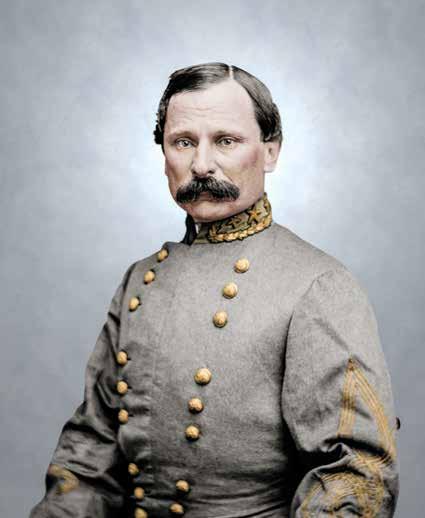
16 CivilWarNews.com June 2022 16 June 2022 CivilWarNews.com
Maj. Gen. Cadmus M. Wilcox, C.S.A., Colorization © 2018 civilwarincolor.com, courtesy civilwarincolor.com/ cwn. (Library of Congress)
Captured Confederate fort, occupied by General Hill; Yorktown, Va., 1862, Colorization © 2010 civilwarincolor.com, courtesy civilwarincolor.com/cwn. (Library of Congress)
Sandbag fortifications, soldiers in a Confederate battery, Yorktown, Va., Colorization © 2010 civilwarincolor.com, courtesy civilwarincolor.com/cwn. (Library of Congress)
confirmed, Hancock took 3,400 men and eight artillery pieces onto a ridge above a wheatfield.
C.S. Gen. Jubal Early could hear Hancock’s guns but could not see his position. Although Longstreet’s objective to cover the Confederate retreat past Williamsburg had been accomplished, Early and Hill requested and received permission to attack. It was growing darker as the assault began near 5 p.m. Yelling, “Bull Run” and “Ball’s Bluff,” the first companies charged, driving the Federal skirmishers behind the ridge crest. The Confederates continued running forward; when they came within 30 paces, Hancock’s entire battle line stood up and fired into them at a range of less than 25 yards.
the day; the Confederates were gone. McClellan, who arrived after the battle was over, had a victory to proclaim. The Battle of Williamsburg would be remembered in the North for Hancock’s charge. McClellan wired Washington, D.C., “Hancock was Superb!”
Sources:
✬ Sears, Stephen W. To the Gates of Richmond: The Peninsula Campaign. Houghton Mifflin Harcourt, 1992
✬ Bailey, Ronald H. Forward to Richmond: McClellan’s Peninsular Campaign. Time
Life Books, 1983
✬ Symonds, Craig L. Joseph
E. Johnston: A Civil War Biography. W. W. Norton & Company, 1994
Maj. Gen. Winfield S. Hancock, “Hancock the Superb.” Colorization © 2013 civilwarincolor.com, courtesy civilwarincolor.com/cwn. (Library of Congress) of his command style.
Confederate generals Cadmus Wilcox, 4th Brigade, and Richard H. Anderson, 2nd Brigade, were ordered to attack U.S. Gen. “Fighting Joe” Hooker’s III Corps from the line of redoubts. Wilcox and his 1,100 men crossed an open field to get at a Yankee battery positioned in woods “so dense that a colonel could not see his entire regiment when in line of battle.” The Confederates pushed the Federals back, capturing six rifled pieces. Wilcox noted that, “After the enemy had been driven into the fallen timber this regiment as well as others refilled their cartridge boxes from those of the enemy’s dead. Their knapsacks contained 60 rounds.”
Visibility was poor. Lt. David Steele, 2nd N.H, armed only with his sword, stumbled across a group of Wilcox’s men and yelled, “Surrender, you damned cusses or I’ll blow you to hell!” The Rebels threw down their rifles.
At 3 p.m., the Federal line began to falter. U.S. Gen. Samuel Heintzelman called for the musicians to play to rally the men. As if on cue, U.S. Gen. Philip Kearny, 3rd Division, III Corps, galloped onto the field waving his sword. Kearny, the most experienced and colorful general on the field, had lost his left hand in the Mexican American War. He had marched his men double quick past idle troops to reach the battlefield. Kearny, positioned each unit and then ordered, “Men, I want you

to drive those blackguards to hell at once.” The Confederates were pushed back through the woods to their original position.
On the opposite side of the field, U.S. Gen. Winfield Scott Hancock was pushing onto the Confederate left flank. Earlier that morning, a contraband reported that a redoubt covering a dam was unguarded by the Confederates. The report
According to Maj. Peter Sinclair, 5th N.C. Infantry, the second battle line continued their advance through, “the valley of death—our line as perfect and unbroken as if on parade, at each step our gallant boys would fall”. The Confederate assault buckled. Early was shot in the shoulder and grew faint from blood loss. Hancock galloped forward shouting, “Forward! Charge!” The wheatfield turned into a blood bath. “The slaughter of the 5th N.C. regiment was one of the most awful things I ever saw,” said Hill. The Confederates who could, ran the gauntlet back to safety in the woods. Hancock’s engagement had lasted 23 minutes.
On May 6, the sun greeted
✬ Wert, Jeffrey D. General James
Longstreet: The Confederacy’s Most Controversial Soldier. Simon & Schuster, 1933
✬ Patterson, Gerard. From Blue to Gray: The Life of Confederate General Cadmus M. Wilcox.Stackpole Books, 2001
✬ Alexander, Edward Porter. Military Memoirs of a Confederate: A Critical Narrative. Charles Scribner’s Sons, 1907
Stephanie Hagiwara is the editor for Civil War in Color.com and Civil War in 3D.com. She also writes a weekly column for History in Full Color.com that covers stories of photographs of historical interest from the 1850’s to the present. Her articles can be found on Facebook, Tumblr and Pinterest.
The best selection of historical reenactment items from Medieval era to Civil War era. Print catalog is only $2 and includes over 60 pages of our famous tents with a full-color section.


Digital catalog is free to download by visiting PantherPrimitives.com.
SEND for your copy TODAY. 304-462-7718

17 June 2022 17 June 2022
Visit our new website at: HistoricalPublicationsLLC.com
CivilWarNews.com CivilWarNews.com
Panther Primitives • P.O. Box 32 • Normantown, WV 25267 Historical Reproduction Tents We make the best tents in history!
Tracing Sherman’s March to the Sea: The Last of a FourPart Series
“If they are not punished in this world, God will surely punish them in the world to come.” –
Catharine Rowland, Ivanhoe Plantation
On November 24, 1864, the men of Sherman’s Left Wing pulled out of Milledgeville, Georgia’s capital, to continue their campaign to Savannah. They left behind piles of litter from the ransacked state library and took with them fond memories of a mock-session in the Capitol at which they repealed the state’s Ordinance of Secession. In this column we will continue to accompany Maj. Gen. Henry Slocum’s Army of Georgia toward the coast, following the string of markers installed by Georgia Civil War Heritage Trails (GCWHT).
From Milledgeville, the XIV and XX Corps marched on parallel routes to the southeast and converged in the town
of Sandersville on Saturday, November 26. The Federals met token resistance from Maj. Gen. Joseph Wheeler’s troops, who fired briefly from the protection of the county courthouse before retreating. On November 27 Sherman ordered burning the building “in retribution for its use by…Confederate cavalry the previous day,” according to the GCWHT marker. The county records, however, were saved.
The marker reveals that the county ordinary (probate judge in modern parlance) had removed important records from the courthouse and concealed them in his home.
The marker also quotes from the diary of a Union officer that “the boys were allowed to do as they pleased” and that “the town… was our plunder.” Quotes from three local diarists provide detail: Mr. Avery saw his piano broken into fragments; Miss Mitchell’s home was stripped of food, china, silverware, and tablecloths; Mrs. Jones was left without a “dust of flour or a pound of meat.”
Sherman spent Saturday night at Woodlawn Terrace, the home of William Brown and



his family. He supped with Mrs. Brown and her four children. Mr. Brown missed supper. He was in Savannah, where he worked at the salt works. His encounter with the Federals came later; he was taken prisoner when the Federals reached the coast.
Immediately to the south of Sandersville is Tennille. The Federals burned the depot and four cotton warehouses, then wrecked the railroad between Tennille and Davisborough, 15 miles to the east. The routes of Sherman’s two wings nearly converged at this point. Sherman left the Left Wing to continue his journey with Maj. Gen. Oliver O. Howard’s Right Wing.
Before reaching Louisville,* 12 miles or so past Davisborough, the Federals had a river to cross, the Ogeechee. On the modern road, several bridges and a long causeway cross the river, tributary creeks, low-lying fields, and a wide swamp before entering Louisville from the west. A motorist barely notices the terrain, but crossing with an army in 1864 required considerable effort. The marker at this location tells how the Left Wing managed
the crossing at three different points to ease congestion and reduce the hazard an army faces when crossing a large stream.
The Confederates had burned all eight bridges over the Ogeechee and its tributaries in the vicinity. The Federals’ task was to get across with 28,000 men, plus horses, mules, wagons, and tons of beef on the hoof. Starting on the afternoon of November 28, the men of an Indiana regiment began work on a pontoon bridge and started laying a corduroy road across the swamp.
That night the troops began to move. By the end of Nov. 29, two divisions were over the river on the road and pontoon bridge laid by the Indianians. Two other divisions crossed at Fenn’s Bridge, several miles upstream from Louisville two days earlier, on a bridge left intact by the Confederates. On the 30th the remaining two divisions crossed at Bartow, 2 ½ miles downstream.
Not all the soldiers waited for the pontoons. Some improvised crossings on their own and got into Louisville ahead of the main body. A Union private named William Johnson described the town and what happened to it after he and other enterprising bluecoats arrived. The community of about 1,000 inhabitants had “a number of stores of different kinds, all fairly stocked with goods.”
While the pontoniers were at work, Johnson wrote, there was “ample time to go through the town.” They made good use of this time and “everything was appropriated that could be used, and many things that could not be used.” He added that “by some unaccountable means, late in the afternoon, the town caught fire.”
At this point in the march, cavalry under Brig. Gen. Judson Kilpatrick moved toward Augusta to lure Confederates away from the main force heading for the coast. The ruse succeeded. Confederate cavalry commanded by Maj. Gen. Joseph Wheeler moved to intercept Kilpatrick. In the last days of November and the first days of December, Wheeler and Kilpatrick clashed in several small engagements in and around Waynesboro.
At Ivanhoe Plantation, just northwest of the town, Kilpatrick’s men engaged in some looting and wanton destruction, described on the marker at this location. They broke into the plantation’s store room and “stole everything,” according to family member Catharine Rowland. Then they “poured the syrup all over the floor & sprinkled flour & sugar all over the yard.” Worse, according to Catharine, they “killed up the turkeys & chickens...by throwing the cut glass tumblers & china at them & cutting off their heads.”
18 CivilWarNews.com June 2022 18 June 2022 CivilWarNews.com
The GCWHT marker is set in a pleasant garden in downtown Louisville.
Woodlawn Terrace, now known as the Brown House. All photos by Gould Hagler.
Gen. Kilpatrick even “asked” for some of the family silver. Catharine wrote that “when the general condescends to anything of the kind you cannot expect anything more from the men.”
The GCWHT marker in Waynesboro describes the Nov. 27 fighting there when Wheeler’s force pushed Federal cavalry through town toward the south. Some railroad equipment was burned but damage that day was minimal. A stronger force of Federal cavalry, accompanied by an infantry division, returned and on Dec. 4 drove Wheeler from Waynesboro and “pursued to Brier Creek, destroying the railroad and wagon bridges. Thereafter the combined Federal cavalry and infantry force marched southeast toward Jacksonborough. Only then were Confederate authorities convinced that Sherman’s objective was Savannah.”
The army continued its march. On Dec. 8 the XIV Corps came to Ebenezer Creek, a rain-swollen tributary of the Savannah River. Moving with the corps were hundreds of escaped slaves. On

December 9 the corps crossed the creek on a pontoon bridge as the refugees were held back, as ordered by the corps’ commander, Maj. Gen. Jefferson C. Davis. After the soldiers crossed, the bridge was cut loose from the north bank and pulled across, stranding the refugees. As Confederate cavalry approached, many of the unfortunates tried to cross the stream. Some reached the other side. Some drowned. Some were killed by the cavalry. Some were captured and returned to bondage. How many? No one knows.
A sergeant in a Minnesota regiment wrote that the “barbarous act has created a deep feeling against [Gen. Davis] in this division.” Some soldiers mentioned the incident in letters home. One wrote to his congressman and another protested to the Senate Military Committee. The incident made the news in Northern papers. After Savannah was taken, Secretary of War Edwin Stanton went personally to investigate. Davis told Stanton that removing the
The XIV Corps passed through Jacksonborough, now a ghost town, on Dec. 5. There was no action here, but the GCWHT marker quotes a Federal officer’s assessment of cavalry commander Judson Kilpatrick: “the most vain, conceited, egotistical little popinjay I ever saw.”
bridge was a military necessity. Sherman backed Davis and “the matter was quietly dropped.”
Having crossed this last obstacle before Savannah, and having rid itself of much of the human impedimenta, the XIV Corps moved on. The two corps of the Left Wing and the two of the Right Wing approached Savannah, held by a Confederate force of about 9,000 under Maj. Gen. William J. Hardee.
Seeing the Confederate works protecting the city, Sherman “determined that a siege of Savannah was inevitable,” according to the marker in Pooler. “Savannah was completely invested by December 12, 1864.”

On the 13th the Federals took Fort McAllister, at the mouth of the
Ogeechee River, and established communication with the navy. However, there was no siege and no assault. While Sherman settled in for the siege, Hardee’s men and numerous laborers were constructing a pontoon bridge across the mile-wide Savannah River.
According to Burke Davis, in Sherman’s March, “The task of bridging the great river was begun by thousands of laborers, slaves, Federal prisoners, Confederate troops and a few civilians.” On the night of December 20 the Confederates crossed the rickety bridge while artillery fired from the Confederate works so that the Yankees “could not sleep, build fires or launch an attack.”
By daybreak on Dec. 21 the Confederates were all in South Carolina. Savannah was Sherman’s. A wide swath of Georgia had felt the impact of

a huge Federal army. South Carolina would be next as Sherman’s march continued.
*Don’t forget to pronounce the S in Louisville. We are in Georgia, not Kentucky.
Gould Hagler is a retired lobbyist living in Dunwoody, Ga. He is a past president of the Atlanta Civil War Round Table and the author of Georgia’s Confederate Monuments: In Honor of a Fallen Nation, published by Mercer University Press in 2014. Hagler speaks frequently on this topic and others related to different aspects of the Civil War and has been a regular contributor to CWN since 2016. Hagler served for several years on the GCWHT Board of Trustees. He can be reached at gould.hagler@gmail. com.
GEORGIA’S CONFEDERATE MONUMENTS

In Honor of a Fallen Nation
Gould B. Hagler, Jr.
This unique work contains a complete photographic record of Georgia’s memorials to the Confederacy, a full transcription of the words engraved upon them, and carefully-researched information about the monuments and the organizations which built them. These works of art and their eloquent inscriptions express a nation’s profound grief, praise the soldiers’ bravery and patriotism, and pay homage to the cause for which they fought.
19 June 2022 19 June 2022 CivilWarNews.com CivilWarNews.com
866-895-1472 toll-free
www.mupress.org
The marker in Waynesboro is located at the J. D. Roberts House, a witness to the 1864 fighting.
Ivanhoe Plantation was established in 1765; it is still owned by descendants of the original owner.
Pearce Museum Civil War Collection
the museum produced a fourvolume set containing many of the letters from their collection. Covering the Eastern, Western, and Trans-Mississippi Theaters of war, researchers may purchase the books ($25 each plus
shipping) by contacting Museum Director Ann Zembala at 903875-7438 or ann.zembala@ navarrocollege.edu. Every book contains letters, in chronological order, for the years covered in each volume. An index lists the writers’ names, and an appendix provides a brief bio for each writer.
Online, use the ‘keyword’search at https://pearcecollections. pastperfectonline.com to locate specific items. For example, a search for ‘Atlanta’ produced 241 hits. One archival record, 2003.L501, contains letters from Henry Henderson who was serving with the 7th Texas Infantry. Click on this record to view specific details, as shown below; volume four of the book set contains this Henderson letter.


As noted in the introduction to volume one, “The letters were not chosen based solely on their military content. Instead, they were chosen based on the writers’ personal experiences, political opinions, emotional reactions, cultural differences, ethics, and patriotism.” Thanks to Holly Beasley Wait, previously one of the editors for the first three volumes and, current Director of the National Civil War Naval Museum in Columbus, Ga., for informing this writer of these books. Appreciation to Director Ann Zembala with the Pearce Museum for providing instructions on ordering the books!


Continued good luck in researching the American Civil War!
Pearce homepage.
Researchers will find a rich collection of Civil War letters and diaries in the archives of the Pearce Museum at Navarro College, Corsicana, Texas.

Collectors Chuck and Peggy Pearce donated many of the documents to the museum in 1995, which now houses over 15,000 items. The Pearce letters offer views from 82 Northern writers and 57 Southern authors. Visit https://www.
pearcemuseum.com/collections/ civil-war/ for an overview of the archives, and bookmark https://pearcecollections. pastperfectonline.com for use in searching this collection. One note, the letters, not yet digitized, will require researchers to request specific records using the form found at https://www. pearcemuseum.com/archives/ research-request-form.
During the sesquicentennial,
Michael K. Shaffer is a Civil War historian, author, lecturer, and instructor, who remains a member of the Society of Civil War Historians, Historians of the Civil War Western Theater, and the Georgia Association of Historians. Readers may contact him at mkscdr11@gmail.com or request speaking engagements at www.civilwarhistorian. net. Follow Michael on Facebook, www.facebook.com/ michael.k.shaffer, and on Twitter @michaelkshaffer.
20 CivilWarNews.com June 2022 20 June 2022 CivilWarNews.com
Covers of the four volumes.
Transcription of an original letter.
Henderson letter at Pearce Museum.
Day by Day through the Civil War in Georgia

Until now, a daily account (1,630 days) of Georgia’s social, political, economic, and military events during the Civil War did not exist.
In Day by Day through the Civil War in Georgia, Michael K. Shaffer strikes a balance between the combatants while remembering the struggles of enslaved persons, folks on the home front, and merchants and clergy attempting to maintain some sense of normalcy. Maps, footnotes, a detailed index, and bibliographical references will aid those wanting more.
February 2022 • $37.00, hardback
Michael K. Shaffer is a Civil War historian, instructor, lecturer, newspaper columnist, and author. He is a member of the Society of Civil War Historians, Historians of the Civil War Western Theater, and the Georgia Association of Historians. Contact the author: mkscdr11@gmail.com
www.mupress.org • 866-895-1472 toll-free
Publishers/Authors
Send your book(s) for review to:

War News
520 Folly Road, Suite 25 PMB 379 Charleston, SC 29412 bookreviews@civilwarnews.com


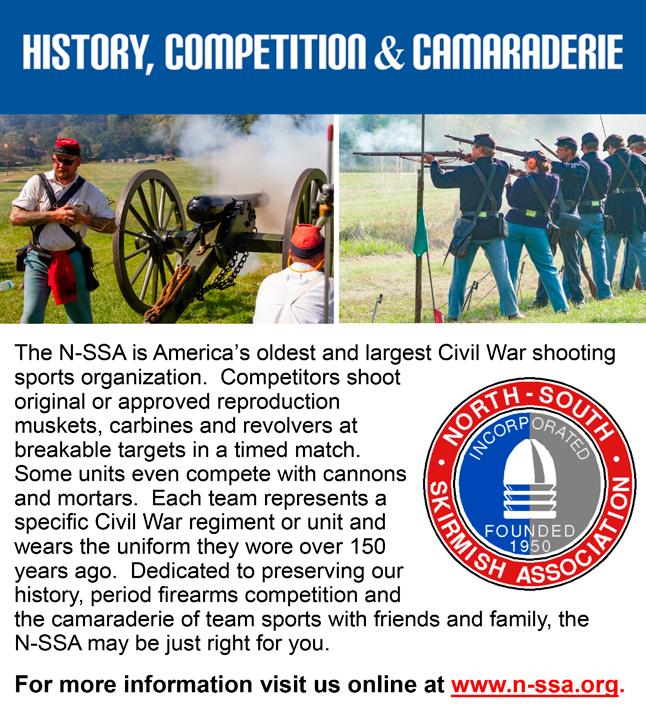
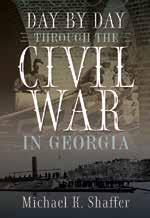
21 June 2022 21 June 2022 CivilWarNews.com CivilWarNews.com
Civil
Henry Timrod, Confederate Poet

“Timrod could not carry a musket for the land he loved, but he did something better and far more valuable.
He filled a part which few men in the grand army of the South could have filled.
He was the trumpet of the Confederacy….”
With this flattery a Southerner recounted the war record of Henry Timrod. An ardent Southern patriot and wholehearted Confederate, he never went to war himself, but he aided the cause in the best way he could— with his pen. His efforts to celebrate the Southern struggle, and to inspire his people in time of war, have earned for Timrod unchallenged renown as the poet laureate of the Confederacy.
As a youngster, “Harry” probably acquired an affinity for writing from his learned father, whose bookbinding shop drew the literati of Charleston. The elder Timrod even wrote a short poem to his son. But these fatherly influences ended in 1838 when William Timrod died, leaving a widow with little money and a son not yet ten years old. Nevertheless, Henry continued his education at the city’s finest school. In class seated next to him was another young Charlestonian with literary gifts; Paul Hamilton Hayne would be Timrod’s lifelong friend.
The lads spent much time
On one occasion, Petigru sent him across town to deliver a verbal message. Halfway to his destination Timrod realized he had forgotten his communication, and was forced to return humbly.
“Why Harry, you are a fool!” Petigru thundered. Timrod took the hint and sought employment elsewhere.
composing and comparing poetry—so much time, in fact, that their labors once earned them a whacking on the backside from their schoolmaster. Hayne later recalled young Timrod’s energy and vibrant passion, but he also saw him as shy and something of a bookworm. Another friend remembered Timrod as a loner who liked to take long walks in the woods.
There was little time for naturestudy, however, after Timrod began taking courses in 1845 at the state university in Athens, Georgia. The young student apparently took little interest in his classes, though he showed a genuine flair for Latin. From the tedium of the lectern Timrod found escape in the company of young women and (as rumor had it) in the company of the bottle. His contempt for academics, his remorse for intemperance, and his fondness for the ladies he made evident in “What Athens Dull,” an unpublished verse presumably addressed to himself. If ten honest men could have saved Sodom, the young poet reasoned, then three modest maidens should be enough to remind a sentimental sot (or, as he put it, “thou maudlin rake”) of the proper course in life.
In the end Timrod found college life unsatisfying, and he left after a year and a half. Later he told Hayne that much of his time at school was spent “in the composition of love verses, frantic or tender.” Some of these harmless rhymes were later sent to Charleston newspapers, and their publication was Timrod’s first printed work. But the poet’s professional career actually commenced in 1849, when the Southern Literary Messenger began accepting his verse.
Payments for these occasional contributions provided a sadly insufficient income. Prodded by financial necessity, young Timrod tried reading law in the office of the esteemed James L. Pettigru (the unabashed Unionist who once declared, “South Carolina is too small for a republic and too large for an insane asylum.”)
Timrod learned soon that he had not the makings of an attorney.

Soon he began tutoring for Carolina planters. “He was very absentminded,” recalled a student, “and was often so absorbed in poetical fancies that he would appear peculiar.” In the midst of instruction Timrod might drift off into reverie, then catch himself and cry out, “Now begin!” Despite such bungling the young poet managed to earn a meager income throughout the 1850s. During this time he published a quantity of verse that was collected and printed as a
book in 1859. The volume gained some good notices but poor sales. By the start of the war, Timrod’s reputation as a poet had spread, but it remained strongest in Charleston, where he enjoyed the company of Hayne, William Gilmore Simms, and other men of letters. Like his colleagues, Timrod was an ardent Southern nationalist and an avowed secessionist. When delegates from the seceded states met at Montgomery to form the Confederacy in February 1861, the poet celebrated the event by composing “Ethnogenesis.”
“…At last, we are A nation among nations; and the world
Shall soon behold in many a distant port Another flag unfurled!”
War with the North was as yet undeclared, but…
“What if, both mad and blinded in their rage, Our foes should fling us down their mortal gage, And with a hostile step profane our sod!
We shall not shrink, my brothers, but go forth To meet them, marshaled by the Lord of Hosts….”
As did other Southerners, Timrod confidently proclaimed that cotton, “the snow of Southern summers,” would be the bulwark of the new nation’s independence. This conviction he expressed in “The Cotton Boll,” which ranks with “Ethnogenesis” among his best war poems. Writing in the summer of 1861, Timrod was certain of victory, as he affirmed
22 CivilWarNews.com June 2022 22 June 2022 CivilWarNews.com Visit our new website at: HistoricalPublicationsLLC.com
Henry Timrod, the South Carolina poet; he died in Columbia in 1867 at the age of 38.
In 1901, a monument with a bronze bust of Timrod was dedicated in Charleston, S.C., as one of the Dead Poets’ Society Memorials. Perhaps a greater honor was given to him when the state’s General Assembly passed a resolution in 1911 instituting the verses of his poem “Carolina” as the lyrics of the official state anthem.
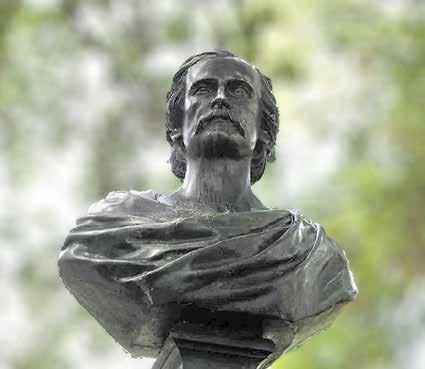
in his poem’s concluding lines:
Oh, help us, Lord! to roll the crimson flood
Back on its course, and, while our banners wing Northward, strike with us! till the Goth shall cling
To his own blasted altar-stones, and crave Mercy; and we shall grant it, and dictate
The lenient future of his fate
There, where some rotting ships and crumbling quays
Shall one day mark the Port which ruled the Western seas.
Is he speaking of Boston, or New York?
Sources
• Poems of Henry Timrod (Boston: Houghton, Mifflin 1899)
• Laura Fontaine M. Davidson, comp., Cullings from the Confederacy (Washington: Rufus H. Darby Printing Co., 1903)
• F. V. M. Painter, Poets of the
South (New York: American Book Company, 1903)
• Esther Park Ellinger, The Southern War Poetry of the Civil War (New York: Burt Franklin, 1970 [1918])
• Francis Trevelyan Miller, ed. The Photographic History of The Civil War in Ten Volumes. Volume nine: Poetry and Eloquence of Blue and Gray, (New York: Review of Reviews Co., 1911), 32.
Editor’s note: Steve drew this piece from his article, “Henry Timrod: Poet Laureate of the Confederacy,” published in Civil War Times Illustrated, February 1983. HISTORYNET has kindly given its permission for us to republish from it.

Steve has also dawn on his two recent works on General Hood (Mercer University Press, 2018, 2019). Together they have won book awards from the New York CWRT, the Atlanta CWRT and the Military Order of the Stars and Bars.

Ulysses S. Grant

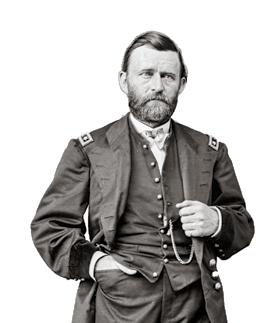
E-Telegraph: curtfields@ generalgrantbyhimself.com
Signal Corps: (901) 496-6065
Facebook@ Curt Fields
23 June 2022 23 June 2022 CivilWarNews.com CivilWarNews.com
48 E. Patrick St., Frederick, MD. 301-695-1864 / civilwarmed.org Divided by Conflict. United by Compassion.
Portrayed by E.C. Fields Jr., Ph.D.
HQ: generalgrantbyhimself.com
several historic markers that were “off the beaten path” in Calhoun County.
Doug Crenshaw will be leading a private tour of the Seven Days battlefields on April 29.
www.emergingcivilwar.com
in an effort to better understand them. They have each been at their craft for years, but they were each still making an effort to learn something new about the men they portrayed. They yearned to better understand Grant and Lee and, in doing so, improve their own portrayals.
Chris Mackowski
From the Editor
I’ve often wondered what went through the minds of Ulysses S. Grant and Robert E. Lee as they slugged it out for the first time in the Wilderness in May 1864. From there, they fought on at Spotsylvania Court House, North Anna, Totopotomoy Creek, Cold Harbor, and on to Appomattox.
As it turns out, living historians who portray Grant and Lee also wonder the same thing.
On Thursday, April 14, I had the chance to spend time in the Wilderness and at Spotsylvania Court House with Curt Fields and Thomas Jessee. Curt and Thomas are the two foremost Grant and Lee (respectively) living historians in the country. For the Appomattox 150th, for instance, the National Park Service had Curt and Thomas portray Grant and Lee during the recreated surrender ceremony.
Curt is a friend of mine, although we’ve never met in person. To spend the day on the battlefields with my friend and his wife was treat enough! To spend it with Curt and Lena, Thomas and his wife, Rebecca, was especially wonderful. There’s a big part of me that’s still a Civil War fanboy, so to spend the day on the field with Grant and Lee was a fanboy’s dream.
Thomas had not been to the Wilderness or Spotsylvania since he was a kid, and Curt had never been there at all. So, to walk the ground with those two men, and do so in a way that helped them better connect with the characters they each portray, was a big responsibility. I took them to places where the two generals had particular connections so that Curt and Thomas could walk in the footsteps of Grant and Lee
The climax of the day probably came at the Brock Road-Plank Road intersection, where Grant chose to go around Lee and, in doing so, changed the very nature of the war. We had a fantastic discussion on the spot, even as dozens and dozens of cars drove by, obvious to the turning point of the war they were passing through.
“What more is there to learn about the Civil War,” people often ask me. As Curt and Thomas demonstrated by walking the ground, there’s always something new to learn.
— Chris Mackowski, Ph.D. Editor-in-Chief
One Simple Thing You Can Do to Help ECW
One simple way you can help ECW is to open the newsletter when it arrives in your email. This might seem like preaching to the choir because, obviously, you’ve already opened the newsletter or you wouldn’t be reading this. Sometimes, though, perhaps you forget to open it, or you delete it because you don’t think you’ll have time to read it this month, or whatever. If you take a quick second to open it, though, that’s actually super helpful to us.

The Seventh Annual Emerging Civil War Symposium at Stevenson Ridge
The Seventh Annual Emerging Civil War Symposium at Stevenson Ridge will be held August 5-7, 2022, in Spotsylvania Virginia. Our theme this year matches up with our newest book release, Great What Ifs of the American Civil War.
ECW News & Notes
Sarah Kay Bierle recently made a long-anticipated research trip to Alabama, visiting three libraries in three days and finding
In the past few weeks, Bert Dunkerly has given presentations on the Powhatan War of 1622 and the 1863 Brown’s Island Explosion. He has also been assisting Chris Calkins with editing his books, The Battles of Appomattox Station and Appomattox Court House and The Final Bivouac, for republication by Savas.

Brad Gottfried did a presentation for the Adams County Historical Society on April 7 about the ECWS book he co-authored with his wife, Linda: Lincoln Comes to Gettysburg.
From Steward Henderson: “On April 3, five members of the 23rd USCT were invited to participate at the Angel Visit Baptist Church Emancipation Day Anniversary, which included the unveiling of the Virginia state marker for the church, established church since 1866. They celebrated April 3rd, the day that Richmond fell to Union soldiers, as Emancipation Day for Essex County, marking the time most of the slaves in that area became free from slavery.
“In April 18, I gave a tour for the Fredericksburg Department of Tourism, “Walk in the Footsteps of John Washington.” Washington was a former slave who self-emancipated during the Federal occupation of the city in the spring of 1862. On April 23, Steward represented the 23rd USCT at Louisa County Heritage Day.”
From Dwight Hughes: “My only accomplishment last month was to complete the manuscript on deadline for the new ECW 10th Anniversary volume The
Civil War on the Water: Favorite Stories and Fresh Perspectives from the Historians at Emerging Civil War, which is due out in the fall. For my first crack at it, I discovered that editing can be fun (usually) and instructive (always). Thanks to all my compatriots who contributed essays. Now spring is beckoning as yard and gardens are pulling me away from the keyboard.”
Chris Kolakowski has been enjoying delving into the service of some newly discovered ancestors in the 30th, 44th, and 100th Indiana Volunteers.
Angela Riotto will be attending the Civil War Era Studies National Endowment for the Humanities Summer Institute at Gettysburg College in June 2022.
Brian Swartz spoke about his book Passing Through the Fire: Joshua Lawrence Chamberlain in the Civil War via Facebook Live with the Civil War Round Table of Central Louisiana on Saturday, April 9. The presentation was part of the CWRT’s Second Saturdays with Savas Beatie Publishing series. Brian opened his program with a plug for Savas Beatie and for Emerging Civil War.
Thanks to the efforts of ECW’s Jon-Erik Gilot, the Andrew Carnegie Free Library & Music Hall in Carnegie, Penn., featured an all-ECW line-up for the museum’s biennial one-day Civil War Symposium. The theme was “The War in 1862;” the line-up included Drew Gruber of Civil War Trails, Paige GibbonsBackus, Chris Mackowski, Dan Welch, and Kris White. ECW author Mike Block also made an appearance. The library in Carnegie is the home to the Capt. Thomas Espy Grand Army of the Republic post, one of the most intact GAR posts in the country.

Five Questions . . . with Jon-Erik Gilot

For our “Five Questions” feature, we’re focusing on the work being done by some of our stalwart ECW “staff.” We have an outstanding cadre of contributors at ECW, but many of them go above and beyond their writing duties to help run the organization. We’re an allvolunteer crew, so we want to spotlight some of those great folks. ECW wouldn’t be possible without them. This month, we’re talking with Jon-Erik Gilot, the co-coordinator (with Sarah Kay Bierle) of our annual Emerging Civil War Symposium at Stevenson Ridge. Jon-Erik is also the secretary on our board of directors.
What does the job of symposium co-coordinator involve?
A lot more than advertised! From the big things, developing the program and interfacing with our speakers, attendees, and venue, to the little things, like making name tags and scheduling weekly blog posts. Thankfully I have a great co-coordinator in Sarah Kay Bierle, with her strong background in event planning, I find myself leaning on her quite a bit. Between the two of us, we have a good handle on whatever might come up.
What is your favorite part about the job?
Interacting with the attendees. You start to recognize faces from previous years, readers from the blog, and members of roundtables where you’ve spoken. It feels more and more like a family reunion each year. You can’t understand it until you’ve attended a symposium, so I would be remiss if I didn’t take this opportunity to encourage our readers to purchase a ticket. Less than 25% of seats remain—and once they’re gone, they’re gone!
How did you work your way to become symposium co-coordinator?
Attrition? Kidding! The
24 CivilWarNews.com June 2022 24 June 2022 CivilWarNews.com
Jon-Erik Gilot, Dan Welch, Kris White (front), Paige Gibbons Backus, Mike Block, Drew Gruber, and Chris Mackowski (back) brought ECW to Carnegie, Penn., for the day.
Jon-Eric Gilot prepares for artillery duty singlehandedly.
previous co-coordinators had been at it for several years and were looking to pass the baton so they could get involved in other arms of the organization. We’re only building on their successes, and I hope to someday pass that along to my successor. I feel like I have at least one more year in me, but ask me again in September....
What else do you do for ECW?
I serve as Secretary of the ECW Board of Directors and also serve on the Editorial Committee. There’s no shortage of work around here for those who want to be involved!
Working on anything fun these days?
I recently wrapped up a miniECW symposium at the Andrew Carnegie Free Library & Music Hall in Carnegie, Penn. I host a monthly 2nd Saturday Civil War Lecture Series there, which keeps me busy. My next book project is always in the back of my mind, but lately I’ve been having fun jumping around whatever topics I might find interesting. I also really buckled down with reading over the winter and finished books that had been languishing for years in my “to read” pile.
For anyone who might be interested in having you speak to their roundtable or historical group, what are your areas of expertise?
John Brown’s Raid and West Virginia during the Civil War. I have quite a few talks that highlight the personalities, politics, and military engagements in that 1859–1865 window in West Virginia history.
I’m also particularly interested in the advantageous use of shortterm soldiers, such as the militia and home guard companies who opposed John Hunt Morgan during his 1863 Ohio Raid, and the Ohio 1864 National Guard regiments. These organizations weren’t designed to see combat but put in some really effective work against veteran opponents. With enough notice, I can put together a talk tailored to your group, region, or interests.

ECW Bookshelf
The latest release in the Emerging Civil War 10th Anniversary Series of hardcovers is out: Grant vs. Lee, coedited by Jonathan Tracey and Chris Mackowski and published by Savas Beatie.
The book covers a lot of ground, geographically and chronologically, from the Wilderness through Appomattox, picking key moments and great stories from this marquee matchup of Civil War titans.

“Emerging Civil War has knocked it out of the ballpark again!” says Gordon Rhea, dean of Overland Campaign scholars. Petersburg authority Will Greene calls the book, “Engaging, entertaining, educational, and eclectic,” and says “this collection of brief essays by a cadre of ‘emerging” Civil War scholars provides hope for the future of accessible Civil War history. Highly recommended.”
Obviously, Grant and Lee also approve.
ECW Multimedia

We have had a busy month in our effort to take over all forms of media! First of all, we have relaunched the Emerging Civil War podcast on a wider number of platforms. Look for us at places like Apple Podcasts and Spotify.
You can also subscribe to our podcast through Patreon, where we are now also offering exclusive bonus content for subscribers. That’s just $3.99/ month, and proceeds go toward defraying the production costs of the podcast. Check us out: https://www.patreon.com/ emergingcivilwar.
On the video front, the Emerging Civil War YouTube
page included a neat collection of short videos to coincide with the 160th anniversary of the battle of Shiloh:
✪ Shiloh 160th Intro
✪ The Signs of Shiloh
✪ Albert Sidney Johnston’s Crisis of Faith (with Parker Hills)
✪ Lick ‘Em Tomorrow
✪ Grant’s Last Line at Shiloh
✪ Mississippi Monument at Shiloh (with Parker Hills)
✪ Iowa Monument at Shiloh
✪ Beauregard’s Escape from Corinth
We tagged along on a fantastic video swing with the American Battlefield Trust through southeast Tennessee and northwest Georgia. You can see those videos in a playlist, “Civil War Georgia Battlefield Tour Sites,” on the Trust’s YouTube page: https://www.youtube.com/ playlist?list=PLZrhqv_T1O1tsLJEJWUPnp8Q6uBCvOC3.
We also came away with a few shorter pieces of our own, which we’ll share in May as the Atlanta Campaign gets underway. In the meantime, we have a pair of popup previews with Garry Adelman:
• The earthworks of Rocky Face Ridge
• Garry Adelman on Kennesaw Mountain

Finally, with the podcast
back up, we have the video components of those interviews now on YouTube. See “Decisions at Fredericksburg” with Chris Mackowski, Ryan Quint, and Kris White.
More to come, including commemoration the bicentennial of Ulysses S. Grant’s birth!
which can be accessed however you usually download and listen to your podcasts. (This is also a good time to go follow the blog and Facebook page if you haven’t already).
by Phill Greenwalt
April is an important month in the history of the American Revolution. The first shots of the war, fired at Lexington and Concord in Massachusetts erupted on April 19, 1775. In the South, General Nathanael Greene “lost” another battle, this time at Hobkirk’s Hill, now within Camden, South Carolina. Two weeks later, the British evacuated Camden.
ERW’s popular “Rev War Revelry,” which is Emerging Revolutionary War’s Sunday night historian happy hour, had its two-year anniversary program on Sunday, April 17. For folks unable to catch the April 17 program, all our past “Rev War Revelry” programs are on our YouTube channel. Or if you prefer podcasts, ERW continues to update our podcast channel, Emerging Revolutionary War,
On April 19, ERW historian Phillip S. Greenwalt gave a virtual talk for the Valley Forge Park Alliance about Barren Hill, the ending of the Valley Forge encampment, and the remaking of the American army, entitled ‘Timely and Handsome’: Transformation of the Continental Army at Valley Forge. Continue to check out our blog, especially for details on how to register for the September symposium held in conjunction with Historic Alexandria about the international impact of the American Revolution. Lastly, click on over to the blog (www. emergingrevolutionarywar. org) to secure your place on the second annual bus tour, which will discuss the history of and campaign that led from Valley Forge to Monmouth, November 11-13, 2022. Limited tickets remain.
You Can Help Support ECW Emerging Civil War is a 501(c)3 not-for-profit organization. If you’re interested in supporting “emerging voices” by making a tax-deductible donation, you can do so by you can do so by visiting our website: www. emergingcivilwar.com.

25 June 2022 25 June 2022 CivilWarNews.com CivilWarNews.com
Curt Fields (left) and Thomas Jessee (right) “Grant and Lee” support the publication of Grant and Lee.
ECW Chief Historian Kris White shoots historian Will Greene atop the crest of Rocky Face Ridge in Georgia as ECW’s Dave Powell looks on.
or Editorial Submissions
ads@civilwarnews.com
Deadlines for Advertising
is the 20th of each month.
Battery Wagner: Engineers to the Rescue
by Joseph F. Wilson
In the fading sunset, the Yankee soldiers waited for the order to charge across the beach and attack the Confederate stronghold on the shores of South Carolina. Already, one attempt to seize Fort Wagner on July 11, 1863 left 339 dead and wounded men scattered about the beach in front of the fort.
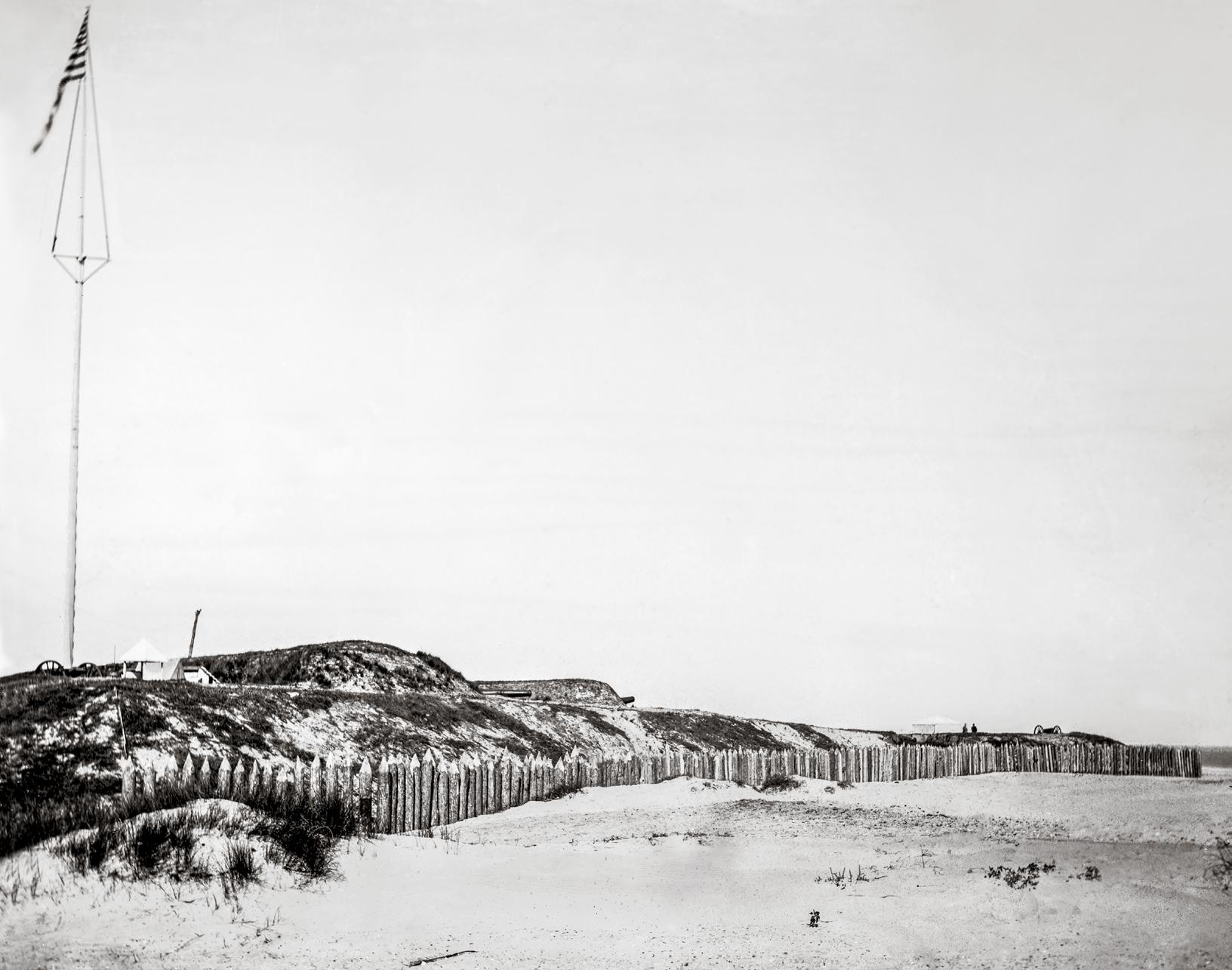
The second attack on July 18, 1863, also met with defeat. Leading the charge, the 54th Massachusetts later gained fame in the movie Glory. The Fiftyfourth lost half its strength in the attack, including its Colonel Robert Gould Shaw, who fell dead on the fort rampart. More than 1,500 Yankee soldiers including General George Strong added their blood to the sand on
July 18; the Confederates lost only 175.
Wagner stood 1,350 yards from the Union line. A compliment of 14 cannon bolstered the 1,800 man Rebel garrison. A moat added more protection. If Union soldiers passed the moat, hundreds of sharpened palmetto tree trunks poked out of the sand to slow their advance. Farther out beyond the moat, gray clad soldiers in rifle pits greeted any assault force. Under the sand, a dangerous hidden mine field bolstered the defense. The Union officers knew another plan had to be formulated.
Union General Quincy Gillmore wisely realized a third attack from the Federal position would be futile. Unable to capture the earthen fort by charging over the beach, one officer stepped forward during a council of war with a unique proposal. Colonel Edward Serrell, Chief Engineer of the X Corps, had a bolder and better idea. Gillmore gave his approval.
Muskets gave way to shovels as the new plan went into effect. Led by the 1st New York Engineer Regiment, the Union soldiers burrowed their way toward the fort. To avoid more bloodshed,

they dug and kept digging. The innovative tactical approach called for sappers to cross the beach one shovel at a time. Work commenced immediately, carving up the beach and relocating countless tons of sand. Hundreds of soldiers inched their way in a series of trenches for well over three quarters of a mile until they were at the fort’s outer works. A sudden attack from such a position offered a much higher rate of success.
Confederate commander, General William Taliaferro, stubbornly resisted giving up the fort on Morris Island. After the
second offensive failed, the blood of nearly 2,000 Union soldiers saturated the sand on Morris Island.
Most of the work took place at night to protect the diggers. Officers crawled ahead of the shovel battalion with a long rope marked at six-foot intervals. Men dug holes at the proper marks. Coming behind them, diggers connected the holes to form a trench. Drawing closer, the engineers opened much larger trenches parallel to the fort that could protect a body of troops and artillery. A total of five parallels and a mass of connecting trenches
26 CivilWarNews.com June 2022 26 June 2022 CivilWarNews.com
Fort Wagner sea face. This photo was taken from the red dot located on above drawing. The arrow shows the approximate direction of the camera. From left to right are 12-pounder, 32-pounder, 8-inch, another 32-pounder just left and below the far right tent, and a 12-pounder on the sea face. (Library of Congress)
eventually crossed the beach.
The engineers began the sixweek project by constructing gabions to protect the workers from the Confederate sharpshooters armed with at least one deadly Whitworth rifle. A gabion was a three foot long basket made of saplings and filled with sand. Hundreds of these placed on top of a trench protected the channel along its entire length. The wicker bundles were capable of stopping a sharpshooter’s bullet. Workers in the rear kept busy constructing a total of 1,400 gabions.

Men went out in shifts to shovel through the sand. Surviving soldiers in the 54th Massachusetts likely felt much safer in the holes than they had charging the fort. Engineers comprised about one third of the workers. A force of soldiers known as the Grand Guard always kept watch over the diggers.
Slowly, Union sappers excavated their way closer to the enemy. Confederates in the fort watching the operation knew full well what was happening. As the Union scheme developed, so did the Southern gunfire. When the trench line reached 875 yards from Wagner, a larger second parallel

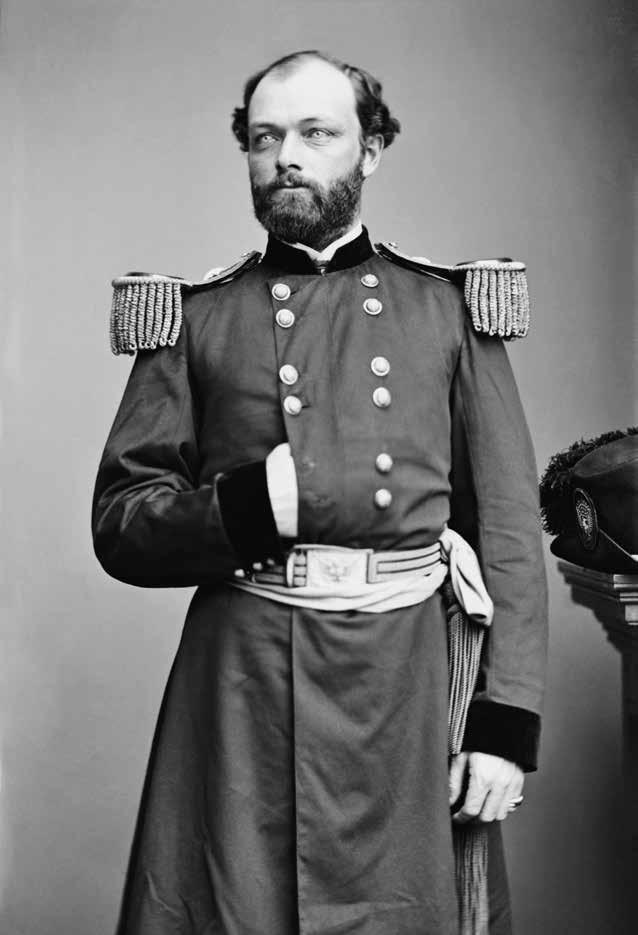

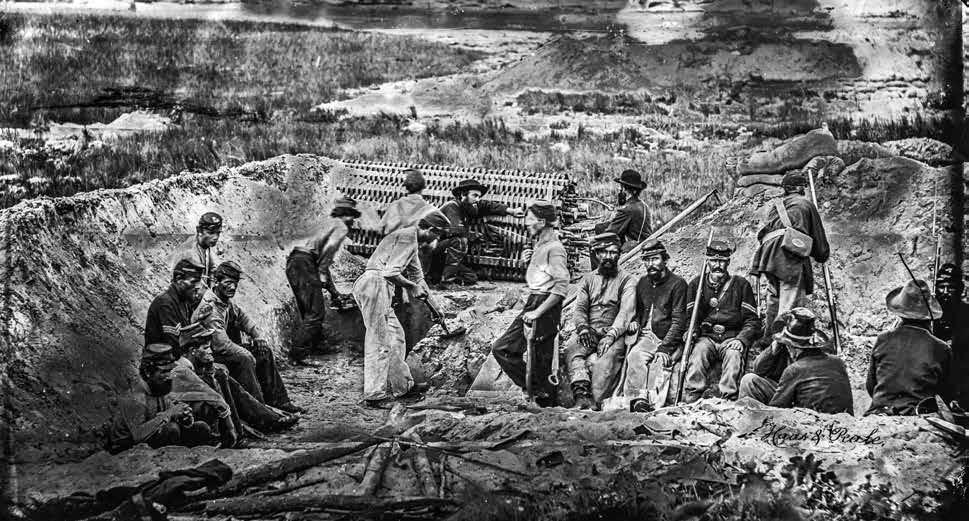
27 June 2022 27 June 2022 CivilWarNews.com CivilWarNews.com
Union soldiers, some from Company C, 24th Regiment, Massachusetts Infantry, pose while digging a trench using a sap roller on Morris Island. (Library of Congress)
Diagram showing a buried wooden torpedo (land mine) in the sand. When something put enough pressure on the board it would detonate the pressure sensitive fuse causing loss of life and injury to everything around the explosion. (Library of Congress)
Col. Robert Gould Shaw of the 54th Massachusetts Volunteers.
Gen. Quincy A. Gillmore. (Library of Congress)
Col. Edward Serrell, Chief Engineer of the X Corps. (Library of Congress)
was excavated to accommodate the heavy guns that strengthened the Union position. Hundreds of sandbags and iron plates fortified the new line. One soldier thought the second parallel just as strong as Fort Wagner.
The digging toward the third parallel became increasingly dangerous for the fatigue force as they closed the gap. Confederate gunners took notice of some men from the 85th Pennsylvania carelessly grouped together in an exposed position; a well-placed mortar killed seven with one shot. Other reckless diggers fell under the accuracy of sharpshooters.
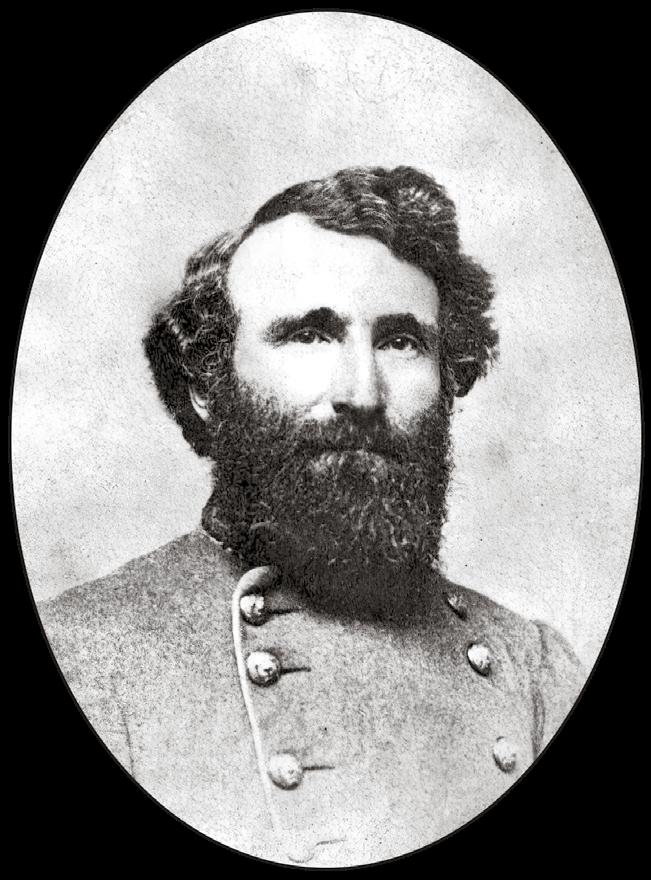
Still, the sand flew as they drew nearer to Wagner. Nothing stopped the digging. Temperatures hovered around 100 degrees. High tide sometimes flooded the trenches. Sappers constantly had to deal with windblown sand. Wagner’s artillery continued adding to the Union casualty list.
To shield the diggers at the head of a trench from shot and shell, engineers employed 11 sap rollers. The 9 foot long and 4-footwide round wickerwork was made of saplings and branches banded with iron. The ingenious device was rolled forward in front of the shovel men offering excellent protection.
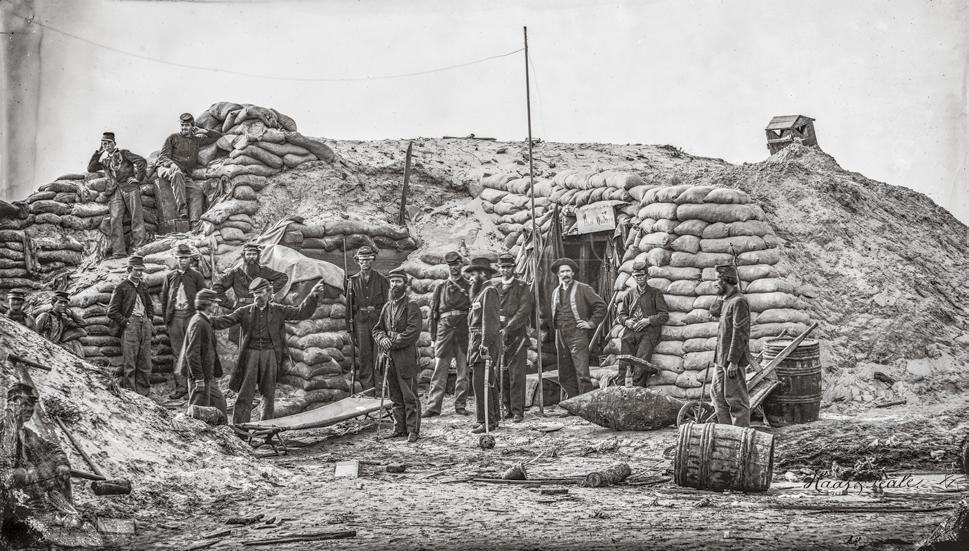
The third parallel opened on August 9, only 540 yards from the fort. The fatigue parties continued digging forward to a fourth parallel, a mere 350 yards from the Confederates. During the last
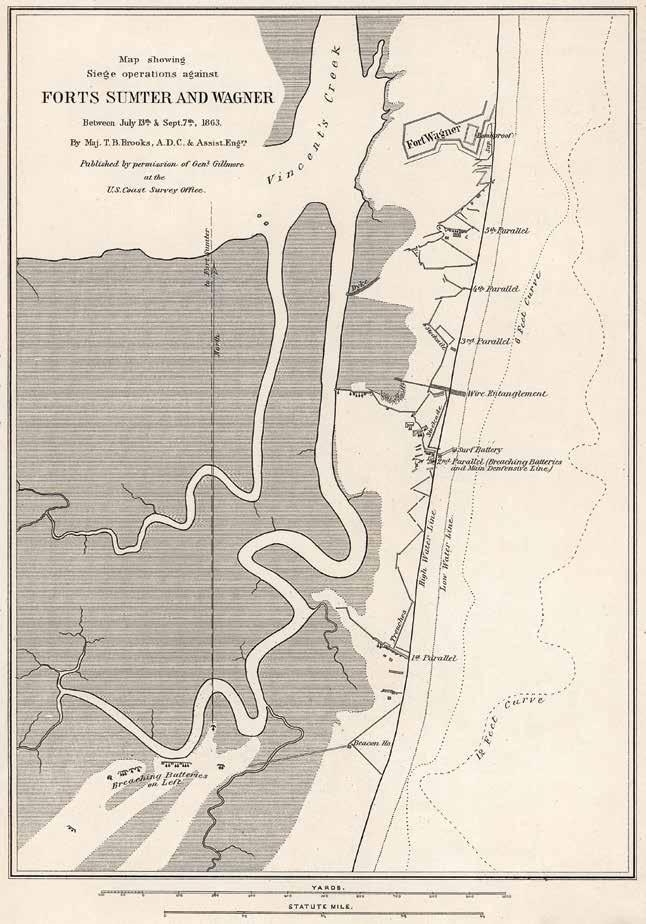
stretch, the obstacles they faced proved more dangerous and a bit unexpected. The minefield posed the greatest danger. Resistance from the rebels in the outlying rifle pits withered quickly but the mines had to be dealt with carefully.
Shells of all sizes armed with pressure sensitive fuses lay buried under the sand topped with a board across the fuse. Any pressure from an errant foot set off a powerful explosion. Some were nothing more than 10-gallon wooden beer kegs loaded with powder and armed the same way. One soldier flew high in the air after stepping on a mine. When his mangled body landed, the corpse detonated another explosion.
When an explosive device was discovered, the engineers had a variety of ways to detonate them. Sometimes a well-placed musket shot did the job. Diggers lobbed iron of their own at the fuse hoping to blow the mine. For wooden kegs, a hole drilled into the side allowed soaking the powder with water to render the mine inert.
One unforeseen hindrance presented a problem more ghastly than hazardous. Union diggers unearthed hundreds of decaying human remains. The clothing indicated the bodies were not soldiers. The decomposing civilians had died from disease that plagued Charleston in earlier times. Morris Island was
28 CivilWarNews.com June 2022 28 June 2022 CivilWarNews.com
Fort Wagner and the Union approaches. The parallels stated with the first one at the bottom of the map and the fifth nearest Fort Wagner. (Library of Congress)
Headquarters Second Parallel. A barrel torpedo (today’s mine) and a tapered ended barrel torpedo are in the foreground on the right side of the photo. (Library of Congress)
Confederate General William B. Taliaferro. Circa 1865. (VMI Archives)
a dumping ground for the dead; locals referred to it as “Coffin Island.” Then the engineers dug into a mass grave of freshly buried Union soldiers dumped in the hole by Rebels after the July attacks. These were their friends.

A final push to a fifth and final parallel had them knocking at the door. Work commenced in earnest with victory in sight. The engineers struck out from the fifth parallel creating a trench running close to the moat. It was so close to the fort parapet, the Confederates couldn’t depress their artillery to bring effective fire against the trench. The engineers widened the last trench to accommodate a large number of troops.
Another attack was readied. After six weeks of hard digging, Union commanders geared up for the attack. General Gillmore assigned the assault to General Alfred Terry. All had confidence that a sudden rush from the base of the fort would overwhelm the Confederates hunkered down in their fortress. September 7 was the date set for the Yankees to storm Fort Wagner a third time.
Inside the fort, Confederate officers agreed with the Union assessment. No longer did Union troops need to traverse hundreds of
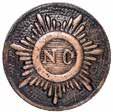

yards under a withering fire from musketry and artillery. General Taliaferro sent word to General Beauregard that it would be senseless to sacrifice the garrison.


On the night of September 6, the Rebels headed to the far end of the island carrying any supplies to be loaded onto boats waiting at Cumming’s Point. The few remaining Confederates in the fort spiked the guns and left. The valiant Southern defense came to an end as the fort was abandoned.


A Southern deserter notified Northern officers the fort was empty. Union troops warily entered the battered fortification in the early morning hours of September 7. The prized bastion was finally occupied by the Union Army after a two-month campaign highlighted by siege tactics employed during the American Civil War. Just as with Vicksburg, Port Hudson, and Petersburg, the Fort Wagner siege was a forerunner to the trench warfare associated with the First World War.
The tremendous amount of beach sand reshuffled on Morris Island could never be measured. Union Engineers deserve credit for taking Fort Wagner. Had General Gillmore ordered a third all-out assault on Fort

Wagner from the original line, the killed and wounded would have dwarfed the casualties taken in the six weeks of digging. The digging wasn’t in vain. Total Union control of the strategically important Morris Island now put Charleston and all the forts protecting the harbor in jeopardy. Today, the fort that demanded so much attention on Morris Island is only a memory. Over the years the ocean claimed half of the island. Both the beach where the 54th Massachusetts made their gallant charge and Fort Wagner itself, rest at the bottom of the ocean, several hundred feet from the current shoreline. All the sand piled high by the Union and Confederacy on the island has been reordered back to its original position by the forces of Mother Nature.
secured the victory on Morris Island while armed only with shovels!
Joseph F. Wilson lectures on Andersonville Prison and Walt Whitman in the Civil War. He is a frequent contributor to Civil War News. The author also produced the documentary film “Civil War Prisons – An American Tragedy” now available on Amazon. Contact – joef21@aol.com.
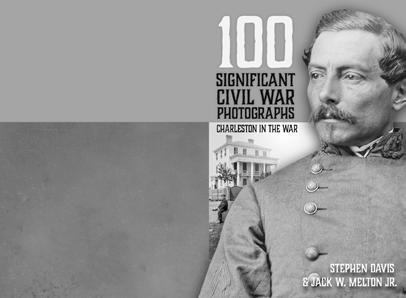
CHARLESTON IN THE WAR



The Union dead buried on the Island, including Col. Robert Gould Shaw, were reinterred in a mass grave in the Beaufort National Cemetery in South Carolina. The civilian dead buried “Coffin Island” now rest underwater. Many Confederates buried in the walls of the fort during the siege probably share the same watery grave. Had it not been for the movie Glory in 1989, the Battle of Fort Wagner may have been relegated to the back pages of the Civil War. Civil War buffs and beyond now know the story of 54th Massachusetts at Fort Wagner from the film. If only the film had kept rolling to showcase the monumental achievement of the Engineers and the dedicated soldier excavators whose deeds

29 June 2022 29 June 2022 CivilWarNews.com CivilWarNews.com Contact Mike at: 910-617-0333 • mike@admci.com Provenance a Must! Fort Fisher items wanted Subscribe or Renew Online at CivilWarNews.com Visit our new website at: HistoricalPublicationsLLC.com “The STORIES BEHIND THE PICTURES” 100 Significant Civil War Photographs CHARLESTON IN WAR By Stephen Davis & JACK W. MELTON JR Name Shipping Address City State Zip 160 pages • OVER 100 PHOTOS • MAPS INDEX • BIBLIOGRAPHY • ISBN: 978-1-61850-167-7 Paperback: $19.95 (+$3.50 S & H) • Released Jan. 2020 3 ways to order YOUR COPY! CALL US 800-777-1862 ORDER ONLINE www.historicalpubs.com fill out this form BELOW & mail with a check for $23.45 to: Historical Publications LLC 520 Folly Road, Suite 25 PMB 379, Charleston, SC 29412 (S.C. residents include 9% sales tax of $1.80) 100 Signi cant Civil War Photographs: Charleston in the War features newly restored images of scenes in the famed city, taken 1860–1865. e cameramen include the better-known, such as George N. Barnard and George S. Cook, as well as some lesser-known ones: Samuel Cooley, Charles Quinby, the partners Haas & Peale, Osborn & Durbec. Text by Stephen Davis and Jack Melton accompanies each featured photograph, describing the pictured scenes and the history surrounding them. e selected images depict a variety of settings: that portion of Charleston known as e Battery, the “Burnt District” (the area of the city destroyed by the Great Fire of December 1861), the Charleston Arsenal, and the many churches that allow Charlestonians to call theirs “the Holy City.” Special sections of this book are devoted to the huge Blakely guns imported from England by the Confederates and close-ups of Barnard’s views. e history of Civil War Charleston goes back to e Defense of Charleston Harbor (1890) by John Johnson, Confederate major of engineers, and to Reminiscences of Forts Sumter and Moultrie in 1860-’61 (1876) by Capt. Abner Doubleday, Federal second-in-command. Since then Charlestonians have contributed to the history of their city, notably Robert N. Rosen and Richard W. Hatcher III. e historical text surrounding 100 Signi cant Photographs draws on these and other works. A unique feature is its reliance upon the writings of actual participants, such as Augustine T. Smythe (1842–1914) and Emma Edwards Holmes (1838–1910). As a contribution to this literature, 100 Signi cant Civil War Photographs: Charleston in the War o ers rewards for all readers, from the casual novice to the serious student.
DAVIS & MELTON 100 SIGNIFICANT CIVIL WAR PHOTOGRAPHS CHARLESTON IN THE WAR
Landmine exploding among Union troops at Yorktown, Va. Sketch courtesy of Alfred R. Waud, Harper’s Weekly, May 24, 1862.
A NEW MAGAZINE FOR SERIOUS MILITARY ANTIQUE COLLECTORS








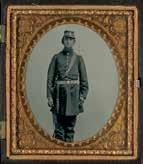








Introducing Military Antique Collector, a brand new 80-page, bi-monthly magazine printed on top quality paper with high-resolution color photographs of some of the world's most beautiful and unusual military collectibles. Dedicated to both the expert collector and novice alike, each issue will be teeming with informative articles written by leading authorities in their fields of expertise, including distinguished well-known authors, along with prominent museum and auction professionals. Each will spotlight rare and unusual military objects, craftsmanship works, and their relationship to historical figures dating from early American and European history to limited coverage of the post-1898 artifact.
The price is only $39.95 for a one-year subscription and $72 for two years. Subscribe online at MilitaryAntiqueCollector.com and click on the Subscribe/Renew/Purchase link on the menu at the top of the page. Or scan the QR Code with your smart phone:
MILITARY ANTIQUE MAGAZINE May-June 2022 Vol 1, No. 2 $8.00 MILITARY ANTIQUE MAGAZINE Colonel Joseph Walker, Field and Staff, Palmetto South Carolina Sharpshooters, 1862–1864. He wearing his uniform, a two-piece South Carolina belt buckle with palmetto tree, a red sash over shoulder for officer of the day and is holding an eagle head sword. His kepi has the palmetto tree insignia with “K,”“5,” and “R.” Liljenquist Family Collection of Civil War Photographs (Library of Congress). The most important contract requirement noted that, These arms and their component parts, to be manufactured within the State of South Carolina, of the best material and workmanship and as far as practicable, of material and by mechanics obtained in the state foresaid. From this contractual clause it is clear that the State of South Carolina was trying to establish a Virginia Manufactory type facility and wanted to be completely independent of any reliance upon the industrial north for arms manufacture. This clause would be the undoing of Glaze’s enterprise. It appears that even though Glaze built factory and acquired some machinery, he never intended to actually fabricate any arms in his own facility. Rather he intended, at most, to acquire finished components and assemble them into complete arms. As noted by collector, researcher, and author Lew Southard in his excellent article “The Origin of the Palmetto Pistols” (American Society of Arms Collectors Bulletin 81:29-42) the “economy of scale” clearly indicated that Glaze had no intention of manufacturing complete arms. The very cost of the tooling and machinery to manufacture muskets, rifles, pistols, and two Military Antique Collector Magazine Vol. 1, No. 2 Leech Rigdon made about 1,500 guns, most in Greensboro and Augusta, Ga., with machinery moved from Columbus, Miss., during March 1863. Leech revolvers are copies of Colt navies with round barrels. There are several variations; SN 1463 is the highest known Novelty Works ad that appeared in the Memphis Daily Appeal (Memphis, Tenn.) Sept. Military Antique Collector Magazine Vol. 1, No.
by Professor Earnest Veritas Special Correspondent to The Civil War News – Western Theater –
The Ulysses S. Grant Association held its annual meeting March 3-5, 2022, at the Ulysses S. Grant Presidential Library on the campus of Mississippi State University. Activities from Thursday evening to the final Association meeting on Saturday morning kept the substantial crowd of attendees busy celebrating Grant and formally kicked off the Ulysses S. Grant Bicentennial Year.
The following information giving the background of the Ulysses S. Grant Association is partially abstracted from the USGA website:
The USGA began at the Ohio Historical Society and moved to Southern Illinois University in 1964. USGA’s first president was Ralph Newman; the current president is James A. Bultema.
In 2008, following the death of longtime executive director and managing editor, John Y. Simon, John F. Marszalek was selected as Simon’s replacement. Mississippi State University made a home for the Grant Papers
Ulysses S. Grant Association Annual Meeting At the Ulysses S. Grant Presidential Library

at Mitchell Memorial Library.
Upon the 50th anniversary of the Grant Association’s founding, the Ulysses S. Grant Presidential Library was established at Mississippi State University.
With support from Mississippi State University, Southern Illinois University, the National Historical Publications and Records Commission (NHPRC), and the National Endowment for the Humanities (NEH), the Grant Association has now published thirty-two volumes of Grant’s writings in The Papers of Ulysses S. Grant. During this process, it accumulated over 200,000 photocopies of every known letter written by Grant in addition to many original letters written by Grant, his associates, and family. In 2017, the Grant Association and Presidential Library staff edited The Personal Memoirs of Ulysses S. Grant: The Complete Annotated Edition and it was published by Harvard University Press. A digital scholarly edition will follow and will show the various editorial stages of the manuscript.
The USGA meets annually to celebrate the life and accomplishments of General/
President Grant and to conduct its business. This year’s meeting kicked off the Bicentennial of Ulysses S. Grant’s birth and year to change command following retirements of long-time President Frank Williams and Executive Director John Marszalek. The new President, Jim Bultema, and Executive Director, Dr. Anne Marshall, were introduced to the membership.
Frank Williams, retired Rhode Island Supreme Court Chief Justice, and outgoing President of the Ulysses S. Grant Association (since 1992) said, in part, in an open letter to the Association: “This is an exciting time for us as we celebrate many things.

First, it is the bicentennial year of General/President Grant’s birth. After a dismal century of abuse, he is now appreciated for his leadership skills including his political courage.
Second, the leadership in the Ulysses S. Grant Presidential Library and Association is changing.
I am deeply honored to have served with so many great people as well as meet many of you. You have been inspiring to me and to General/President Grant’s legacy.”
Since 2008 Dr. John Marszalek served as the Executive Director of the Ulysses S. Grant Association and Managing Editor of the Ulysses S. Grant papers. Those papers are now housed at the Ulysses S. Grant Presidential Library on the campus of Mississippi State University.
In his open letter to the Association, Dr. Marszalek said, in part:
“I have great pride in the role that I played in establishing the Grant and Lincoln collections. We keep adding, day-by-day, yearby-year, ever more material and our site becomes the place to find everything that throws increasing light on Ulysses S. Grant and Abraham Lincoln.
The Ulysses S. Grant Association and its many books, articles, and memorabilia play an important part in the telling of this American story, and we are proud to be its guardians. We are pleased to make available to so many people the greatest collection of Grant materials in the world.”
Dr. Anne Marshall is the incoming Executive Director of the Ulysses S. Grant Association.
Dr. Marshall has been an instructor in the Department of History at Mississippi State University since
2006. She will share her teaching/ research load with her new position as the USGA Executive Director. Dr. Marshall will have an office in the Ulysses S. Grant Presidential library to work with the Library and the Association.
In her open letter sent to the membership, Dr. Marshall stated:
“My primary goal will be to expand the access and visibility of the USGA and USGPL and its collections. I also look forward to representing the USGA and USGPL within the ranks of Presidential libraries, as well as in the Civil War scholarly community. I am so pleased to be a part of this great organization and I look forward to getting to know you in the coming years.”
She officially assumed her duties at the meeting of the Association at the March meeting of the Ulysses S. Grant Association.
Jim Bultema is the incoming President of the Association and assumed his duties at the March meeting. In his open letter to the members, Jim said, in part:
“As your President-elect of the Ulysses S. Grant Association, I want to welcome you to such an important year in the history of Grant, the Bicentennial of his birth. As we kick off the

national celebration, we can look back and appreciate the soaring popularity of a man who well deserves it. By coming together each year, members of the USGA add to his collective fame by our discussions, lectures, and books. As a result, we leave each meeting with a better understanding of Grant, which we can share with others.”
The meeting got off to a grand start with the keynote talk by Stewart D. McLaurin, the president of the White House Historical Association. He opened the meeting on Friday morning in Bettersworth auditorium on the Mississippi State Campus with an impressive presentation about the White House Historical Association and its many functions with the White House. He also surprised the Association by passing out Ulysses S. Grant cigars with a likeness of Grant on the band!
After Mr. McLaurin’s talk, the crowd adjourned outside to the Drill Field (so named because Mississippi State University was originally a land grant college and that required a course by taught in Military Science). There the Ulysses S. Grant memorial tree was planted by MSU President Dr. Mark Keenum and the officers
31 June 2022 31 June 2022 CivilWarNews.com CivilWarNews.com
Ulysses Dietz shaking hands with President Grant (Dr. Curt Fields) at the newly planted and dedicated Grant Oak Tree on the Drill Field at Mississippi State University. (Mississippi State University by Diana Janus)
H
. . . . . . . . . . .
Long-time Executive Director of the USGA, Dr. John Marszalek, (left) Mississippi State University President Dr. Mark Keenum (center), and President Ulysses S. Grant (portrayed by Dr. Curt Fields) (Mississippi State University by Diana Janus)
Grant
see page 33
The Home Front
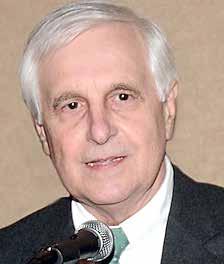
The Graphic War highlights prints and printmakers from the Civil War discussing their meaning and the print maker or artist’s goals.
Along with their efforts showing the carnage on fields of battle, northern printmakers also attempted to appeal to those the soldiers left behind. Imaginary views of the home front became important to the families anxious for their loved ones, many away from home for the first time in their lives. The illustrations, artfully composed to show hearth and home, offered comfort to those left behind. They also allowed the viewers to hope for an ultimate reunion with their returning veterans, usually Federal troops. After the war, with reconstruction and the hope of reconciliation in the air, artists continued to depict the hero returning home.
Artist Trevor McClurg was once such entrepreneur. Trevor was the eldest son of Pittsburgh steel foundry owner and politician, Alexander McClurg (1816–1893), a recent immigrant from Ireland. He was one of five children who included a brigadier general, military advisor, and a publicist/bookseller, Alexander Caldwell McClurg.
By 1838, Trevor McClurg was exhibiting along with Emanuel Leutze (who painted Washington crossing the Delaware) at the Fourth Annual Exhibition of the Artists’ Fund Society in Philadelphia. Three years later, “he traveled to Düsseldorf with Leutze to study painting at the Royal Prussian Art Academy.” He was one of the “first Americans to be trained there.”

McClurg returned to the United States around 1846. Until about 1859 he lived in Pittsburgh, then moved to New York City.
He returned to Pittsburgh in 1863 where he ran a drawing school until 1865. By 1877 McClurg had moved with his family to Chambersburg, Penn., where he turned to photography professionally.1 The local newspaper, the Pittsburgh Weekly Gazette called McClurg’s drawing of Emmanuel Leutze on exhibit in a local gallery

“the most superb specimen of graphite drawing we have ever seen, and we believe that, without exaggeration, it is the finest ever produced.”2
His painting “Home Again,”
evokes the hero’s return from war. It was originally painted for a James Parke Jr, Esq. From the painting, Dominque Fabronius crafted an evocative remembrance of a joyful reunion. The returning veteran is an officer with one arm in a sling. He is greeted by a throng of children and a pet dog. Every generation is represented seated around the family table representing home, in front of the fire place representing “hearth.” Behind the door, on the wall is a musket and map of the United States. A lone black servant carries our hero’s bed roll. Above
32 CivilWarNews.com June 2022 32 June 2022 CivilWarNews.com
The Brave at Home, no. 3, Kellogg Bros. (All images courtesy Library of Congress)
1864, Civil War Engraving Home On A Furlough, by John Sartain, from a painting by Christian Schussele.
the mantle is a print of George Washington, completing the patriotic, and mythic, return.
A war time rendering of a similar motif is played out doors with similar symbols, the most important being the multigenerational greeting with which the furloughed soldier is met. Children and the usual dog greet the veteran at his front door. One child blows a welcome horn. This happy scene of a Civil War soldier returning home on furlough, was executed by John Sartain in 1864 and published by Bradley & Co. of Philadelphia. Importantly, an inscription below the title reads, “To the Loyal Mothers, Wives and Daughters of our Country, This Engraving is Respectfully Dedicated.”
The original Schussele painting, from which this engraving was made, was done in 1863, and Sartain acknowledges as much with the artist’s signature in the lower right corner. We have written of John Sartain (1808–1897) and his family in previous columns. The artist, Christian

Schussele (1824–1879) was born in Alsace, studied in Paris, and came to the United States in 1847. For 11 years he was director of Pennsylvania Art Schools.
A third example of the patriotic home front is not one of reunion but the dread of separation. The title and the two verses were taken from the poem “The Brave at Home,” by Pennsylvania painter and poet, Thomas Buchanan Read. Published during the war, this period lithograph by the Connecticut lithography firm, Kellogg, depicts a young mother and her son who steels himself for the inevitable. An obligatory pet dog is at their feet. It is one of three numbered “leaving” prints showing the wife and her uniformed husband in number one accompanied by Read’s first stanza, then the wife, family, and soldier in number two with the second verse.3 The title margin contains the third and final stanza of Read’s poem in two columns:
“The mother who conceals her grief, /while to her breast her son she presses/then breathes a few
brave words, and brief, /Kissing the patriot brow she blesses.”
“With no one but her secret God/to know the pain that weighs upon her/sheds holy blood as e’er the sod/Received on Freedom’s field of honor.”
Endnotes:
1. Trevor McClurg. https:// de.zxc.wiki/wiki/ Trevor_McClurg
2. Pittsburgh Weekly Gazette, February 1, 1869.
3. Nancy Finlay, ed., Picturing Victorian America: Prints by the Kellogg Brothers of Hartford, Connecticut, 1830–1880. p. 144.
After 43 years in the museum field, Cilella devotes his time collecting American prints and maps and writing. His last professional position was President and CEO of the Atlanta History Center. His most recent books are Upton’s Regulars: A History of the 121st New York Volunteers in the Civil War (U. Press Kansas, 2009). His twovolume Correspondence of Major General Emory Upton, (U. of Tennessee Press, 2017), received the 2017-2018 American Civil War Museum’s Founders Award for outstanding editing of primary source materials. His latest book “Till Death Do Us Part,” an edit of Upton’s letters to his wife 186870, was published in 2020 by the Oklahoma University Press.
H
and members of the Ulysses S. Grant Association. President Ulysses S. Grant (portrayed by Dr. Curt Fields) was also in attendance to celebrate the tree dedication and the kicking off the year of celebrations and observations of his 200th birthday with the USGA.
The capstone event for the USGA annual meeting was the Ulysses S. Grant Scholars Symposium held in the Bettersworth auditorium during that afternoon. The format was a panel discussion by five noted Civil War authors.


The panel was composed of:
✤ Dr. John Marszalek, former Executive Director and Managing Editor of the Ulysses S. Grant Association, and Professor Emeritus of the Department of History at Mississippi State University;
✤ Dr. Caroline Janney, John L Nau, III, Professor in History of the American civil War and the Director of the John L. Nau, III Center for Civil War History-University of Virginia;
✤ Dr. Edna Greene Medford, Professor in the Department of History in the College of Arts and Sciences-Howard University;
✤ Dr. Anne Marshall, Associate Professor of History and incoming Executive Director of the Ulysses S. Grant Association-Mississippi State
from page 31
University;
✤ Dr. Joan Waugh, Professor Emeritus of History-University of California at Los Angeles. As promised the panel carried on a deep discussion of Civil War History and its present status in our culture. The future of Civil War History scholarship looks bright, indeed.
The John Y. Simon award is given annually by the Association for recognition. This year the award was given to Dr. Michelle Krowl.
The meeting was brought to a close on Saturday morning with two necessary functions. The first was the meeting of the USGA Board of Directors. Several new Board members were voted in and took seats.
New Board members were: Dr. Lis Pankl, (Dr. Pankl is the Dean of Libraries at MSU), Stephen Cunetto, Eileen Bradner, Dr. Curt Fields, and Dr. Michelle Krowl (as Vice President), and Dr. Anne Marshall (as Executive Director).
The second, and final, function was a general membership meeting where the new Board of Directors members were introduced. Suggestions for the location of the next annual meeting were entertained and noted for planning. The meeting was then adjourned.
“Simply put: tell the simple truth, simply.”
Professor E. Veritas
33 June 2022 33 June 2022 CivilWarNews.com CivilWarNews.com
Home Again. W. Endicott & Co., printer, Dominique C Fabronius, lithographer, Trevor McClurg, 1816–1893, artist.
Dr. Anne Marshall (incoming Executive Director of the USGA), Dr. John Marszalek (Outgoing Executive Director of the USGA), Dr. Caroline Janney, Dr. Edna Greene Medford, Dr. Joan Waugh. (Eileen Brabner)
. . . . . . .
Publishers/Authors Send your book(s) for review to: Civil War News 520 Folly Road, Suite 25-379 Charleston, SC 29412
Grant . .
. .
Spotsylvania’s Laurel Hill Battlefield

 by Tim Talbott
by Tim Talbott
After two days of brutal but ultimately indecisive fighting at the Battle of the Wilderness (May 5-6, 1864), Ulysses S. Grant decided to move the Army of the Potomac around the Army of Northern Virginia’s right flank and drive for Spotsylvania Court House. This route provided the Federals the most efficient road to leave the Wilderness, maneuver into the open, maintain contact with supply lines, and potentially threaten Richmond. While United States cavalrymen battled Confederate horsemen to open Brock Road on May 7 at Todd’s Tavern (a property that CVBT is currently campaigning to save), Federal infantry began moving toward Spotsylvania Court House. Leading the way was the Army of the Potomac’s V Corps, commanded by Gouverneur K. Warren. Unbeknownst to Warren, brigades from the Army of Northern Virginia’s First Corps, now under Richard Herron Anderson, due to James Longstreet’s wounding on May 6, arrived in the Spotsylvania area just before Warren’s men. After the V Corps pushed back Fitzhugh Lee’s Confederate cavalry, thus freeing the road
south of Todd’s Tavern, early on May 8, they soon began encountering more Rebel cavalry and Anderson’s rapidly arriving infantry, who were directed into defensive positions just northwest of the court house by J.E.B. Stuart.

This first round of two and a half weeks of fighting at Spotsylvania Court House became known as Laurel Hill. While the fighting occurred largely on the Spindle Farm, some early wounded received aid behind Union lines

at Laurel Hill, the Couse family home. The house name became confused with the battle’s true location, and the moniker Laurel Hill stuck. This engagement was only a prelude to more desperate slugfests that erupted on May 10, 12, and 18, which would make Spotsylvania one of the most fiercely fought battles of the Civil War. However, Laurel Hill’s tactical importance in denying the Federals easy access to Spotsylvania Court House should not be overlooked.
Researching Laurel Hill fighting uncovered a couple of “common folks,” a soldier and a civilian, who had their lives drastically altered by this often-neglected phase of the Spotsylvania fighting. Sgt. Charles Hunter, and Kate Couse, each experienced Laurel Hill from different viewpoints, but learning about their battlefield trials offers a different perspective, one sometimes missed when looking at actions primarily through the Official Records.
Charles Hunter was a typical citizen soldier. Hailing from Philadelphia, he enlisted in what would become the 88th Pennsylvania Infantry in August 1861, as a twenty-year-old. As was common of Civil War soldiers, Hunter endured periods of illness, and saw his fair share of combat during his service, but he continued writing home. On the morning of May 8, 1864, Hunter and the 88th, as part of Richard Coulter’s Brigade, John Robinson’s Division, V Corps, were among the soldiers who arrived on the scene and entered the fray against John Henagan’s South Carolinians and Benjamin Humphreys’ Mississippians at Laurel Hill.
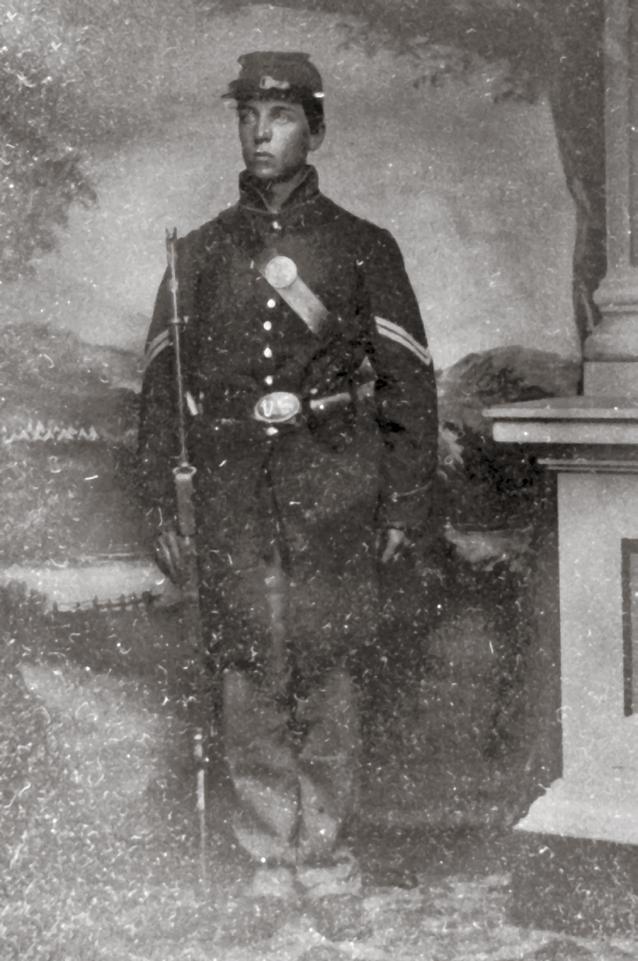
Pvt. John D. Vautier, who later
became the regimental historian of the 88th Pennsylvania, wrote: “The brigade [Col. Coulter’s], supporting some other troops, marched straight across the field, receiving the enemy’s fire when about half way over.” Since the Confederates had arrived first and thrown up improvised works, “they were comparatively safe, while the Union battalions were raked by a severe artillery and musketry fire.” The results were as expected: “the plain being strewn with the disabled, while many of the slightly wounded made their way to the rear,” Vautier explained. Among the injured was Sgt. Charles Hunter, who received a painful gunshot wound to the groin.
Evacuated from the field and transported first to Aquia Landing, and then by boat to the Mansion House hospital in Alexandria, Hunter finally received treatment. A physician, writing to Hunter’s father explained that the bullet went all the way through, causing a painful wound. Hunter spent about seven months in Alexandria recovering. He returned to the 88th at Petersburg in December 1864, received a promotion to lieutenant, and then resigned in June 1865 before the regiment mustered out.
34 CivilWarNews.com June 2022 34 June 2022 CivilWarNews.com
Couse House V Corps Hospital. (Library of Congress)
Corporal Charles Hunter.
Laurel Hill looking toward the Confederate position. (CVBT)
Spindle Farm house site. (CVBT)
Originally from New Jersey, the Couse family had settled in Spotsylvania County around 1840. When sectionalism tore the country in two, their continued commitment to the United States set them apart from most of their neighbors. By the spring of 1864, only three Couse sisters, Kate, Ann, and Sarah, still lived at their home northwest of the Spindle Farm. When the scene of battle shifted from the Wilderness to Spotsylvania Court House, the Couse sisters and their home were overrun with soldiers from both sides.
Kate Couse recorded some of the tumultuous happenings she experienced in the days before and after the fighting at Laurel Hill. On May 7, in a diary-style letter, Kate wrote, “Calmer this morning, we are choked with smoke—from camp fires—and woods fires.” Much of the fuel came from the Couse Farm’s fence rails. She continued that, “the place is alive with waggons moving, the field in front of the house is full of waggons moving to and fro.” As mentioned earlier, their home was used as a hospital for wounded soldiers so Kate and her sisters must have seen terrible things they would never forget. One can almost hear the sadness in her voice when she wrote, “This war, this war.”
After the Civil War, Kate’s brother, Peter Couse, applied for compensation for damages to their Spotsylvania farm. Due largely to their unwavering loyalty, they received payment. However, while financial reimbursement certainly helped repair and rebuild, it did not erase the anxiety and sights of suffering she and her sisters endured.
Whether in the army carrying a rifle, or on the home place holding a family together, Civil War battlefields intruded on common people’s lives, leaving an uncommonly profound impact.
Two pieces of property associated with the Laurel Hill fighting are preserved by CVBT. More information on the Po River I & II tracts is available at: https://www.cvbt.org/po-river.
Tim Talbott is the Chief Administrative Officer with the Central Virginia Battlefields Trust. The mission of CVBT is to preserve land associated with the four major campaigns of: Fredericksburg, Chancellorsville, the Wilderness, and Spotsylvania. To learn more about this grassroots preservation non-profit, which has saved over 1,550 acres of hallowed ground, please visit: www.cvbt.org.
Coming Soon: Beyond the Battle A Gettysburg Experience Like Never Before
ADAMS COUNTY, Penn.—
Imagine millions of rare Gettysburg artifacts, letters, diaries, photographs, records, battlefield relics, and souvenirs, all at dire risk of destruction. This is the reality for the Adams County Historical Society (ACHS), a nonprofit headquartered in a weathered Victorian house on the edge of Gettysburg. There is no climate control, nor is there fire protection; a stunning reality for “Gettysburg’s Historical Society.”
The ACHS collection, amassed over a dozen decades since the organization was founded in 1888, is a treasure trove of rare materials. To name just a few: a rifle owned by civilian hero John Burns; an original program from the Gettysburg Address, the first Gettysburg town lot map drawn on animal hide in 1785, and personal items that belonged to notable Americans including Francis Scott Key, Thaddeus Stevens, and the Eisenhowers; all of whom had a connection to Gettysburg’s storied past.
A gem of the Society’s holdings is its civilian accounts of the Battle of Gettysburg

and Lincoln’s November 1863 visit. Over 300 in number, they provide a fascinating and often underappreciated dimension of the Gettysburg story. Imagine what it was like for ordinary citizens who witnessed dramatic, and often traumatic, events during the battle. Some were active participants, dropping everything to care for the wounded, bury the dead, and rebuild a shattered community. Their stories matter.
In 2020, ACHS launched a capital campaign to fund construction of a new Gettysburg home. Adams County’s Commissioners donated land and $1 million to get the project moving. The initial goal of $5 million would have allowed ACHS to build a large storage facility with room for a few exhibits and public programming space, but when ACHS staff and volunteers began talking about the project, Gettysburg enthusiasts from around the country responded. Gifts poured in and the initial fundraising goal was surpassed. The excitement and enthusiasm allowed ACHS to dream bigger. As of this month, May 2022, the Society

has brought in over $8.5 million with a goal of raising at least $2 million more to complete the project.
There is a lot to be excited about. With help from national figures such as Ken Burns, author Jeff Shaara, and filmmaker Jake Boritt, the ACHS team is bringing an experience to Gettysburg like nothing ever imagined. The history center, located north of town, is already under construction; it will include an artifact-packed museum, a research library and archives, and a spacious event center.
The museum, Gettysburg Beyond the Battle, will be a must-see for Civil War buffs from around the country. Starting with the early history of Gettysburg and surroundings, the exhibits take a deep dive into the stories of local families during the battle. The feature gallery is an immersive room where visitors will enter a home caught between the Union and Confederate lines. Here, you’ll feel floors shake, hear shells burst overhead, and listen as one family grapples with life-or-death decisions from a dark cellar below.
This is just one moment in a museum full of stories and artifacts you’ve never seen or heard before. They are stunning, representing a side of Gettysburg

that helps us better understand the significance of the battle and its impact on real people in a small American community. These are the same scenes playing out today in other parts of the world, where innocent civilians, especially children, encounter the horrors of war every day. Beyond the Battle will help visitors understand that it happened here, too.
In addition to the museum, ACHS hopes you will take advantage of its frequent program offerings featuring some of Gettysburg’s top historians: Tim Smith, Sue Boardman, and William A. Frassanito, to name just a few. All three are playing key roles in the development of the new history center.

ACHS will formally open to the public in 2023, ahead of the summer tourist season.
To learn more about the project, please visit achs-pa.org, where you can sign up for our newsletter, program updates, and find information about donating to the new building campaign. Every dollar will be put to good use, so please consider becoming part of this historic effort! Donations can be made online or by mailing checks to ACHS at PO Box 4325, Gettysburg, PA 17325. Other giving options are available on our website https:// www.achs-pa.org.
35 June 2022 35 June 2022 CivilWarNews.com CivilWarNews.com
The Society’s new History Center, under construction just north of Gettysburg.
An original program from the Gettysburg Address, in the collections of ACHS.
Some of the Society’s rare artifacts, including a bulletridden sign that hung in Gettysburg’s main square in 1863.
Caught in the Crossfire - the core exhibit in Gettysburg Beyond the Battle.
The Atlanta Intelligencer Covers the War
Who Was “Clio”?
 by Stephen Davis
by Stephen Davis
The study of Civil War journalism has come a long way in the last few decades. That’s especially true regarding Confederate newspapers.
Fifty years ago, the go-to source was J. Cutler Andrews, The South Reports the Civil War (Princeton University Press, 1970). Since then, we’ve had studies of prominent editors and reporters, such as Knights of the Quill: Confederate Correspondents and their Civil War Reporting, a collection of twenty-nine articles edited by Patricia G. McNeely, Debra Reddin van Tuyll and Henry H. Schulte (Purdue University Press, 2010). In his essays on Partisans of the Southern Press: Editorial Spokesmen of the Nineteenth Century (University Press of Kentucky, 1994) Carl R. Osthaus includes one on John M. Daniel, the acerbic editor of the Richmond Examiner. Upstaging this is now Peter Bridges’ book, Pen of Fire: John Moncure Daniel (Kent State University Press, 2002).
There are also studies of individual Southern newspapers during the war. Barbara Ellis’ The Moving Appeal: Mr. McClanahan, Mrs. Dill, and the Civil War’s Great Newspaper Run (Mercer University Press, 2003) deserves mention if only for its ponderous size (677 pages). Ford Risley of Penn State advances the scholarship with Dear Courier: The Civil War Correspondence of Editor Melvin Dwinell (University of Tennessee
Press, 2018). Professor Risley’s work focuses on the Rome (Georgia) Courier during the war. Bill Hendrick and I hope to make a similar contribution with The Atlanta Daily Intelligencer Covers the Civil War, which is due out this summer from the University of Tennessee Press.

Dear Courier reprints a number of Dwinell’s articles in the newspaper. So does Writing & Fighting the Confederate War: The Letters of Peter Wellington Alexander Confederate War Correspondent, edited by William B. Styple (Belle Grove Publishing, 2002). Along with Felix G. De Fontaine, Peter Alexander, writing as “P.W.A.” for the Savannah Republican, is considered one of the preeminent reporters for Confederate newspapers.
(Incidentally, one thing we’ve noticed is that historians speak of Confederate newspapers, not Federal ones. Partly this is a temporal device, referring to the four-year period of Southern nationhood. But it is also a reflection of the nationalistic fervor one sees in almost all papers operating in Confederateheld territory.1)

Despite all this commendable scholarship, “the whole topic of the Civil War-era press deserves much more study,” George C. Rable wrote as recently as 2015 in Damn Yankees! Demonization & Defiance in the Confederate South (Louisiana State University Press). Incidentally, when Dr. Rable spoke to the Atlanta Civil War Round Table a few years ago on his book, he quoted the
Confederate soldier who declared in January1862, “I have no more idea that the Yankees will whip us than that a chicken can teach Latin.”
[General laughter.] …which brings us back, in a roundabout way, to our lead question: who was Clio?
Well, aside from being the Greek Muse of History, “Clio” was the pen name of a reporter whose writing appeared the Atlanta Daily Intelligencer from November 1862 to June1864— more than 150 articles in all, most sent as letters from Richmond.
It was the style back then for veteran reporters to cloak their identities in colorful noms de plume. Dr. Andrews lists a lot of them: for the Richmond Dispatch, Peter Alexander took the name of “Sallust.” (Many field correspondents wrote for multiple papers and took different names for themselves; Sallust [86-35 B.C.] was a Roman historian.) Another example: Dr. George W. Bagby was the Charleston Mercury’s prolific reporter in Richmond, “Hermes.”
For a long time, the identity of another reporter for the Mobile Advertiser & Register, “Shadow,” was unknown. Andrews devoted a whole Appendix to the problem, and guessed that “Shadow” was Henry Watterson, who after the war famously edited the Louisville CourierJournal. (There’s an avenue in the city named after him.) More recently, Barbara Ellis and Stephen Dick have confirmed Watterson as “Shadow” by using a computerized word content analysis that compared “Shadow’s” wartime writings with Watterson’s postbellum articles in the Louisville paper.2

But we still don’t know the identity of “Clio.” Andrews doesn’t even list him in his index, though he was able to identify Richard Hawes as “Vidi” for the Atlanta Intelligencer.3 (Vidi is Latin for “I see.”)
Was “Clio” an Atlantan? Perhaps. In his letter from Richmond dated Nov. 12, 1862, he wrote of the recent death of Confederate Brig. Gen. Allison Nelson, “formerly Mayor of our city,” Nelson served briefly as Atlanta’s mayor in 1855. We also think that “Clio” was an
established man of letters. In introducing him, Intelligencer editor John Steele referred to “Clio” as “one of the most distinguished Southern writers.”
“Clio” reported on everything he heard about: a skirmish at Culpeper Court House, prospects for Confederate recognition by England, the state of the Yankee army (“an unwieldy, half disciplined and unmanageable body”). He commented that dueling between gentlemen was passing out of fashion. He engaged in spiteful denunciation of speculators, people driven by “a reckless, insatiable avarice,” such as hotel keepers who had the temerity to demand three dollars a day: “if the government does not speedily intervene to put down extortion with a strong hand…I do not know what will become of us.”4
Because “Clio’s” handwritten articles reached the Intelligencer office by mail, they were usually several days behind the paper’s
telegraphic dispatches, sent from Richmond, that John Steele relied upon for news of the war in Virginia. More than once did the editor throw up his hands at these postal delays: “How is this? Surely there must be some neglect somewhere!”
“Clio,” of course, could only relate what he had heard, and pass it on with comment. Burnside and the Army of the Potomac, he wrote on December 5, “has taken to ditching on the other side of the Rappahannock in the mud, and does not venture across for falling on a Lee shore with a Stone wall in the rear.”5
“Clio” sometimes scooped the telegraph. When he wrote from Richmond in May 4, 1863, that “General Jackson, by ascending the Rappahannock, succeeded in getting into the rear of the enemy,” he gave readers of the Intelligencer (printed on May 9) their first information about Stonewall’s flank attack at Chancellorsville.
36 CivilWarNews.com June 2022 June 2022 CivilWarNews.com The Atlanta Daily Intelligencer Covers the Civil War Stephen Davis and Bill Hendrick Order online UTPress.org or call 800-621-2736 THE UNIVERSITY OF TENNESSEE PRESS Available NOW
The Atlanta Daily Intelligencer, Sunday, May 3, 1863.
Throughout his writing, “Clio” exhibited the fervent Southern patriotism characteristic of Confederate newspapermen. “With two such Generals as Lee and Johnston, the one in Virginia, the other in Georgia, at the head of two such armies,” he enthused on June 2, 1864, “we may well be hopeful, if not confident, of the glorious results of the coming conflicts.”6
Okay. To paraphrase Meatloaf, one out of two ain’t bad.
Endnotes
1. Richard M. McMurry, “The Confederate Newspaper Press and the Civil War: An Overview and a Report on Research in Progress,” Atlanta History, vol. 42, nos. 1-2 (Spring-Summer 1998), 59-75.
2. Barbara G. Ellis and Steven J. Dick, “’Who Was “Shadow”?’ The Computer Knows: Applying Grammar-Program Statistics in Content Analyses to Solve Mysteries about Authorship,” Journalism & Mass Communication Quarterly, vol. 73, no. 4 (Winter 1996), 947-62.
3. J. Cutler Andrews, The South Reports the Civil War (Princeton: Princeton University Press, 1970), 251.
4. “CLIO,” “FROM RICHMOND” (November 12), ADI, Nov. 18, 1862; Franklin M. Garrett, Atlanta and Environs: A Chronicle of Its People and Events, 2 vols. (Athens: University of Georgia Press, 1962 [1954]), vol. 1, 387 (on Nelson); “OUR RICHMOND CORRESPONDENT, ‘CLIO,’” ADI, Nov. 18, 1862; “CLIO,”
“FROM RICHMOND” (November 15), ADI, Nov. 21, 1862; “CLIO,”
“FROM RICHMOND” (November 26), ADI, Dec. 3, 1862.
5. “THE RICHMOND MAIL,” ADI, Nov. 28, 1862; “CLIO,” “FROM RICHMOND” (December 5), ADI, Dec. 9, 1862.
6. “CLIO,” “RICHMOND” (May 4), ADI, May 9, 1863; “CLIO,” “FROM RICHMOND” (May 27), ADI, June 2, 1864.

Stephen Davis, our “Critic’s Corner” columnist, resides in Cumming, Ga., with his wife Billie and two cats. His doctoral dissertation at Emory (1979) is entitled, “Johnny Reb in Perspective: The Confederate Soldier’s Image in the Southern Arts.”
Claudius Crozet
VMI’s First President and his Blue Ridge Tunnel Today
by Joan Wenner,
J.D.
Claude “Claudius” Crozet was born in 1789 near Lyons, France, and educated as an engineer., After serving as an officer in Napoleon’s army and surviving two years as a Russian prisoner of war captured at Moscow, he immigrated to America in 1816, joined the U.S. Army, and had a stint at West Point.
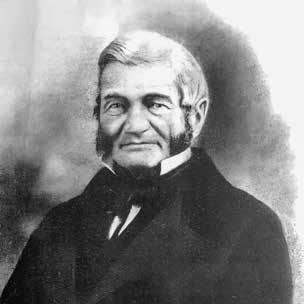

Later holding engineering positions within the Virginia Board of Public Works, Crozet began pushing his “vision that a new railroad could open the Shenandoah Valley for settlement and serve as a corridor for tying the Virginia Tidewater to the Ohio River.”
From 1837–1845, Crozet was the Virginia Military Institute’s first presiding officer, the president of its Board of Directors.
In 1849, the Virginia State Legislature incorporated the Blue Ridge Railroad so exasperatingly pushed by the civil engineer. In 1849 Crozet became the chief engineer of the Blue Ridge Railroad Company. The Blue Ridge Tunnel opened in 1858.

During the Civil War General Stonewall Jackson used the tunnel to quickly move forces from the Valley to east of the Blue Ridge, much “to the puzzlement and consternation of Union military leaders.”
Crozet died in Midlothian, Va., aged 75 years, during January 1864 and was buried in the VMI Cemetery in Lexington where an impressive monument marks his grave. It’s said that the also impressive Library of Virginia in Richmond contains hundreds of his plans and drawings.
The rural Albemarle County town of Crozet 12 miles west of Charlottesville at the base of the Blue Ridge was renamed in his honor in 1870.
In 2014, Col. Edwin Dooley, a co-author of a 1989 Crozet biography spoke at VMI’s Crozet Library, describing his remarkable engineering feats
and stating that he was one of Virginia’s most important historical figures saying, “It’s incredible what he did...”
Note: The (Claudius Crozet) Blue Ridge Tunnel restoration project created a 2-1/2 mile hiking trail from its eastern trailhead in Nelson County, Virginia, through the 4,273-foot tunnel to the trail’s western end in Augusta County.
See: nelsoncounty.va.gov/ parks-recreation for information about this “Rails to Trails” project that incorporates the third largest pedestrian tunnel in the U.S. Open sunrise to sunset though check first for closure for scheduled maintenance. Call 434-263-7130 or go online for additional information and
37 June 2022 37 June 2022 CivilWarNews.com CivilWarNews.com
The Intelligencer building at the north end of Whitehall Street in Atlanta. George Barnard took this photograph during the Federal occupation, September-November 1864. The building was destroyed in the downtown fires of November 15. (Library of Congress)
Claudius Crozet as as a colonel (left) and as a civilian. (Crozet Gazette)
Claudius Crozet Blue Ridge Tunnel north entrance.
maps go to nelsoncounty.com/ blue-ridge-tunnel.
Joan Wenner, J.D. is a longtime historical and maritime writer with a law degree and contributor & book reviewer for Civil War News. Comments are welcomed at joan_writer@yahoo.com.
Claudius Crozet.
New Perspectives on the Atlanta Campaign and General John Bell Hood
by Stephen Davis
The Sesquicentennial of the American Civil War is over, and the country’s cultural conversation has moved on to other things. But for us armchair historians, the anniversary of the war’s end gives opportunity for us to sit back and consider what we’ve learned, say, since the war’s last big anniversary, the Centennial of the 1960s.
In the case of the Atlanta Campaign, and Confederate General John Bell Hood, it’s been a lot.
Fifty years ago, the bibliography could list just one book devoted to the Atlanta Campaign: Union Gen. Jacob Cox’s Atlanta (1882), by a division commander in Sherman’s army! Now, by my count, we have fully six more: Samuel Carter III, The Siege of Atlanta, 1864 (1973); James McDonough and James Jones’ War So Terrible (1987); Albert Castel’s superb Decision in the West (1992); Richard McMurry‘s excellent Atlanta 1864 (2000); my own Atlanta Will Fall (2001); and Russell Bond’s enjoyable War Like the Thunderbolt (2009). Wait, there’s more. An excellent documentary history is Larry M. Strayer and Richard A. Baumgartner, eds., Echoes of
Battle: The Atlanta Campaign 1991). Atlantan William R. Scaife contributed The Campaign for Atlanta (second edition, 1993). Lee Kennett personalizes the story in Marching Through Georgia: The Story of Soldiers and Civilians During Sherman’s Campaign (1995). Philip L. Secrist follows the armies’ routes in Sherman’s 1864 Trail of Battle to Atlanta (2006). A handy tour guide comes in Jay Luvaas and Harold W. Nelson, eds., Guide to the Atlanta Campaign: Rocky Face Ridge to Kennesaw Mountain (2008). Marc Wortman’s The Bonfire: The Siege and Burning of Atlanta (2009) is more readable than enlightening. A novel approach in the literature is Larry Peterson’s Decisions of the Atlanta Campaign: The Twenty-One Critical Decisions That Defined the Operation (2019).
And all of this doesn’t include recent studies of individual battles, Pickett’s Mill, Kennesaw Mountain, Peachtree Creek, July 22, Ezra Church, by Ecelbarger, Hess and others.
The really new focus, however, has been on General Hood.
In the spring of 1864 Jefferson Davis wanted Joe Johnston to take the initiative before Sherman did.
Hood, who arrived at Dalton from Richmond in February to lead an infantry corps in Johnston’s army, knew this. When Johnston balked, blaming enemy numbers and position as well as his own weaknesses, Hood secretly wrote Richmond five letters during March and April (e.g., to Davis March 7, “I am eager to take the initiative,” and to Bragg, April 13, “I have done all in my power to induce General Johnston to move forward.”)

Historians have known of this backstabbing for a while. What’s new, though, is recent awareness that other of Johnston’s generals were doing the same thing. A notorious example is when W. H.T. Walker sent Davis Pat Cleburne’s emancipation proposal after Johnston said he wouldn’t. Back-biting among officers in the Army of Tennessee was a long tradition, as in the case of States Rights Gist writing Bragg, “Hindman is one of the Chief Offenders, and is I think the most dangerous man of all.” (Bragg Papers, Western Reserve). Joe Wheeler, for instance, wrote Bragg on July 1, complaining that Johnston would not let him raid
into Sherman’s rear (Connelly, Autumn of Glory, 409-10).
Johnston was unaware of Hood’s letters to the boss, and after Hood’s arrival, seemed to favor him more than Hardee, the army’s senior corps commander. At Resaca it was to Hood that Johnston gave the assignment for the May 14 attack. He did the same at Cassville and at Pickett’s Mill. When Johnston was interviewed by Georgia Senator Ben Hill on July 1 on campaign prospects, only Hood was in the room. All of this caused Hardee to grumble to his wife Mary, “Hood, I think, is helping the General to do the strategy, and from what I can see is doing most of it.”
In mid-July 1864 Sherman’s armies were just a few miles outside Atlanta. Fearing that Gen. Joseph E. Johnston would give up the city without a decisive battle, the Confederate government relieved Johnston, promoted Hood and gave him command of the Army of Tennessee. A half-century ago, the literature characterized the administration’s decision as a huge mistake. A good instance comes from the writing of Joseph B. Mitchell,
who in Decisive Battles of the Civil War (1955), informed us that “the change was not popular.” “One man was pleased,” he adds: “General Sherman.”
All this has changed. The new viewpoint is expressed by William C. Davis in his biography of the Confederate president (1991): “Davis’s only mistake with Johnston was assigning him to the command in the first place and then retaining him while he gradually lost most of north Georgia.”
In the centennial, Hood at Atlanta was characterized as headstrong, even stupid, for ordering futile frontal infantry assaults against entrenched enemy forces. “The recklessness of Hood,” as William Key termed it (The Battle of Atlanta, 1958). To be sure, Hood’s decision to attack Schofield at Franklin five months later colors this perception. But the current literature stresses that around Atlanta in July ’64 Hood ordered attacking battles that were not only justifiable, but which offered successful prospects. At Peachtree Creek he sought to exploit a two-mile gap between Thomas’ and Schofield’s
Lt. Russell Tuttle of the 107th New York recorded in his diary for Nov. 5 that he attended “33d Mass. concert in the evening.” But he attended others that week; George Barnard’s pictures capture their advertising billboards. Sometime around Nov. 8, Barnard took a number of shots of a train being loaded at Atlanta’s downtown rail depot, called the “car shed.” Everyone knew that soon Sherman would be abandoning Atlanta, leading his army away on a march whose destination only a few high-ranking officers knew. But all could see the quartermaster and commissary officers loading northbound trains with supplies and equipment that would not be carried in wagons in the forthcoming march.
The perspective is a long one, encompassing army wagons to the left, the car shed, and right behind it the light-colored Georgia Railroad Bank Agency and the threestory “Concert Hall”—which really wasn’t a concert hall (the Atheneum was).

38 CivilWarNews.com June 2022 38 June 2022 CivilWarNews.com
John Bell Hood
armies (“not since Chickamauga have chance and circumstance so favored the Army of Tennessee,” Castel writes). East of Atlanta on July 22 he ordered a Jacksonlike flank attack after Sherman foolishly sent off the cavalry guarding the left of McPherson’s army, as Gary Ecelbarger emphasizes in The Day Dixie Died (2010). Historians have zoomed in on the possibilities for Hood’s flank attack. Hardee’s march would follow a route “that had brought success to Stonewall Jackson at Chancellorsville” (Samuel Carter, 1973). “Could Hood repeat Chancellorsville?” (McDonough and Jones, 1987). “If Hood’s plan works…he will win the most spectacular victory of the war” (Castel, 1992).
Confederate infantry did indeed launch frontal assaults against entrenched Federals at Ezra Church on July 28, but that’s only because S. D. Lee disobeyed Hood’s orders. Richard McMurry did something you don’t always see: he went back to the OR to read how Hood intended a flank attack on July 29. Earl Hess’ recent, fine battle-study makes this clear (Chapel Hill, 2015).
(By the way, Sherman should not be given a free pass on this score. Recall that he ordered
frontal infantry attacks against entrenched Rebels at Resaca, New Hope Church, Pickett’s Mill, Kennesaw Mountain, and Utoy Creek. Sherman’s mediocrity as battle commander is also an emerging theme in the Atlanta Campaign literature.)
Ongoing study of other battles has led to changed understandings. Fifty years ago most writers accepted Joe Johnston’s contention that at Cassville, May 19, Hood called off a planned Confederate attack after he got spooked by a “phantom” Federal column that never existed. Today, the consensus favors Hood’s side of the argument. (Go to the federal WPA pavilion along US Highway 41 at Cassville, and you’ll see a new plaque with a map clearly showing the menacing Yankee troops.)
Numbers are in the mix, too, as evidenced by the confusion around Confederate casualties at Peachtree Creek. In his article for Battles and Leaders (1888), Sherman pegged the Rebels’ losses as 4,796, and that number has unfortunately been accepted by too many: William Key, The Battle of Atlanta (1958); Wilbur G, Kurtz (CWTI, July 1964); Samuel Carter, The
Siege of Atlanta (1973); Wiley Sword, Embrace an Angry Wind (“nearly 5,000 men,” 1992); Webb Garrison, Atlanta and the War (1995), Philip L. Secrist, Sherman’s 1864 Trail of Battles (2006); Steven E. Woodworth, This Great Struggle (2011). Even McMurry, in his John Bell Hood (1982), guesses “perhaps 5,000.” Fortunately, there are a few scholars who actually did the math, beginning with Livermore (1901), who came up with ca. 2,500. Following him are Connelly (1971); myself in Blue & Gray, August 1989; Castel (1992); Russell Bonds in War Like the Thunderbolt (2009). McMurry switches to 2,500 in Atlanta 1864 (2000).
Robert Jenkins’ calculation of Southern losses in his recent history of the battle (Mercer University Press, 2013) is 2,316, and that against 2,167 Union killed, wounded, or missing! (Sherman put Federal casualties at 1,710.)
Ellen Ponder had abandoned her house well before it came under Federal artillery fire because of its unlucky location so close to Confederate lines. Sherman ordered a heavy bombardment of Atlanta and the Rebel works for August 9. That day, Union Lt. W. W. Hopkins, a signal officer perched in a tree near the lines of Brig. Gen. John W. Geary’s Division of the XX Corps, reported “the most noticeable effect of the shelling was in front of General Geary’s Division at a fort and house. The fort was struck; also the works near it, and the house had a large hole knocked in it besides being riddled.”

Several days later, a reporter for the New York Times reported, “Bundy’s battery (Thirteenth New York) has been making a target of one very fine house, until now it presents a very ventilated appearance.” Bundy’s 13th New York battery was attached to Geary’s Division. (All photographs courtesy Library of Congress)
Speaking of numbers, let’s talk about Wheeler’s raid into Sherman’s rear, that began August 10. Edward Pollard started it all in his Southern History of the War (1866): “Hood made the fatal mistake. He sent off Wheeler and his entire cavalry [emphasis added] to raid on Sherman’s line of communications.” Eisenschiml and Newman (1947) claim, “He sent off his entire cavalry” [emphasis again added]. Check the returns of August 10 (the day the raid started): cavalry in the Army of Tennessee numbered 12,803 officers and men. Even those who acknowledge that Wheeler rode off with 4,500 troopers, less than half of the mounted arm, still claim that Hood’s decision to send off the raid was a blunder (for which, by the way, Hood had sought and gotten President Davis’ express permission). “All Hood had done was deprive himself of ‘his eyes and ears,’” Castel wrote in CWTI, February 1978, ignoring that Red Jackson’s 4,500 troopers kept Hood very well informed of Sherman’s movements while Wheeler was away.

Even when Hood deserves censure (Franklin perhaps, certainly Nashville), in recent decades writers have been more understanding, if not forgiving of his faults. No small thanks go to a University of Southern California sociologist, of all people: Dr. Laurence J. Peter, who coined the phrase “Peter Principle” in 1969. Now just about everyone on the planet knows that hierarchies (including armies at war) tend to elevate individuals to their levels of incompetence. We’ve known about this practice for a long
time. Ambrose Burnside was a competent corps leader in the Army of the Potomac, but he failed miserably as its commanding general. Same thing with Joe Hooker: able corps leader, but a dud as army commander at Chancellorsville. Now, to explain such rise-and-falls we have a catchy sociological term, and it’s stuck. Hood is “the General Whom the President Elevated Too High” (Herman Hattaway, 1999). He is “’A Bold Fighter’ Promoted beyond his Abilities” (Keith Bohannon, 2004). Perhaps the most important development in the new “Hoodiana” overturns the old legend that the general, maimed from his wounds, resorted to laudanum. Several decades ago, writing for Blue & Gray, I traced the wobbly origin of this libel: Percy Hamlin’s 1940 biography of General Dick Ewell. I then looked at how later writers have alluded to it, and saw a lot of supposition and guessing. Even the redoubtable McMurry wrote in 1972 that Hood “may have been taking a derivative of laudanum” to ease pain from his wounds. Seeing no confirming evidence in the literature, I sought to squelch the drug-use contention. Stephen M. Hood has finally done so in his study of Hood (The Rise, Fall, and Resurrection of a Confederate General, 2013), thanks to his discovery of the medical reports of Hood’s surgeon, Dr. John Darby. “Sam,” as we call him, has
recently repeated the argument in Civil War Times Illustrated: “Myth Busted!,” the front cover exclaims.
Those of us long-of-tooth believe that if you just live long enough, new discoveries will come along to make us all feel young and excited again. Proof comes in Sam Hood’s recent work, The Lost Papers of Confederate General John Bell Hood Having discovered—I’m not kidding—a cache of Hood letters in a descendant’s attic, Sam has seen to their publication (Savas Beatie, 2015). Henceforth all Civil Warriors writing about John Bell Hood must steep themselves in this wonderful research trove. Here’s just an example. In 1879 Gustavus W. Smith, who commanded the Georgia Militia in the Atlanta Campaign, reflected in a letter to Hood on General Johnston’s statement to the Richmond authorities, made July 16, 1864, that he intended the have the militia hold Atlanta’s fortifications while he took his three infantry corps out of the city to maneuver against Sherman. Smith’s comment: “Carrumba! Wouldn’t that have been a kettle of fish?”
“Kettle of fish,” indeed!
Stephen Davis and Atlanta newspaperman Bill Hendrick have collaborated on a book, The Atlanta Daily Intelligencer Covers the Civil War. It is due out this summer from the University of Tennessee Press.
39 June 2022 39 June 2022 CivilWarNews.com CivilWarNews.com
Join the Crew! civilwarnavy.com 1 Year—4 Issues: $37.95 Subscribe Now at civilwarnavy.com Or send a check to: CSA Media, 29 Edenham Court, Brunswick, GA 31523 International subscriptions subject to postage surcharge.
Insightful, Inspiring, and Powerful Letters
Society and Cultural in the Choctaw Nation
Choctaw Confederates: The American Civil War in Indian Country. By Fay A. Yarbrough. Bibliography, index, notes, maps, 280 pp., University of North Carolina Press, uncpress.org. 2021. $32.95.

Reviewed by Wayne L. Wolf
neighbors. Hence, the combination of Choctaw reliance on slavery, geographic proximity, pressure from neighbors in Texas and Arkansas, Southern promises of national sovereignty, and the assumption of annuity payments compelled their alliance with the Confederacy.
In 1861 enlistments for the South ran high, although initial battles, e.g. Round Mountain, Chusto-Talasah and Chustenahlah were basically fought against Creek Indians who initially sought neutrality. Enlistments began to wane by late 1862; as the war dragged on supplies, clothing, arms, food, and victory became scarcer.
My Work Among the Freedmen: The Civil War and Reconstruction Letters of Harriet M. Buss. Edited by Jonathan W. White and Lydia J. Davis. Photos, notes, index, 244 pp., 2021. University of Virginia Press, www.upress.virginia.edu. $39.50.
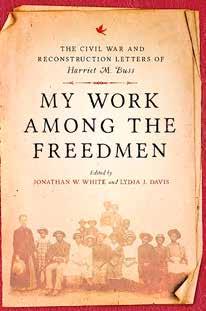
Reviewed by Jonathan A. Noyalas
Choctaw Confederates is an attempt to explore motivations behind the enlistment of over 3,000 Choctaws in the First Choctaw and Chickasaw Mounted Rifles and their alignment with the Confederacy. An extensive portion of this book, however, deals with three crucial elements: national sovereignty, states’ rights, and the survival of slavery, and how they affected Choctaw culture. The text traces the Choctaw experience with the U.S. government before the war, the treaties that shaped Choctaw relations with Washington, and the cultural and social attributes of Choctaw society. Essentially, the Choctaw experience before the war was a Southern experience, wherein slavery played an integral part; the Choctaws thus saw their support of the South as crucial to their own survival as a separate, sovereign nation, with slavery preserved.
The author exhaustively details how the Civil War offered Choctaw men an opportunity to recover their identity as warriors, altered gender and property roles, and gave the Choctaw common ground with their Confederate
Unfortunately, the author gives only passing treatment to combat where Choctaws were engaged. Battles like Honey Springs, Boggy Depot, Perryville, Backbone Mountain, Caving Banks, and Locust Grove receive virtually no treatment. Valuable insight into the Choctaw performance in these encounters, the impact on their communities, and their military significance is never discussed. Rather sociological perspectives, such as a necessity for warriors, marriage customs, and political participation take center stage. A short chapter on Reconstruction and the Choctaw Freedom Bill of 1883 was almost exclusively a discussion regarding the rights of the newly freed slaves.

The author’s first book on Race in the Cherokee Nation could easily have served as the title of this book by substituting the word Choctaw. For the historian who wishes to delve into the sociological and cultural basis of Choctaw society, this book would be helpful; but for any understanding of the contributions of Choctaw Confederates to the war effort there is little to tantalize the military historian.
Wayne L. Wolf is Professor Emeritus at South Suburban College, the author of over thirty Civil War books and articles, and past president of the LincolnDavis Civil War Roundtable.

When Harriet Buss passed away on October 10, 1895, a correspondent for The News and Observer in Raleigh, North Carolina, wrote that throughout her distinguished career as an educator Buss “enjoyed the high esteem and friendship of teachers and pupils.” Historians, particularly those who have studied the education of African Americans after the Civil War, have made excellent use of Buss’ correspondence. Now through the efforts of historians Jonathan White, a prolific author and professor at Christopher Newport University, and Lydia Davis, an educator at the Mariners’ Museum in Newport News, Buss’ correspondence ranging from March 1863 to April 1871 is available in this valuable and brilliantly edited collection.
Born in 1826 in Sterling, Massachusetts, Buss, who began her teaching career in 1850 as an assistant teacher at Charlestown Female Seminary in Massachusetts, proved an important figure in the education of formerly enslaved people on the Sea Islands of South Carolina during the Civil War and in Norfolk, Virginia, and Raleigh, North Carolina, in the conflict’s aftermath.
While this significant collection of letters offers much to individuals interested in the
education of African Americans during and after our nation’s most tumultuous moment, this superb assemblage offers important insight into the ways teachers who journeyed south formed bonds with each other, coped with the various pressures they confronted, established relationships with their students, and the manner in which formerly enslaved people commemorated emancipation. Additionally, Buss’ letters provide critical insight into figures who played important roles in the establishment, perpetuation, and expansion of educational institutions for African Americans after the conflict. Particularly noteworthy are Buss’ musings about Henry Martin Tupper, a veteran of the 36th Massachusetts Infantry, who established the Raleigh Baptist Institute for the Education of Colored Men for the Ministry after the Civil War’s end. By 1875 this institution evolved into Shaw University, a place near and dear to Buss’ heart as she not only taught there and assisted in raising funds to help sustain it, but upon her death in 1895, gave a portion of her estate for its perpetuation.
Beyond this volume’s usefulness to understanding the education of African Americans during and after the Civil War and the challenges confronted by students and teachers, Buss’ correspondence offers a lens through which one can gain a more cogent understanding of the Civil War era from a woman’s viewpoint. Throughout, Buss peppered her correspondence with thoughts about various military figures she encountered in her work. For instance she found James Montgomery, colonel of the U.S. Second South Carolina Volunteers, a regiment of largely escaped slaves, “quite interesting,” while she possessed “no high opinion”
of Union general David Hunter. Additionally, Buss’ letters are filled with opinions about political matters, including criticism of Senator Stephen Douglas and President Ulysses S. Grant, and what she believed should have been the fate of the Confederacy’s leaders. For example, after Buss visited Fortress Monroe and the place Jefferson Davis was held for two years, Buss seethed with anger. She did not believe that Davis and other former Confederate authorities suffered severe enough punishment. “I am afraid a large number of them would go to the gallows if I was to sit as judge and pronounce sentence when they were tried for treason,” Buss explained.
Finally, Buss’ letters offer important insight into the ways in which women utilized the Civil War era to assert themselves and create new opportunities.
Buss’ letters are powerful, insightful, and valuable to anyone desiring a deeper understanding of education’s critical role in aiding African Americans realize emancipation’s promise. As an educator, I find Buss’ letters inspiring. Editors White and Davis are to be commended for producing such a terrific volume that deserves wide readership.
Jonathan A. Noyalas is director of Shenandoah University’s McCormick Civil War Institute in Winchester, Virginia, a professor in Civil War Era Studies at Shenandoah University, and founding editor of Journal of the Shenandoah Valley During the Civil War Era. He is the author or editor of fourteen books. Noyalas’ latest book, Slavery and Freedom in the Shenandoah Valley during the Civil War Era, was published by the University Press of Florida.
40 CivilWarNews.com June 2022 40 June 2022 CivilWarNews.com
our New Website CivilWarNews.com
Visit
Maryland Unionist Recollects His Wartime Experiences
and every poor sailor that was washed ashore had his face and every other part of his body these crabs could reach eaten off or partly eaten off.” Ever a collector of relics and souvenirs, on one occasion, Maguire attempted to pilfer a flag from the mast of the Cumberland, which still waved above the waterline after the ship had been sunk by the CSS Virginia, but an officer “gave me a lecture and said he was ordered to send me back up that mast and place that Union Jack just where I had got it from.”
In Virginia, Maguire was “horror struck” the first time he saw an amputation, and he ran from the tent and cried for an hour. Soon, however, he found himself assisting medical personnel in their duties. At Antietam he even met Clara Barton on the battlefield. His description of his experiences at Antietam is vivid, at times moving.
A Different Kind of Narrative
Day by Day Through the Civil War in Georgia. By Michael K. Shaffer. Footnotes, bibliography, index, appendices, maps, photographs, illustrations, hardcover. 442 pp., 2022. Mercer University Press, www.mupress. org. $37.
Reviewed by Gould Hagler
31, 1865, there is an entry for each and every day of the war. In 1862 and most of 1863, much of the action occurs on the coast, where the Federals imposed a naval blockade, held strong points, threatened Savannah, and raided other cities on and near the coast.
Afterwards the focus shifts to Chickamauga, then to the Atlanta Campaign and the March to the Sea. The book concludes with a few key events in the immediate post war days. The final entry is for July 15, 1870, the date Georgia re-joined the Union.

book to what happened inside Georgia, with limited coverage of battles in other places in which Georgians fought and which, of course, left an impact at home.
This slim, handsomely illustrated volume is worthy of the attention of Civil War enthusiasts. Writing three decades after the war, George Maguire recollected his experiences as a young teenager during the most tumultuous years in American history. During the presidential election of 1860, he participated in a Republican parade in Baltimore, a decision that led him to be grievously wounded. “Now! Let them have it,” he heard a voice yell. “I saw the men drop. Lanterns were bursted by stones and bricks and while wondering what the trouble was, ‘bang’ my head felt as if a steam car was pushing through it, and something wet was running all over my face and down my neck. I drew my hand over my face, looked at what it collected and saw blood.” Maguire fainted, the first of several times he did so in the memoir.
After joining the 5th Maryland Volunteers, not as an enlisted man, but more as a “mascot,” since he was underage, Maguire soon found himself in Newport News, Virginia, one day after the famous Battle of Hampton Roads in March 1862. “For a week or ten days afterwards the dead would be continually washed up on the beach,” he wrote. “All around this part of Virginia the waters were full of crabs,
From late 1862 to early 1863, Maguire was stationed at Harper’s Ferry, where he assisted his brother-in-law, who had been appointed provost marshal in the town. Today, tourists can visit a recreated provost marshal’s office at the National Park site. Maguire did routine clerical work, such as writing out passes, but he also recorded his experiences searching for spies and contraband materials. The remainder of his war experience was back in Baltimore, where he worked at Hicks U.S. General Hospital. His brief description of this period is richly detailed; he even described the dreams of one patient, and will be of interest to readers curious about medical history of the war.
The Civil War Memoir of a Boy from Baltimore is a quick, excellent read. There are very few published primary accounts by Union soldiers from Maryland. Hopefully more like this one will follow.

From the title of historian Michael Shaffer’s newest book, one might expect a reference work, akin to E.B. Long’s The Civil War Day by Day. The work is quite different, however, and (to my knowledge) unique. This fine volume is not intended to live on a shelf until you want to look something up; it is to be read all the way through.
To merit inclusion, as Shaffer states in the preface, an entry had to be derived from “a quill scrolling the parchment or a press imprinting type on the day the activity occurred.” These are real primary sources and include messages and orders sent by military and civil officers, diaries, letters, and newspapers. The reader hears from a wide variety of people reporting on a wide variety of events.
By listening to these diverse voices, the reader follows the course of events from before the war starts until after it ends. This is a narrative history with a different kind of narration, an approach that presents a little of everything: military and naval events; the efforts of the Confederate leaders to manage shortages of manpower and every other necessity; the impact of the war on civilians; an economy stressed by war; the coverage of the war in the press; and, of course, the political goings on.
Almost all sources are used multiple times. As we follow Governor Brown we come to know him rather well, and understand how he became a thorn in President Davis’s side.
Diarist Fanny Andrews pops up frequently to report on her experiences and to share her observations, as does another diarist, Sam Richards. These, and all the other contributors, are woven into a highly readable account of the war fought in this one state.
The author devotes most of the

All readers will be grateful for the plentiful notes which are placed where they belong, at the bottom of every page, informing the reader about the sources and pointing him to where he can go for more information. Appendices include the texts of Georgia’s Declaration of Secession, Alexander Hamilton Stephens’s Cornerstone Speech, the state’s 1861 Constitution, proclamations issued by Governor Brown and General Johnston, and Sherman’s Special Order 15.
Shaffer’s approach has no space for in depth treatment of any one thing, but we get a taste of everything. The reader floats along in the stream of history, catching a glimpse of everything along the way, not stopping, but knowing that, aided by the footnotes and bibliography, he can go back anytime and linger at any point along the stream and learn more.
Gould Hagler is a retired lobbyist living in Dunwoody, Ga. He is a past president of the Atlanta Civil War Round Table and the author of Georgia’s Confederate Monuments: In Honor of a Fallen Nation, published by Mercer University Press in 2014. Hagler speaks frequently on this topic and others related to different aspects of the Civil War and has been a regular contributor to CWN since 2016. He can be reached at gould.hagler@gmail. com.
520 Folly Road, Suite 25 PMB 379 Charleston, SC 29412
Jonathan W. White is associate professor of American Studies at Christopher Newport University and is the author or editor of twelve books. In October 2021 he will publish
To Address You As
My Friend: African Americans’ Letters to Abraham Lincoln (UNC Press) and My Work Among the Freedmen: The Civil War and Reconstruction Letters of Harriet M. Buss (UVA Press). Visit his website at jonathanwhite.org.
On one page a newspaper editor reports on a battle and presents an optimistic view of his army’s prospects. Further down, a general orders troops transferred from one hard pressed place to another. Following that, the reader sees a testy message sent by Georgia’s governor to the Confederate Secretary of War. Then a soldier writes a letter to his wife and diarist traveling through the state describes conditions in places visited by Sherman’s troops.
The book begins on November 21, 1860, when Gov. Joseph Brown called for a convention to consider “the crisis in our national affairs.” From the first day of January, 1862, until May
The best selection of historical reenactment items from Medieval era to Civil War era. Print catalog is only $2 and includes over 60 pages of our famous tents with a full-color section. Digital catalog is free to download by visiting PantherPrimitives.com.
SEND for your copy TODAY. 304-462-7718

41 June 2022 41 June 2022 CivilWarNews.com CivilWarNews.com
The Civil War Memoir of a Boy from Baltimore: The Remembrance of George C. Maguire, Written in 1893 Edited by Holly I. Powers. Foreword by David Price and Jake Wynn. Photos, notes, index. 106 pp. University of Tennessee Press, 2021. www.utpress.org. $45.
Reviewed by Jonathan W. White
your book(s) for review to:
War News
Publishers/Authors Send
Civil
Panther Primitives • P.O. Box 32 • Normantown, WV 25267
Reproduction Tents
make the
Historical
We
best tents in history!
By Jack W. Melton Jr.
Hidden Evidence
A Look Inside Civil War Artillery Projectiles
"Through Jack’s superb photography; the collector and professional can now view an extensive exposure to sectioned projectiles. This is new for the average person in that for the first time since radiography; one can examine the internal makeup of a shell."


CWO4 John D. Bartleson Jr., U.S. Navy EOD
Author of Civil War Explosive Ordnance 1861–1865
What do they say?
Jack Melton’s latest endeavor, Civil War Artillery Projectiles – The Half Shell Book, is a remarkable addition to Civil War artillery ammunition literature. For archaeologists and collectors the clearly written text and the excellent photographs provide a wealth of information to properly identify recovered shells and burst fragments. For bomb squad and EOD specialists this book should be on every units’ shelf. The material found in these pages will help EOD personnel identify what has been found, whether or not it is dangerous, and how to inert the round without the necessity of destroying an important historic object. This book takes Civil War artillery ammunition studies to a new level.
Douglas Scott Adjunct Research Faculty, Colorado Mesa University. Author of Uncovering History: Archaeological Investigations of the Little Bighorn.
Theexpedienttriedbytheconfederatesinimitationof
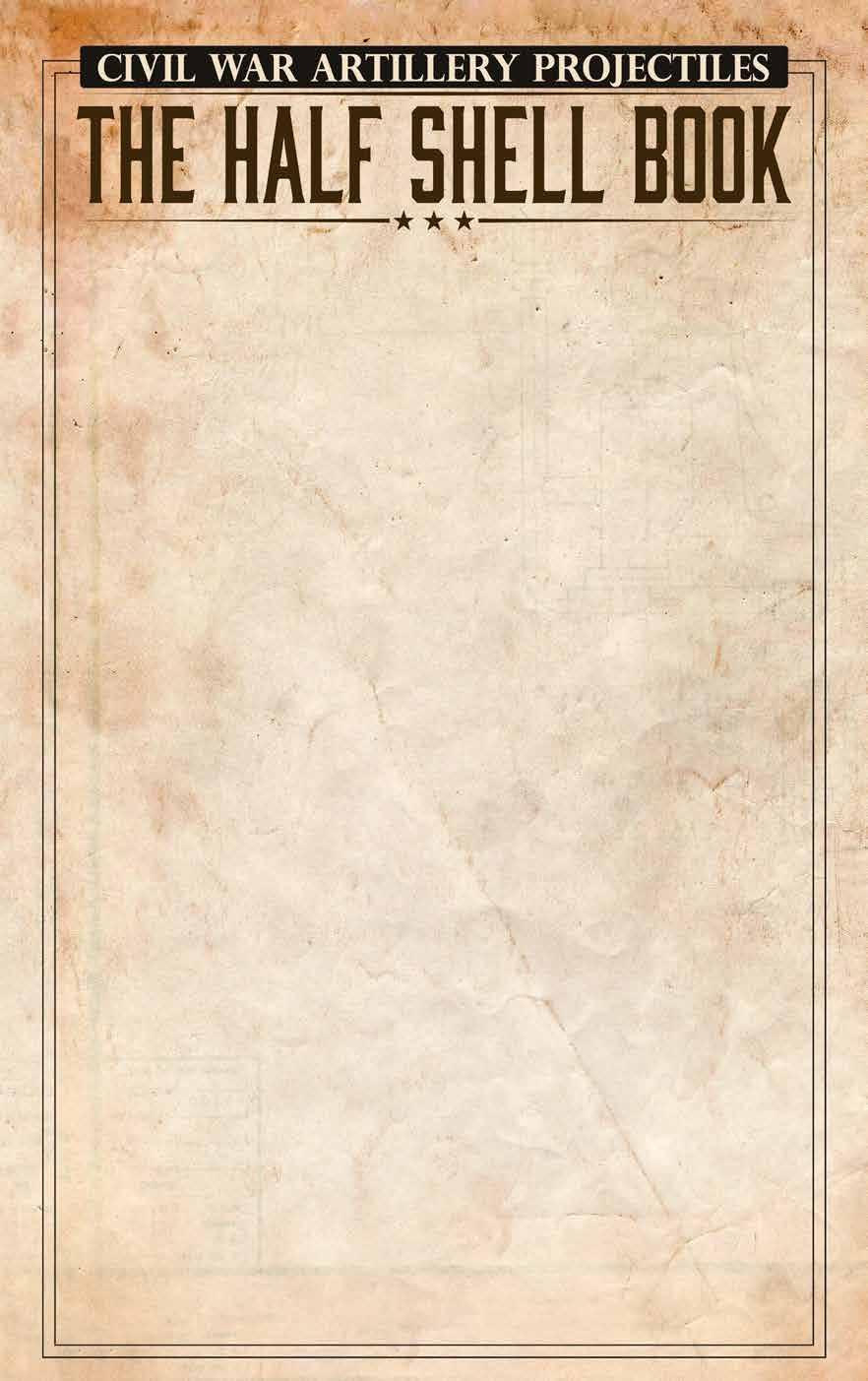
mixingmusketbulletswiththeburstingchargeof
6-PounderSphericalCaseShot
Inthisexample,riflebulletswereutilizedasthecaseshotmaterialincluding3-ring.58caliberbullets,3-ring.69caliberbul lets,andU.S.ring-tailSharpsbullets.IthasabrassBormannsupportplug(underplug)thatiscountersunkonbothsidesof
flame’scommunicationchannel.Theblackpowderburstingchargewaspouredinloosearoundthebullets.Thismethoddid notworkverywellandoftenonlysucceededinblowingthefusesout.Projectilesfilledwithbulletsusedascaseshotarerare. Thisspecimenwasrecovered,alongwithotherConfederateandUnionprojectiles,fromthepost-CivilWardumpsitelocated neartheConfederatePowderWorksinAugusta,Georgia.
• 392 pages of full color photographs with descriptions
• Covers projectiles, fuses, canister, grapeshot and more



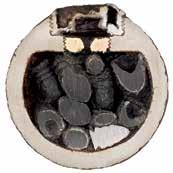
• 850 photos, drawings, radiographs, patents and maps
• A must for every serious artillery enthusiast
or fill out this form and mail to
Wow. I have been reading a lot of different books on ordnance from this era, but this one takes the cake. Most of the other books drift off in directions that are not helpful with the ordnance specific information I am usually looking for. But this book stays on task and topic from start to finish.
Tom Gersbeck MFS, Graduate Faculty, Arson-Explosives Investigation (AEI), School of Forensic Sciences, Oklahoma State University
Jack Melton’s new book Civil War Artillery Projectiles – The Half Shell Book, promises to be one of the most important volumes on Civil War artillery in recent times. Anyone who has studied the wide variety of Civil War projectiles knows that what is inside is just as important, and maybe more so, than what is outside the shell. In this book, cutaway shells are graphically explained with superb color photographs and detailed notes. They reveal important details and differences in a variety of similar projectiles that tell us U.S. from C.S. and between type variations, in a way that no other approach has ever done. It is supremely helpful in explaining to others just how a shell works, whether it is still dangerous or not, and why.
Les Jensen
Former
Curator
of the Museum of the Confederacy
42 CivilWarNews.com June 2022 42 June 2022 CivilWarNews.com
74
ChapterThree –SphericalHalfShells
Diameter: 3.58 inches Bore Diameter: 3.67 inches Gun: 6-pounderSmoothbore Weight:5.2poundsConstruction: Case shot Fusing System:Time,Bormann Fusing Material:LeadandtinalloyFuse Thread Diameter: 1.65 inches Fuse Hole Length:.75 inch Sabot: Cup Sabot Material: Wood Wall Thickness: .31 inch Matrix Material: None Case Shot Material: Lead Case Shot Diameter: Varied calibers Bormann time fuse Brass supportplug Sharpsring tail bullet Horseshoe powdertrain Confederate
the
ourprojectiles,(andoccasionallyusedbyourownmen,)of
smallshells,
259 Civil War Artillery Projectiles – The Half Shell Book Federal 3.8-Inch James Type I Shell Diameter: 3.72 inchesBore Diameter: 3.80 inches Gun: 14-pounder James Rifle Length 6.75 inches Weight: 10.0 pounds Construction: ShellFusing System: Percussion, James Fusing Material: Brass Fuse Thread Diameter: .90 inch Fuse Hole Length: 1.56 inches Sabot: Ring or band, lead (missing) Sabot Height-Width: 2.62 inches Wall Thickness: .62 inch Matrix Material: N/ACase Shot Material: N/A chargeBursting cavity Anvil cap Zinc plunger Iron nipple Fuse powder train Ring base The James percussion fuse consists of bronze anvil cap with zinc plunger fitted with a nipple. Both are smaller in diameter than the James percussion fuse on the previous page. This sub-pattern is commonly called a tie-ring James due to the visible ring extending below the base of the projectile body. The visible small notches, located in the raised portion of the projectile’s ribbed body, were developed in an attempt to improve the chances of the lead sabot remaining attached to the projectile body during firing. This pattern James projectile is less common than the flat based James projectile. James percussion fuse
wasentirelyfutilefromwantof weightinthebullets. –GeneralHenryL.Abbot
Purchase Online
below. Name: Mailing Address: City: State: Zip Code: Phone: Email: ☐Standard Edition $89.95 + $8 shipping* = $97.95 ☐Deluxe Edition $175.00 + $8 shipping* = $183.00 (100 limited edition copies) *Shipping via USPS Media Mail. USA Only. International orders email for shipping quote. If you wish to have the author inscribe the book beyond signing and dating it (on the title page) please indicate your preferred text below: Custom Text: U.S. Dollars Only Check or Certified Funds Check# Make checks payable to: Historical Publications LLC ☐ Discover ☐ Mastercard ☐ Visa Card#: Exp. Date: Security Code: Name on Card: Billing Address: City: State: Zip Code: Signature: Historical Publications LLC 520 Folly Road, Suite 25 PMB 379, Charleston, SC 29412 800-777-1862 • mail@artillerymanmagazine.com
at www.ArtillerymanMagazine.com
the address
A Confederate Account Of War And Suffering
Writings of a Rebel Colonel: The Civil War Diary and Letters of Samuel Walkup, 48th North Carolina Infantry. Edited by Kemp Burpeau. Map, photos, notes, bibliography, index. 231 pp. McFarland, 2021. www. mcfarlandbooks.com/. $39.95.

Reviewed by Jonathan W. White
and Walkup received false intelligence about the battle. On July 4, 1863, he wrote: “It is a glorious Fourth to me. I am a happy man. Glorious news from the army from York Pass to New Orleans, Louisiana to battle Gettysburg.” He would soon learn the truth, concluding that Gen. George G. Meade was “after” Lee “like a pack of wolves elated with victory, enraged by invasion, prompted by hate and national pride.” The “reported successes,” Walkup wrote, “were fabricated by dispatchers” that had “perhaps” been sent “to deceive us.”
When Walkup’s wife urged him, “Resign and come home,” he replied that he would not be able to make enough money on the home front. His letters nevertheless describe a deep affection for his wife, including occasional reference to dreams about her.
Such Men Will Not Be Conquered
gloomy fast.”
Samuel Walkup’s Civil War letters and diary offer an intriguing Confederate perspective on the Civil War. A prominent lawyer, planter, and politician from the Old North State, Walkup led the 48th North Carolina Infantry through some of the most important battles of the eastern theater. His writing captured pivotal and interesting moments. Following the Battle of Sharpsburg, for example, he described a conversation with several Yankees, “who began to discuss the tiresomeness of the war and argue for the Union.” Walkup cut them off, saying, “That was not a subject we could hold discussion, however glad we would be for the war to end.”
Walkup’s description of Fredericksburg in December 1862 is intense. He described commanding his men as the “balls and bombs are flying thick and heavy over us.” During the fight, Walkup “went from right to center looking after and cheering the boys and was wounded in the right hip, a flesh wound not very serious.” Meanwhile, he described wave after wave of Union attacks; “Their very number made their courage more awful. They came up by acres and our boys fired into the dense masses without fear of missing and with a fair prospect of cutting down two at a time.”
The 48th missed Gettysburg,
For the last year or so of the war, Walkup regularly kept a tally of deserters, and his diary offers insights into Confederate military justice. The accounts of the siege of Petersburg are gripping, and his observations were keen. On May 29, 1864, he wrote, “Desolation marks the track of an army like some fiery blast consuming everything and leaves the rich and poor in one common ruin.” A few days later he explained, “I dig my own hole for safety, and it is much needed. Thank God that it is no worse.”
On June 6 he added, “A constant hammering of rifle keep [sic] up a monotonous music of death and funeral elegy during the whole morning, and death dealing Minie balls rattle rudely over and around us.” Perhaps capturing his frustration, he wrote on June 21, “Old Lee makes himself an undignified paternal fussypuff for his petted and spoiled darlings.” By February 1865, prospects were “getting more
Walkup’s diary is supplemented by letters to family members and North Carolina’s Governor Zebulon Vance. While the family letters depict Walkup’s devotion to loved ones, the letters to Vance reveal a devotion to his men. In one letter to the governor, he described “the destitute condition” of the regiment. Many were “completely and absolutely barefooted,” their pants were “ragged and out at the seats,” and they desperately needed food, blankets, and medical supplies. “With Lincoln’s [preliminary emancipation] proclamation promising freedom to the slaves, what might the suffering, exhausted, ragged, barefooted, and dying non-slaveholders of the South, who are neglected by their government and whose suffering families at home are exposed to so many evils, begin to conclude?” Walkup warned that the “spirit of disaffection” might “lead to open mutiny.”
These few quotations are intended to give readers a sense of the perspectives and insights offered by Walkup. Readers interested in the military history of the Civil War will find much, much more worthy of their attention in Writings of a Rebel Colonel.
Jonathan W. White is professor of American Studies at Christopher Newport University and the author or editor of 13 books. His most recent are To Address You As My Friend: African Americans’ Letters to Abraham Lincoln (UNC Press, 2021), My Work Among the Freedmen: The Civil War and Reconstruction Letters of Harriet M. Buss (UVA Press, 2021), and A House Built By Slaves: African American Visitors to the Lincoln White House (Rowman and Littlefield, 2022).
Suffering in the Army of Tennessee: A Social History of the Confederate Army of the Heartland from the Battles for Atlanta to the Retreat from Nashville. By Christopher Thrasher. Illustrated, notes, bibliography, index, University of Tennessee Press, utpress.org. 380 pp., 2021, hardcover. $39.95.
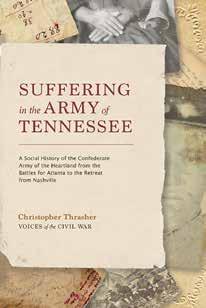
Reviewed by Wayne Wolf
Part of the Voices of the Civil War Series, this volume draws upon a plethora of primary sources; letters, diaries, after action reports, and official records, to weave together a narrative of the common soldier’s trials and tribulations in the Army of Tennessee. As such, this book is replete with the horrors of a fratricidal war where thousands of young men marched on frozen roads without shoes, slept in the open air without blankets, marched with wet clothing, fought off lice, parasites, bacterial infections, and disabilities from battle wounds. It was not just the soldiers who suffered; civilians lost their crops, their livestock, their horses, their homes, and not infrequently their lives.
Christopher Thrasher does not leave out the sordid incidents of wives raped, family members tied to fence posts, forced evacuations of families, desertions by soldiers to protect their homes, and an economic disaster that left scars on the South for decades. Neither does he omit the feelings of soldiers about their leaders. How did they view the constant retreats of General Joseph Johnston, the impetuous attacks of General John Bell Hood that decimated the army, or the individual bravery of Generals Cleburne, Granbury, Adams, etc.? What made individual soldiers desert
to protect their families; what motivated others to stay until the bitter end? How did trench warfare, retreats, and inaction breed desertion while aggressive attacks boosted morale? All these questions are answered in the words of the surviving soldiers who saw their friends murdered before their eyes (one shot 47 times at the Battle of Franklin), going days with little or nothing to eat except possibly green corn, seeing their horses die of starvation, giving up their scant rations to help feed the starving families of Atlanta, watching 120 boxcars of ammunition and supplies go up in flames as they abandoned Atlanta, and then being attacked by bushwhackers as they retreated. Further evidence of the hardships faced by the common soldier could also be seen in their need to fashion moccasins out of fresh calf hides for shoes, making coffee out of acorns, going through withdrawal from want of tobacco, and eating fodder intended for their horses. Such were the desperate measures that confronted the Southern soldier in their quest for an independent country. Likewise, for the wives, parents, and children left behind the war meant the loss of loved ones far from home, the demolishing of their homes, fences, barns and means of survival, the diseases brought home by their soldiers, and the years of recovery in a world turned upside down.
Christopher Thrasher’s social history is a welcome addition to the literature on the common soldier; a topic long neglected in favor of biographies of generals and statesmen. His use of primary source material is to be commended for its depth and breadth. If the reader wishes to experience war’s hell for the individual soldier and his loved ones, this book will be a welcome addition to their bookshelf. The writing flows, the prose is riveting, and except for a few grammatical errors that escaped the editor, is historically accurate and thorough. This book is highly recommended.
Wayne L. Wolf is Professor Emeritus at South Suburban College and Past President of the Lincoln-Davis Civil War Roundtable. He is the author of numerous books and articles on the Civil War and frequently writes for Civil War News and history journals.
43 June 2022 43 June 2022 CivilWarNews.com CivilWarNews.com Publishers/Authors Send your book(s) for review to: Civil War News 520 Folly Road, Suite 25 PMB 379 Charleston, SC 29412 bookreviews@civilwarnews.com


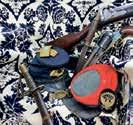














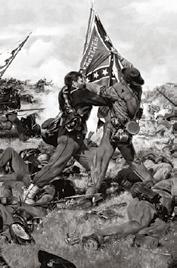




















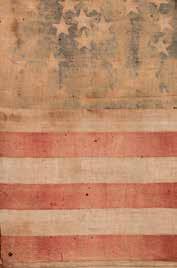

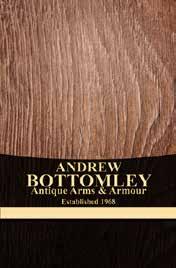






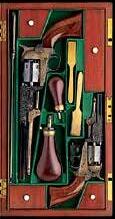


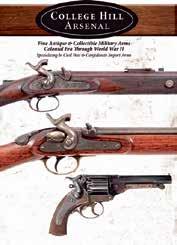























44 CivilWarNews.com June 2022 44 June 2022 CivilWarNews.com CivilWarShop.com Offering the Finest Investment Grade Military Memorabilia since 1981 Buy – Sell – Trade Certified Appraisal Services Life Member Company of Military Historians Lynn and Will Gorges, Proprietors 3910 US Hwy. 70 East New Bern, NC 28560 (252) 636-3039 civilwarshop@gmail.com www.CivilWarShop.com Long Bay Salvage LLC specializes in the recovery and restoration of authentic Civil War Cannon with an emphasis on 10-Inch Columbiads, what has become a rare piece of Civil War history. Long Bay Salvage also works with historical entities (government and private) to recover and conserve large historical artifacts with a specialty in large field and naval artillery pieces. Glenn Dutton Dutton glennjdutton@aol.com Rufus Perdue Perdue rperdue1@sc.rr.com PLEASE CONTACT US FOR MORE INFORMATION www.LongBaySalvage.com Promoters of Quality Shows for Shooters, Collectors, Civil War and Militaria Enthusiasts Military Collectible & Gun & Knife Shows Presents The Finest Mike Kent and Associates, LLC • PO Box 685 • Monroe, GA 30655 (770) 630-7296 Mike@MKShows.com • www.MKShows.com Northwest Georgia Trade Center 2211 Dug Gap Battle Road Dalton, GA 30720 January 30 & 31, 2021 Chickamauga (Dalton) Civil War Show Williamson County Ag Expo Park 4215 Long Lane Franklin, TN 37064 December 4 & 5, 2021 Middle TN (Franklin) Civil War Show l Shiloh 2405 Oak Grove Road Savannah, TN 38372 731-438-3541 ShilohRelics.com History@shilohrelics.com owner Rafael Eledge .com Dealing in the Finest Authentic Militaria Since 1995 with an Emphasis on the American Civil War Pistols, Muskets, Carbines, Rifles, Bayonets, Swords, Uniforms, Headgear, Belt Buckles, Cannon, Buttons, Bullets, Artillery Implements Etc. Mid West Civil War Relics MidWestCivilWarRelics.com Allen Wandling Phone: 618-789-5751 Email: awandling1@gmail.com Museum Quality Civil War Union & Confederate Artifacts! We handle the Best Antique Bowie Knifes, Civil War Swords, Confederate D-guards, Antique Firearms, Dug Relics, Buckles & Belts, Identified Relics, Letters, Documents, Images, Currency, Uniforms, Head Gear & Flags. ROCK ISLAND AUCTION COMPANY REAL ART COMING IN 2021 REAL HISTORY REAL IRON CONSIGN TODAY Contact our Acquisitions Department by calling 800-238-8022 or Email: guns@rockislandauction.com WWW.ROCKISLANDAUCTION.COM Premier: April 16-18, Sept. 10-12 & Dec. 3-5 Sporting & Collector: Feb. 3-6, June 10-11 & Oct. 7-8 Online: Jan. 27, Feb. 24, Mar. 24, April 28, May 26, June 30, July 28, Aug. 25, Sept. TBD, Oct. TBD, Nov. TBD, Dec. TBD DATES SUBJECT TO CHANGE Extremely Rare New Iron Frame Henry Lever Historically Significant, National Treasure Ulysses S. Grant’s Appointment as Major General Signed by and Secretary of War Edwin Stanton Formerly From the Grant Family Historic, Highly Desirable Civil War New Haven Arms Co. Henry Lever Captain Stapleton Wright Historically Significant, Horstman & Sons Sword Presented Recipient Lieutenant Pennsylvania Infantry Historic, Award Winning, Extremely Well-Documented, Model 1850 Staff & Sword Presented to Digman of Co. H, 183rd Pennsylvania Volunteer 2021 AUCTION SCHEDULE: ® Abraham Lincoln Ulysses S. Grant 297 Steinwehr Avenue • Gettysburg, PA 17325 717-334-6245 GettysburgMuseum.com @GettysburgHeritageCenter Operated by the non-profit Gettysburg Nature Alliance Award-Winning MUSEUM Orientation MAP EVENTS... Licensed Battlefield Guided & Other TOURS Gift SHOP BookSTORE Visitor INFORMATION 297 Steinwehr Avenue • Gettysburg, PA 17325 717-334-6245 GettysburgMuseum.com @GettysburgHeritageCenter Operated by the non-profit Gettysburg Nature Alliance Award-Winning MUSEUM Orientation MAP EVENTS... Licensed Battlefield Guided & Other TOURS Gift SHOP BookSTORE Visitor INFORMATION Fine Antiques & Militaria Military Items 1650-1945 Armor Swords Firearms Bayonets Equipment Accoutrements www.csarms.com PO Box 602 9150 John S. Mosby Hwy. Upperville, Virginia 20185 Shop Phone: 540-592-7273 Email: sophiacsarms@aol.com C.S. Arms, Inc. Specialize in U.S. & British Militaria weaves the history behind Civil War flags of Tennessee: the stories of the women who stitched them, the regiments that bore them, and those who served under them and carried them. THE UNIVERSITY OF TENNESSEE PRESS GET YOUR BOOKS DELIVERED UTPress.org or 800-621-2736 This book Please see our website www.AndrewBottomley.com Mail Order Only • Worldwide Shipping Calling the UK from overseas: +44 1484 685 234 Calling our UK cellphone from outside the UK: +44 7770 398 270 email: sales@andrewbottomley.com The Coach House Huddersfield Rd. HOLMFIRTH West Yorkshire United Kingdom HD9 3JJ £7,580 £17,500 £6,950 £3,850 £3,850 £1,750 Valuable Colts Michael Simens HistoricalArms.com Tel: 440-744-9088 mail@HistoricalArms.net Attributed To Rembrandt Peale. Michael Simens HistoricalArms.com Tel: 440-744-9088 mail@HistoricalArms.net Amazing Confederate Arms A Gorgeous, Attic Mint Griswold & Gunnison Revolver. 34 York St • Gettysburg, PA 17325 717-334-2350 • CIVILWAR@UNIONDB.com www. uniondb .com All Hands on Deck! Support Our Mission to Bring You the Naval History “This is the magazine for all things Civil War Navy. From ‘Uncle Sam’s web-feet’ to the ‘grey jacket navy’ and illustrated by beautiful contemporary navy images.” Ron Field, military historian and author of over 45 books, including Bluejackets: Uniforms of the United States Navy in the Civil War Period, 1 Year—4 Issues: $37.95 Subscribe Now at civilwarnavy.com Or send a check to: CSA Media, 808 Drayton St., Savannah, GA 31401 International subscriptions subject to postage surcharge. (Identifier 524548). All Hands on Deck! Support Our Mission to Bring You the Naval History “This is the magazine for all things Civil War Navy. From ‘Uncle Sam’s web-feet’ to the ‘grey jacket navy’ raised by Jeff Davis! It is all here thoroughly researched and illustrated by beautiful contemporary navy images.” Ron Field, military historian and author of over 45 books, including Bluejackets: Uniforms of the United States Navy in the Civil War Period, 1852-1865. 1 Year—4 Issues: $37.95 Subscribe Now at civilwarnavy.com Or send a check to: CSA Media, 808 Drayton St., Savannah, GA 31401 International subscriptions subject to postage surcharge. Sailors and Marines on the deck of the U.S. gunboat Mendota 1864. National Archives (Identifier 524548). P.O. Box 342 Thompsons Station, TN 37179 615-585-0115 Email: brubon2@bellsouth.net Franklin Relics Specializing in Accoutrements, Edged Weapons, Firearms and Uniforms FranklinRelics.com Bruce Hohler Proprietor www.AmericanRelics.net Allen Phillips 1014 Reservoir St., Suite B Harrisonburg, VA 22801 Phone: 540-476-1969 Email: americanrelicsnet@gmail.com American Relics Specializing in Buttons, Buckles, Currency, Hat Devices and other Military Artifacts. www.CivilWarBadges.com Everitt Bowles, Owner • 770.926.1132 1036 Washington Avenue Woodstock, Georgia 30188 The Largest Selection of GAR & UCV Hundreds of Memorabilia Items from Rev War through Vietnam Secure & Easy Guaranteed Authenticity of Every Item Vin Caponi Historic Antiques Vin Caponi, Jr. 18 Broadway Malverne, NY 11565 Store: 516-593-3516 Cell: 516-353-3250 rampantcolt@aol.com http://www.vincaponi.com We carry a very large inventory of Colt and Civil War firearms including muskets, carbines, rifles and accoutrements. Our inventory of historic antiques and firearms begin at the early collectors level and range all the way up to the advanced collector and investors level. 8895 Town and Country Circle • Knoxville, TN 37923 Phone: 865-693-3007 info@armyoftennesseerelics.com Civil War Artifacts Nick Periut Proprietor ArmyofTennesseeRelics.com Buying and Selling High Quality Images, Belt Buckles and Plates, Artillery Shells, rare Bullets and Buttons! Contact Glenn Dutton at: glennjdutton@aol.com or 770-351-7565 BUYING & SELLING Field & Heavy Artillery Cannon, Shells, Fuses & Etc. 2022 Civil War Dealers Directory To view or download a free copy visit: civilwardealers.com/dealers.htm
Visit our new website at CivilWarNews.com and it will take you to HistoricalPublicationsLLC.com. The calendar is online and an updated before the print issue. To submit an event send it to: ads@civilwarnews.com
Before making plans to attend any event contact the event host.
May 20-22, Missouri. Reenactment
The Battle of Carthage was the first full scale battle of the Civil War. The 160th Anniversary Reenactment will be held at Civil War Ranch. Experience the battle that both sides claim to have won. Begin Saturday with the Opening Ceremony at 9 a.m. Continue the day with camp life, drills & demonstrations, Ladies Tea at 10:30 a.m., Arms Inspection at 12:30 p.m., Reenactment at 1 p.m., Cake Walk at 3 p.m. and Civil War ball at 7 p.m. Sunday’s activities include drills & demonstrations 9 a.m. – 3 p.m., Church service at 10 a.m., Arms Inspection at 12:30 p.m. Reenactment at 1 p.m. For more information, www.battleofcarthage.com.
May 29, Penn. Memorial Day Observed at Laurel Hill Cemetery
Original G.A.R. Decoration Day Service of 1868. 3822 Ridge Ave. Philadelphia 12 noon. All are welcome. Laurel Hill is the site of the first Memorial Day in Philadelphia in 1868. Special veterans’ markers will be dedicated at the graves of previously unmarked veterans. Speakers, ceremonies, and pageant will highlight the ceremony. Wreath-laying, speeches, music, and honor guards. Historical groups, veterans, and citizens are urged to participate. Wreaths, military contingents, color guards, music and period civilians are encouraged to participate. For information; 215-228-2800.
June 4-5, Virginia. Reenactment: The Action at Wilson’s Wharf
Located between Richmond and Williamsburg on the James River, scenic Fort Pocahontas is the site of the May 24, 1864, action in which United States Colored Troops defended the fort they built against an assault by Fitzhugh Lee’s Confederate Cavalry. Open to the public 10-4 Sat. and 10-3 Sunday: $10/adults, $8/students; reenactments both days. Civil War camps and enjoy history brought to life through family-friendly activities. For reenactors: pre-registration required starting Jan. 10 at fortpocahontas.org; campsites; Friday officers’ social; Saturday dinner and dance.
June 9-10, Kentucky. Farmington Historic Plantation
Farmington hosts renowned Lincoln historian Harold Holzer at a two-night event. Thursday, Farmington honors Holzer with the Anne Bruce Haldeman award at our annual gala, An Evening in the Garden at Farmington. Holzer will speak about the relationship between Lincoln and the Speed brothers. Friday evening Holzer discusses his book The Presidents vs. the Press the Endless Battle Between the White House and the Media-From the Founding Fathers to Fake News. Both events held under the spacious outdoor Brand Pavilion. Further details & ticketing information can be found at http://farmingtonhistoricplantation.org/evening-in-the-garden-1.
June 11-12, Mississippi. Civil War Show
June 25-26, 2022
All-Star Sport Complex
Eisenhower Inn & Conference Center
2634 Emmitsburg Rd, Gettysburg, PA
717-334-8121 (3 miles south of Gettysburg on Rte 15)
The show will open to the public on:
Sat., June 25 10AM – 5PM | Sun., June 26 9AM – 3PM
Early admission (VIP Passes) will be available for $100 from 12PM to 7PM on Friday, June 24, as well as dealer entry time on both Sat. and Sun. General Admission is $10
Children under 12 are FREE with parent or guardian
Over 300 tables and over 175 dealers from across the country!
For information, contact Brendan Synnamon 717-334-2350 or civilwar@uniondb.com
Website: https://www.gbpa.org/ event/annual-civil-war-relic-show


Civil
War Relic Show will be held at Brandon City Hall, located at 1000 Municipal Drive, Brandon, Mississippi. 300 tables of relics, weapons, prints, documents, artillery, WWI & WWII, bottles, books, currency, living history displays, and more. Admission $7, 12 and under are free. Saturday, 9 a.m. to 5 p.m., Sunday, 9 a.m. to 3 p.m. Contact Tim Cupit at TimCupit@comcast.net or call 769-234-2966. Website is www.scv365.com.
June 25, Virginia. Walking Tour
Shenandoah University’s McCormick Civil War Institute in partnership with the Fort Collier Civil War Center will offer a tour with Prof. Jonathan A. Noyalas, “They Have Completely Surrounded Stine’s House”: The Construction and Early Use of Fort Collier during the Civil War. The one- hour tour, beginning at 9:30 a.m., will be held at Fort Collier, 922 Martinsburg Pike, Winchester, Va. Event is free and open to the public. No pre-registration required. For information; jnoyalas01@su.edu or 540-665-4501.
June 25-26, Pennsylvania. The Original Gettysburg Civil War Artifact Show
The nation’s premier Civil War relic and collectors show at the Eisenhower All Star Complex at 2634 Emmitsburg Rd., Gettysburg. Brendan Synnamon, GBPA Vice President of Administration and the event’s coordinator, is working closely with the Eisenhower Complex to ensure the event follows PA Guidelines for COVID 19 control. Our 300+ tables are a great way to view and even purchase authentic Civil War artifacts. Browse the tables and speak with the vendors who are all well versed in history and artifact identification. Every item has someone willing to give you its history lesson and answer all your questions. $100 VIP Charitable donation includes Friday and early admission for the serious collector. Hours: Sat. 10-5, Sun. 9-2. Admission $10, children under 12 free. For more information visit https://www.gbpa.org/event/annual-civil-war-relic-show.
July 16, Virginia. Walking Tour
Shenandoah University’s McCormick Civil War Institute will commemorate the 158th anniversary of the Battle of Cool Spring with a walking tour at the University’s River Campus at Cool Spring Battlefield (1400 Parker Lane, Bluemont, VA). Tour with Prof. Jonathan A. Noyalas will highlight the stories of individual soldiers and the battle’s impact on soldiers and families. Tour begins at 9:30 a.m. at the Lodge and will last approximately 90 minutes. Event is free and open to the public. No pre-registration required. For information; jnoyalas01@su.edu or 540-665-4501.
Aug. 5-7, Virginia. Reenactment
160th anniversary reenactment of the Battle of Cedar Mountain in Culpeper, “Slaughter on the Mountain,” reenactors welcome! Join a reenactment of the first battle of the Second Manassas campaign on the battlefield. Recreations of battle actions on Saturday and Sunday Aug. 6-7. Event limited to 1,500 troops (artillery, cavalry, and civilians by invitation only). Public talks & demonstrations both days. Sutlers and food vendors will participate. For information; friendsofcedarmountain.org.
45 June 2022 45 June 2022 CivilWarNews.com CivilWarNews.com Deadlines for Advertising or Editorial Submissions is the 20th of each month. Email to ads@civilwarnews.com
49th
Aug. 13-14, Georgia. Civil War Show and Sale

44th Annual Southeastern Civil War & Antique Gun Show in Marietta at the Cobb County Civic Center hosted by the North Georgia Relic Hunters Association. Cobb County Civic Center, 548 South Marietta Pkwy SE, Marietta, GA 30060. Hours Sat. 9 a.m. to 5 p.m., Sun. 9 a.m. to 3 p.m. Admission $6, veterans and children under 10 are free. Show chairman: Ray McMahan at terryraymac@hotmail.com. For more info visit www.ngrha.com.
Sept. 24, Illinois. Civil War & Military Extravaganza
Zurko Promotions presents The National Civil War Collectors Fall Show and Sale which will be held at the DuPage County Fairgrounds, 2015 W. Manchester, Wheaton, Ill. Hours: 9 a.m. to 4 p.m. Admission is $10, Early Admission $25. Free parking. For more info: visit www.chicagocivilwarshow.com or call Zurko Promotions at 715-526-9769.
September 24, Virginia. Walking Tour
Shenandoah University’s McCormick Civil War Institute in partnership with the Fort Collier Civil War Center will offer a tour with Prof. Jonathan A. Noyalas, “A Theme for the Poet, a Scene for the Painter”: Fort Collier and the Third Battle of Winchester. The one-hour tour, beginning at 9:30 a.m., will be held at Fort Collier, 922 Martinsburg Pike, Winchester, Virginia. Event is free and open to the public. No pre-registration required. For information; jnoyalas01@su.edu or 540-665-4501
Sept. 30-Oct. 2, Virginia, Annual Conference

Central Virginia Battlefields Trust hosts its 2022 annual conference, “1862-The War Comes to Fredericksburg.”
This year’s conference kicks off with a Friday evening President’s Reception at the CVBT office. Saturday features a special screening of “Fire on the Rappahannock” in the morning, and river crossings and Prospect Hill battlefield tours during the day. Saturday evening includes a banquet and annual meeting with a keynote address by historian John Hennessey at historic Belmont in Falmouth. Sunday brunch at Stevenson’s Ridge includes a panel discussion moderated by Chris Mackowski with historians Sarah Kay Bierle, John Hennessey, Greg Mertz, and Scott Walker. Full weekend registration is $195.00, or Saturday evening banquet only is $95.00. More information and registration are available at: https://www.cvbt.org/cvbt-annual-conference.
Oct. 1, Pennsylvania. Honor Ceremony
Major Octavius V. Catto Honor ceremony; wreath laying; military salute at the Catto Monument at city hall in Philadelphia at 11 a.m. honoring the great black equal rights and military leader. Wreath-Laying ceremony. All military units, period civilians, veterans and heritage groups are welcome. Colors, wreaths and music encouraged. Following the city hall ceremony, PA National Guard Medal Ceremony at 12:30 p.m. in the Union League for the ‘Major Catto Medal.’ For info: Dr. Andy Waskie awaski01@gmail.com.
Oct. 7-9, Virginia. Period Firearms Competition
The North-South Skirmish Association 146th National Competition near Winchester. Over 3,000 uniformed competitors in 200 member units compete in live-fire matches with muskets, carbines, revolvers, mortars and cannon plus costume competitions and historical lectures. The largest Civil War live-fire event in the country. Free admission, large sutler area, and food service. For more information visit the N-SSA web site: www.n-ssa.org.
Nov. 5, Virginia. Seminar & Tour
Shenandoah University’s McCormick Civil War Institute annual fall seminar and tour with Prof. Jonathan A. Noyalas, “My Mind is Full with Thoughts of the Past”: The Second Battle of Winchester Through the Eyes of Combatants
Middle Tenn Civil War Show
December 3 & 4, 2022
MK Shows presents the 35th annual Middle Tennessee Civil War Show and Sale at the Williamson County Ag Expo Park, 4215 Long Lane in Franklin. The nation’s largest Civil War show, featuring 750 tables of antique weapons, artifacts and memorabilia from top dealers and collectors around the country and encompassing all eras of military history from the Revolutionary War through World War II. Appraisers are always on hand to help you identify and value your military collectibles at no cost. Hours are 9-5 on Sat., 9-3 on Sun. Free Parking. Admission is only $10/ adults and children under 12 are free. For information visit www.MKShows.com (Scan Me) or Mike@MKShows.com.
The Largest Civil War Show Under One Roof!
and Civilians.” $25 registration fee covers morning lecture at Shenandoah University (1460 University Drive, Winchester, VA), lunch at SU, and vehicle caravan of sites, including sites not regularly accessible to the public. Event begins at 10:30 a.m. and concludes at 4 p.m. To register visit su.edu/mcwi. For info; jnoyalas01@su.edu or 540-665-4501.
Nov. 10, Pennsylvania. US Marine Corps Birthday Observance
Laurel Hill Cemetery located at 3822 Ridge Ave, Philadelphia at 11 a.m. at the grave of General Jacob Zeilin, 7th Commandant of the Marine Corps during the Civil War. A special ‘Veterans’ Day tour of heroes ‘killed in action’ and buried at Laurel Hill Cemetery will follow. Co-sponsored by: The Legion Post 405; MOLLUS; General Meade Society For information; 215228-2800, or 215-423-3930, Dr. Andy Waskie: awaski01@gmail.com, www. thelaurelhillcemetery.org
Nov. 12, Virginia. Civil War Show
Bullet and Shell is proud to present the 41st Central Virginia Military Antique Show (formally Mike Kent’s Capital of the Confederacy Civil War Show). In conjunction with the Central Virginia Civil War Collectors Association, we plan to continue to do everything to make this one of the best shows in the country. The show will host vendors and displays of American military history from the Revolutionary War through WWII. Bring your relics for appraisal or to sell. Over 300 tables! There will be many historical items to add to your collection. Show hours are 9-5 on Saturday, vendor setup on Friday. Parking is free and admission is only $10/adults with children under 12 free. For more information or registration go to www.MilitaryAntiqueShow.com.
Nov. 19, Pennsylvania. Remembrance Day in Gettysburg
General Meade & his Generals and the veterans of the Battle of Gettysburg Honor/Dedication ceremonies during the Remembrance Day Observance. Honoring all commanders and veterans of the Battle. Meet at the General Meade Equestrian Monument at 10 a.m. For information; Jerry McCormick at 215-848-7753 or gedwinmc@msn.com.
Nov. 19, Pennsylvania. Gettysburg Remembrance Day Parade
Sponsored by the Sons of Veterans Reserve, the Military Department of the Sons of Union Veterans of the Civil War. Parade briefing at the Unity Park Monument on Lefever St. at 12 p.m. Units form up at Noon on Lefever St. between Baltimore St. and E. Confederate Ave. Parade begins at 1 p.m. For information; Major David Hann, Provost Marshal SVR at 609-816-2012, majorsvrprovost@gmail.com.
Nov. 19, Pennsylvania. Civil War Ball
The original Gettysburg Ball will be held 8 p.m. to midnight at the Wyndham Gettysburg Hotel locate at 95 Presidential Circle in Gettysburg. Tickets $20 in advance, $25 at the door. Music by the Philadelphia Brigade Band. Dances led by the Victorian Dance Ensemble. Period dress encouraged, but not required. Door prizes, plus prizes for Ladies Cake Walk. Cash bar. Make check payable to SVR Remembrance Day Ball. Include stamped, selfaddressed envelope for tickets. Ticket orders received after Nov. 12 will be distributed at the Ball Mail to: Col. Steve Michaels SVR, 6623 S North Cape Rd., Franklin, WI 53132-1227. For information; 414-712-4655 or Lt.col. sm@gmail.com.
Dec. 3-4, Tennessee. Civil War Show and Sale
MK Shows presents the 35th annual Middle Tennessee Civil War Show and Sale at the Williamson County Ag Expo Park, 4215 Long Lane in Franklin. The nation’s largest Civil War show, featuring 750 tables of antique weapons, artifacts and memorabilia from top dealers and collectors around the country and encompassing all eras of military history from the Revolutionary War through World War II. Appraisers are always on hand to help you identify and value your military collectibles at no cost. Hours are 9-5 on Sat., 9-3 on Sun. Free Parking. Admission is only $10/adults and children under 12 are free. For information; www.MKShows.com or Mike@MKShows.com.
Dec. 31, Pennsylvania. Birthday Celebration
2022 will mark the 207th annual anniversary of the birth of General George G. Meade, the heroic commander of the victorious Union army at the Battle of Gettysburg. The General Meade Society of Philadelphia will celebrate his birthday at Historic Laurel Hill Cemetery, 3822 Ridge Ave. at noon. A champagne toast and reception will follow the program. For information; 215-228-8200 Laurel Hill Cemetery.
46 CivilWarNews.com June 2022 46 June 2022 CivilWarNews.com
Mike Kent and Associates, LLC • PO Box 685 • Monroe, GA 30655 (770) 630-7296 • Mike@MKShows.com • www.MKShows.com
Deadlines for Advertising or Editorial Submissions is the 20th of each month. Email: ads@civilwarnews.com
Civil
c
c c c c c
$41 - 1 year USA Print
- 1 year USA Print & Digital
- 2 year USA Print $91 - 2 year USA Print & Digital
- 1 year Digital only
Payment Enclosed Check #
Charge my: Discover MasterCard Visa
Terms and Conditions
The following terms and conditions shall be incorporated by reference into all placement and order for placement of any advertisements in Civil War News by Advertiser and any Agency acting on Advertiser’s behalf. By submitting an order for placement of an advertisement and/or by placing an advertisement, Advertiser and Agency, and each of them, agree to be bound by all of the following terms and conditions:
1. All advertisements and articles are subject to acceptance by Publisher who has the right to refuse any ad submitted for any reason. Mailed articles and photos will not be returned.
2. The advertiser and/or their agency warrant that they have permission and rights to anything contained within the advertisement as to copyrights, trademarks or registrations. Any infringement will be the responsibility of the advertiser or their agency and the advertiser will hold harmless the Publisher for any claims or damages from publishing their advertisement. This includes all attorney fees and judgments.
3. The Publisher will not be held responsible for incorrect placement of the advertisement and will not be responsible for any loss of income or potential profit lost.
4. All orders to place advertisements in the publication are subject to the rate card charges, space units and specifications then in effect, all of which are subject to change and shall be made a part of these terms and conditions.
5. Photographs or images sent for publication must be high resolution, unedited and full size. Phone photographs are discouraged. Do not send paper print photos for articles.
6. At the discretion of Civil War News any and all articles will be edited for accuracy, clarity, grammar and punctuation per our style guide.

7. Articles can be emailed as a Word Doc attachment or emailed in the body of the message. Microsoft Word format is preferred. Email articles and photographs: mail@civilwarnews.com
8. Please Note: Articles and photographs mailed to Civil War News will not be returned unless a return envelope with postage is included.
47 June 2022 47 June 2022 CivilWarNews.com CivilWarNews.com Advertisers In This Issue: 100 Significant Civil War Photographs: Charleston 29 American Battlefield Trust 21 Ace Pyro LLC 11 B.M. Green Civil War Paper Memorabilia, Inc. 9 C.S. Acquisitions – Wallace Markert 13 CWMedals.com, Civil War Recreations 25 Civil War Navy Magazine 39 College Hill Arsenal – Tim Prince 13 Dell’s Leather Works 15 Dixie Gun Works Inc. 23 Georgia’s Confederate Monuments – Book 19 Gettysburg Foundation 7 Greg Ton Currency 13 Gunsight Antiques 12 Harpers Ferry Civil War Guns 13 The Horse Soldier 17 James Country Mercantile 5 Jeweler’s Daughter 7 Le Juneau Gallery 7 Mercer Press 21 Mike McCarley – Wanted Fort Fisher Artifacts 29 Military Antique Collector Magazine 30 National Museum of Civil War Medicine 23 N-SSA 21 Panther Lodges – Tents, etc. 17 The Regimental Quartermaster 13 Richard LaPosta Civil War Books 40 Suppliers to the Confederacy – Book, Craig Barry 11 University of Tennessee Press 36 Ulysses S. Grant impersonator – Curt Fields 23 Events: American Digger Events 45 Gettysburg Civil War Show – GBPA 45 MKShows, Mike Kent 3, 46 Poulin’s Auctions 48 Southeastern Civil War & Antique Gun Show 11
NAME ADDRESS ADDRESS CITY STATE ZIP CODE EMAIL
$71
$51
$29.95
Card # Exp. Date Security Code Name on Card New Renewal c
c c c c
Make checks payable to Historical Publications LLC.
War
USA Subscriptions Only No Canada or International Mail to: Historical Publications LLC 520 Folly Road, Suite 25-379, Charleston, SC 29412 Civil War News is now in a secure polybag with plain cover sheet for privacy. Subscribe online CivilWarNews.com PHONE Required 800-777-1862
1. Yellow Tavern 2. Yorktown 3. USS Yankee 4. Cole Younger 5. William Lowndes Yancey 6. General Zebulon York 7. Yazoo Bluff 8. Yellow Rose of Texas 9. “Yankee Mudsills“ 10. Lieutenant Bennett H. Young Loyal Legion of the Confederacy CSA National Defense Medals & other banned internet items Civil War Recreations WWW.CWMEDALS.COM cwmedals@yahoo.com 1 Smithbridge Rd., Unit 61, Chester Heights, PA 19017
News – 12 Issues Per Year Subscription/Renewal Form (required for digital subscription)
Trivia Answers




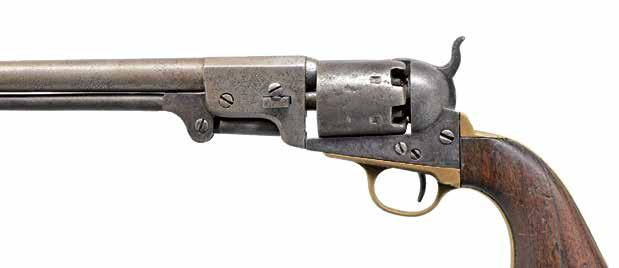






Accepting Consignments For Our Fall 2022 Premier Firearms & Militaria Auction Firearms & Militaria Auctioneers SOLD $19,375 Massive And Well Known Highest Quality Confederate D-Guard Bowie Ex-Flayderman Collection. (Est. $8,000-12,000) civilwar@poulinauctions.com | poulinauctions.com | 199 Skowhegan Rd, Fairfield, ME 04937 | 207-453-2114 Stephen Poulin, ME Lic # 1115 Or Better! Seller’s Commission On Expensive Items And Valuable Collections channel: Poulin Auctions on YouTube.com for more! 0% For more information, visit www.poulinauctions.com or call us at 207-453-2114 and become a consignor today! SOLD $18,800 Early Serial Number Confederate Spiller & Burr Revolver SN 119. (Est. $10,000-15,000) SOLD $25,850 Highest Serial Known For Confederate Rigdon & Ansley Revolver. S# 2352. (Est. $20,000-30,000) Highest Known Serial Number For Confederate Leech & Rigdon Revolver. S# 1461. (Est. $20,000-30,000) SOLD $24,675 Greensboro Georgia Manufactured Confederate Leech & Rigdon Revolver. (Est. $15,000-18,000) SOLD $23,500 SOLD $22,325 Confederate Brass Frame Griswold Revolver. (Est. $16,000-20,000) SOLD $12,925 Incredible, Massive Confederate Side Knife. (Est. $4,000-5,000) SOLD $17,625 Incredible “Pistol Grip” Confederate Closed Guard Bowie Knife. (Est. $4,000-5,000)
































































 by Leon Reed, Special to Civil War News
by Leon Reed, Special to Civil War News

















 Ed Bearss
Ed Bearss































































































 by Tim Talbott
by Tim Talbott







 by Stephen Davis
by Stephen Davis






















































































